Tea
How to submit an article:
- Registered users can submit any published journal article that has a unique DOI (Digital Object Identifier) name or link to Research Hub.
- For example, you can paste the full DOI link:
https://doi.org/10.1109/5.771073or just the DOI name:10.1109/5.771073into the field above and click submit. - The person who is first to submit a valid article to Research Hub will forever be credited for it, and every article submission earns you +6 Research Points.
Related Topics
Published research studies are articles that present the findings of original research that has undergone a peer-review process and has been made publicly available in scholarly journals, books or other media.
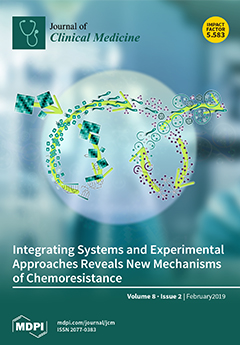
Efficacy of Omega-3 Intake in Managing Dry Eye Disease: A Systematic Review and Meta-Analysis of Randomized Controlled Trials
2023 Nov 10 Journal of Clinical Medicine Wang WX, Ko ML
Meta-Analysis Systematic Review Omega-3 Fatty Acids Eicosapentaenoic Acid Dry EyeOmega-3 fatty acid supplements can effectively alleviate symptoms of dry eye disease, especially when consumed in high doses for a long term and with high eicosapentaenoic acid levels.
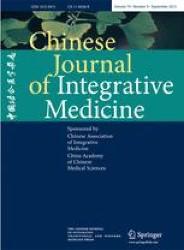
Pregnancy Benefit of Acupuncture on in vitro Fertilization: A Systematic Review and Meta-Analysis
2023 Oct 10 Chinese Journal of Integrative Medicine Zhang H, Zhang C, Ma P, Sun C, Sun C, Liu X, et al.
Systematic Review Meta-AnalysisAcupuncture may have a positive impact on clinical pregnancy rate and live birth rate in women undergoing in vitro fertilization (IVF), although the results are limited by the heterogeneity of the current evidence.
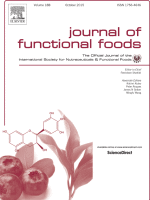
Effects of olive oil on hepatic steatosis and liver enzymes: A systematic review
2023 Oct Journal of Functional Foods Ma Y, Ding X, Gu J, Zhou S, Jiang Y
The systematic review concludes that olive oil, used for eating or cooking in randomized controlled trials, demonstrated significant reductions in hepatic steatosis grading through ultrasound and decreases in aspartate transaminase and alanine transaminase levels, suggesting promise in ameliorating hepatic steatosis. However, further investigations are needed to explore the potential effects of different olive oil types or olive polyphenols on chronic liver ailments.
Systematic Review Randomised Controlled Trial Olive Oil Fatty Liver Disease Type 2 Diabetes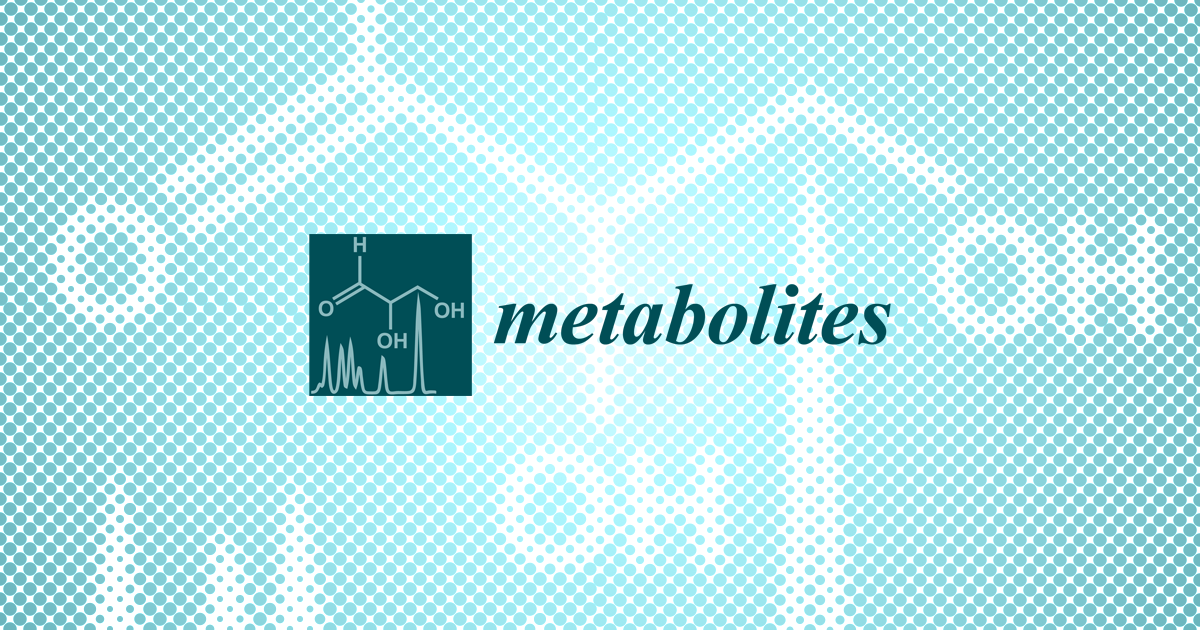
Supplementing Low-Sodium Bicarbonate–Calcic (Lete)® Water: Effects in Women on Bone and Systemic Metabolism
2023 Oct 24 Metabolites Marino C, Pagano I, Castaldo G, Grimaldi M, D’Elia M, Santoro A, et al.
Clinical Study MenopauseConsuming bicarbonate-calcium mineral water, low in sodium, can help manage calcium imbalance and support bone health in perimenopausal women.

Long-Term Consumption of Green Tea Can Reduce the Degree of Depression in Postmenopausal Women by Increasing Estradiol
2023 Oct 25 Nutrients Wan Z, Qin X, Tian Y, Ouyang F, Wang G, Wan Q
Cohort Study Depression Green Tea Anti-Inflammatory Sleep OestradiolLong-term consumption of green tea can potentially lessen the risk of depression in postmenopausal women by decreasing inflammation and boosting estradiol levels.
Research insights are moderated by the Research Hub team and offer an at-a-glance overview of interesting research findings.

2023 Journal of Clinical Medicine
Omega-3 fatty acid supplements can effectively alleviate symptoms of dry eye disease, especially when consumed in high doses for a long term and with high eicosapentaenoic acid levels.
Meta-Analysis Dry Eye Eicosapentaenoic Acid Omega-3 Fatty Acids
Efficacy of Omega-3 Intake in Managing Dry Eye Disease: A Systematic Review and Meta-Analysis of Randomized Controlled Trials
Wang WX, Ko ML

2023 Nutrients
Long-term consumption of green tea can potentially lessen the risk of depression in postmenopausal women by decreasing inflammation and boosting estradiol levels.
Cohort Study Anti-Inflammatory Depression Green Tea Oestradiol Sleep
Long-Term Consumption of Green Tea Can Reduce the Degree of Depression in Postmenopausal Women by Increasing Estradiol
Wan Z, Qin X, Tian Y, Ouyang F, Wang G, Wan Q

2023 Metabolites
Consuming bicarbonate-calcium mineral water, low in sodium, can help manage calcium imbalance and support bone health in perimenopausal women.
Clinical Study Menopause
Supplementing Low-Sodium Bicarbonate–Calcic (Lete)® Water: Effects in Women on Bone and Systemic Metabolism
Marino C, Pagano I, Castaldo G, Grimaldi M, D’Elia M, Santoro A, et al.

2023 Chinese Journal of Integrative Medicine
Acupuncture may have a positive impact on clinical pregnancy rate and live birth rate in women undergoing in vitro fertilization (IVF), although the results are limited by the heterogeneity of the current evidence.
Systematic Review
Pregnancy Benefit of Acupuncture on in vitro Fertilization: A Systematic Review and Meta-Analysis
Zhang H, Zhang C, Ma P, Sun C, Sun C, Liu X, et al.

2023 Nutrients
Theabrownin from dark tea can potentially reverse insulin resistance and regulate glycolipid metabolism, with longer fermented samples showing greater effects.
Experimental Study Insulin Resistance Oxidative Stress Theabrownin
Theabrownin from Dark Tea Ameliorates Insulin Resistance via Attenuating Oxidative Stress and Modulating IRS-1/PI3K/Akt Pathway in HepG2 Cells
Liu J, Wang X, Zhu Y, Deng H, Huang X, Jayavanth P, et al.
Review Articles
Review articles summarise and critically evaluate the current state of research on a specific topic or field by synthesising multiple primary research studies.

Efficacy of Omega-3 Intake in Managing Dry Eye Disease: A Systematic Review and Meta-Analysis of Randomized Controlled Trials
2023 Nov 10 Journal of Clinical Medicine Wang WX, Ko ML
Meta-Analysis Systematic Review Omega-3 Fatty Acids Eicosapentaenoic Acid Dry EyeOmega-3 fatty acid supplements can effectively alleviate symptoms of dry eye disease, especially when consumed in high doses for a long term and with high eicosapentaenoic acid levels.

Pregnancy Benefit of Acupuncture on in vitro Fertilization: A Systematic Review and Meta-Analysis
2023 Oct 10 Chinese Journal of Integrative Medicine Zhang H, Zhang C, Ma P, Sun C, Sun C, Liu X, et al.
Systematic Review Meta-AnalysisAcupuncture may have a positive impact on clinical pregnancy rate and live birth rate in women undergoing in vitro fertilization (IVF), although the results are limited by the heterogeneity of the current evidence.
Review(s) Completed, Editorial Evaluation Pending, as of 20 Oct 2021. —Ve-Vinn L 22 Oct 2021

Effects of olive oil on hepatic steatosis and liver enzymes: A systematic review
2023 Oct Journal of Functional Foods Ma Y, Ding X, Gu J, Zhou S, Jiang Y
The systematic review concludes that olive oil, used for eating or cooking in randomized controlled trials, demonstrated significant reductions in hepatic steatosis grading through ultrasound and decreases in aspartate transaminase and alanine transaminase levels, suggesting promise in ameliorating hepatic steatosis. However, further investigations are needed to explore the potential effects of different olive oil types or olive polyphenols on chronic liver ailments.
Systematic Review Randomised Controlled Trial Olive Oil Fatty Liver Disease Type 2 Diabetes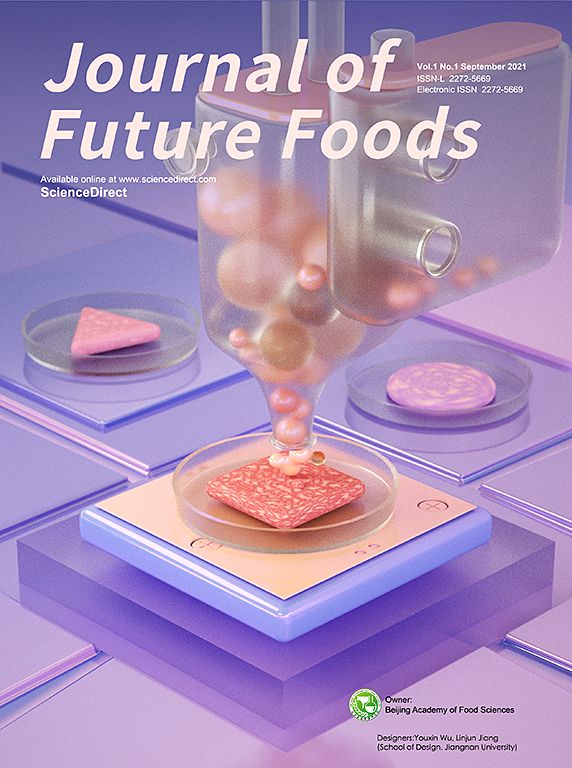
A review on the application, phytochemistry and pharmacology of Polygonatum odoratum, an edible medicinal plant
2023 Sep Journal of Future Foods Bi J, Fang H, Zhang J, Lu L, Gu X, Zheng Y
Through a comprehensive analysis of the chemical composition and pharmacological effects, it is presumed that the main active ingredients are homoisoflavanones, polysaccharides, saponins, and lectins, and the pharmacological effects are antitumour, anticancer, antioxidant, delayed aging activity, slowing senescence, relieving fatigue and immune regulation.
Review Article Yu Zhu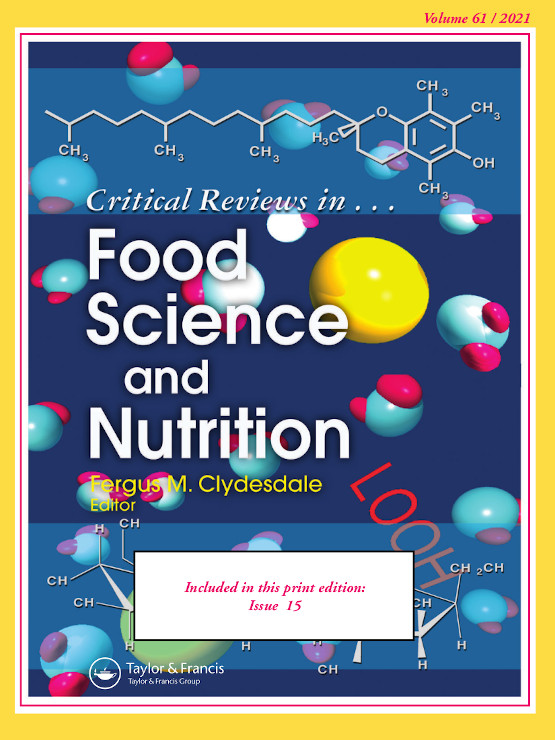
State-of-the-art review of theabrownins: from preparation, structural characterization to health-promoting benefits
2023 Aug 16 Critical Reviews in Food Science and Nutrition Cheng L, Wei Y, Peng L, Wei K, Liu Z, Wei X
Review ArticleTheabrownins, a major ingredient in dark tea, significantly contribute to multiple health benefits by modulating lipid metabolism, reducing weight gain, and preventing diseases, surpassing other tea types.
Clinical Trials
Clinical trials are research studies that involve people and are conducted to evaluate the safety and efficacy of new treatments or interventions, such as drugs, medical devices, or behavioural therapies.

Effects of olive oil on hepatic steatosis and liver enzymes: A systematic review
2023 Oct Journal of Functional Foods Ma Y, Ding X, Gu J, Zhou S, Jiang Y
The systematic review concludes that olive oil, used for eating or cooking in randomized controlled trials, demonstrated significant reductions in hepatic steatosis grading through ultrasound and decreases in aspartate transaminase and alanine transaminase levels, suggesting promise in ameliorating hepatic steatosis. However, further investigations are needed to explore the potential effects of different olive oil types or olive polyphenols on chronic liver ailments.
Systematic Review Randomised Controlled Trial Olive Oil Fatty Liver Disease Type 2 Diabetes
Pomegranate (Punica granatum L.) peel extract ameliorates metabolic syndrome risk factors in patients with non-alcoholic fatty liver disease: a randomized double-blind clinical trial
2023 Aug 22 Nutrition Journal Barghchi H, Milkarizi N, Belyani S, Norouzian Ostad A, Askari VR, Rajabzadeh F, et al.
Randomised Controlled TrialPomegranate peel extract, along with a calorie deficit diet, could improve risk factors of metabolic syndrome and reduce fatty liver in patients with non-alcoholic fatty liver disease.

The effects of acupuncture on clinical efficacy and steady-state visual evoked potentials in insomnia patients with emotional disorders: A randomized single-blind sham-controlled trial
2023 Jan 18 Frontiers in Neurology Leixiao Zhang, Yanli Deng, Ruting Hui, Yu Tang, Siyi Yu, Ying Li, et al.
Acupuncture have a good clinical effect on patients with insomnia and emotional disorders and have a significant regulatory effect on abnormally excited brain potentials.
Randomised Controlled Trial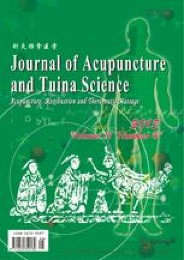
Efficacy of electroacupuncture for patients with dry eye syndromes: a randomized controlled trial
2022 Dec Journal of Acupuncture and Tuina Science Zhang D, Zhao Y, Yang Y, Liu X, Zhao Y, Shi Z, et al.
Both electroacupuncture (EA) and acupuncture alone effectively improve clinical symptoms, prolong tear film break-up time (TF-BUT), and enhance corneal sensitivity (CS) in DES patients. Additionally, both treatments significantly enhance QOL and reduce anxiety, with EA showing superior effectiveness in increasing tear secretion compared to acupuncture alone.
Randomised Controlled Trial Electroacupuncture Dry Eye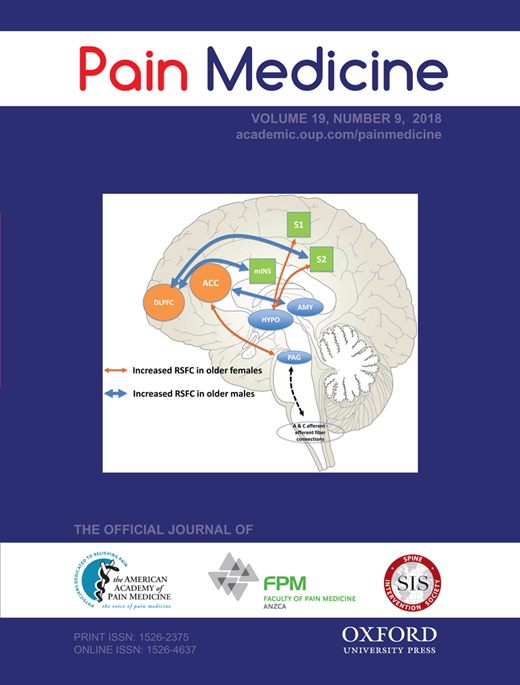
Traditional Acupuncture in Migraine: A Controlled, Randomized Study
2022 Sep 14 Pain Medicine Facco E, Liguori A, Petti F, Zanette G, Coluzzi F, De Nardin M, et al.
Randomised Controlled TrialTrue acupuncture treatment according to traditional Chinese medicine consistently improved migraine outcomes more than just medication or mock treatments.
Study Protocols
Published study protocols are detailed plans that outline the objectives, methodology, statistical analyses, and organisation of a research study that have been made publicly available for others to review and use as a reference.

Acupuncture and manual therapy for rotator cuff tears: A protocol for systematic review and meta analysis
2020 May 22 Medicine Tang H, Luo F, Fan H, Huang L, Liao S, Yu W, et al.
The research shows that acupuncture can reduce the sensitivity of tissue to pain and improve joint activity. It can reduce pain by enhancing exchange between rotator cuff cartilage fluids and increasing joint mobility. The study protocol will showcase effeciacy of acupuncture to relief pain for rotator cuff injuries.
Study Protocol
Moxibustion for the treatment of primary dysmenorrhea: Protocol for an overview of systematic reviews
2014 Jul Medicine Xu T, Hui L, Juan YL, Min SG, Hua WT.
Moxibustion and acupoint therapy can relieve pain effectively for individuals with primary dismenorrhea, and these treatments have advantages in overall efficiency. Because of limitations on the quantity and quality of the included studies and the lack of a large, multicenter study, the research team's conclusion has yet to be substantiated.
Study Protocol Women's HealthPresentation Slides

Meta-Analysis
Omega-3 fatty acid supplements can effectively alleviate symptoms of dry eye disease, especially when consumed in high doses for a long term and with high eicosapentaenoic acid levels.
Wang WX, Ko ML

Cohort Study
Long-term consumption of green tea can potentially lessen the risk of depression in postmenopausal women by decreasing inflammation and boosting estradiol levels.
Wan Z, Qin X, Tian Y, Ouyang F, Wang G, Wan Q

Clinical Study
Consuming bicarbonate-calcium mineral water, low in sodium, can help manage calcium imbalance and support bone health in perimenopausal women.
Marino C, Pagano I, Castaldo G, Grimaldi M, D’Elia M, Santoro A, Conte A, Molettieri P, Parisella C, Buonocore M, D’Ursi AM, Rastrelli L

Systematic Review
Acupuncture may have a positive impact on clinical pregnancy rate and live birth rate in women undergoing in vitro fertilization (IVF), although the results are limited by the heterogeneity of the current evidence.
Zhang H, Zhang C, Ma P, Sun C, Sun C, Liu X, Pu Z, Lin Y, Liu B, Liu C, Yan S

Experimental Study
Theabrownin from dark tea can potentially reverse insulin resistance and regulate glycolipid metabolism, with longer fermented samples showing greater effects.
Liu J, Wang X, Zhu Y, Deng H, Huang X, Jayavanth P, Xiao Y, Wu J, Jiao R

Randomised Controlled Trial
Pomegranate peel extract, along with a calorie deficit diet, could improve risk factors of metabolic syndrome and reduce fatty liver in patients with non-alcoholic fatty liver disease.
Barghchi H, Milkarizi N, Belyani S, Norouzian Ostad A, Askari VR, Rajabzadeh F, Goshayeshi L, Ghelichi Kheyrabadi SY, Razavidarmian M, Dehnavi Z, Sobhani SR, Nematy M

Review Article
Theabrownins, a major ingredient in dark tea, significantly contribute to multiple health benefits by modulating lipid metabolism, reducing weight gain, and preventing diseases, surpassing other tea types.
Cheng L, Wei Y, Peng L, Wei K, Liu Z, Wei X

Systematic Review
Natural calcium-rich mineral waters offer a bioavailable calcium source, beneficial for bone health, cardiovascular function, weight management, and overall well-being.
Pop MS, Cheregi DC, Onose G, Munteanu C, Popescu C, Rotariu M, Turnea MA, Dograru G, Ionescu EV, Oprea D, Iliescu MG, Minea M, Stanciu LE, Silișteanu SC, Oprea C

Animal Study
Jin Si Huang Ju tea, a traditional Chinese beverage, contains compounds that potentially reduce lipids, mitigate insulin resistance and reduce liver inflammation in vitro.
Li X, Li R, Wang X, Zhang X, Xiao Z, Wang H, Sun W, Yang H, Yu P, Hu Q, Guo Q, Sun H
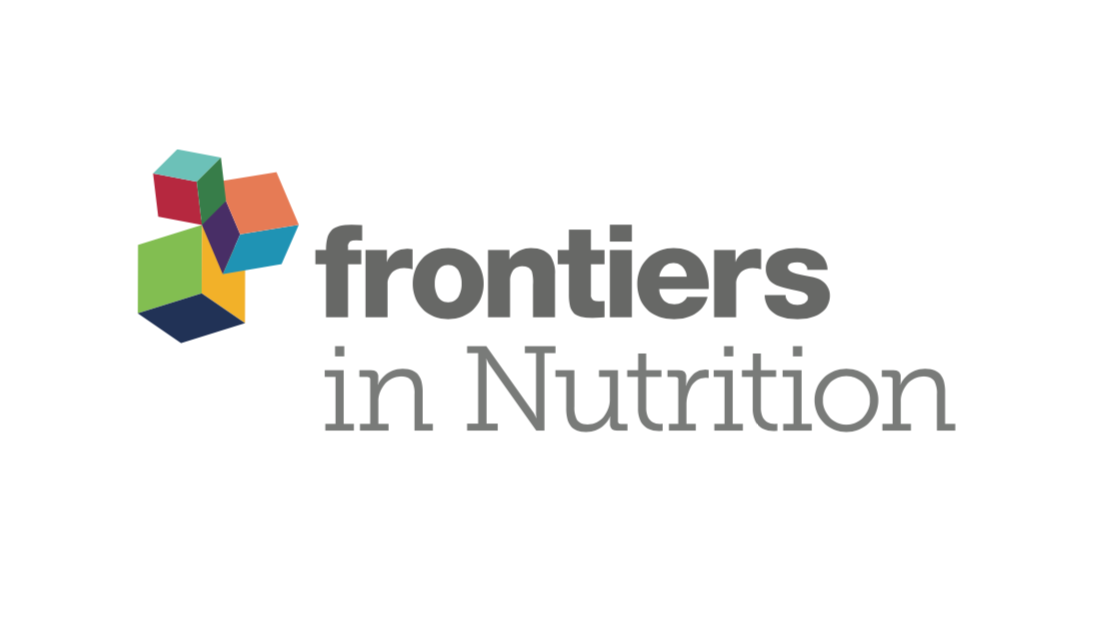
Review Article
Sardines, being an affordable source of Omega-3 and other cardioprotective nutrients, can potentially reduce the need for Omega-3 supplementation and manage cardiometabolic diseases.
Santos HO, May TL, Bueno AA

Review Article
Green tea helps alleviate symptoms in multiple benign gynecological disorders, primarily due to a compound called Epigallocatechin-3-gallate.
Hazimeh D, Massoud G, Parish M, Singh B, Segars J, Islam MS
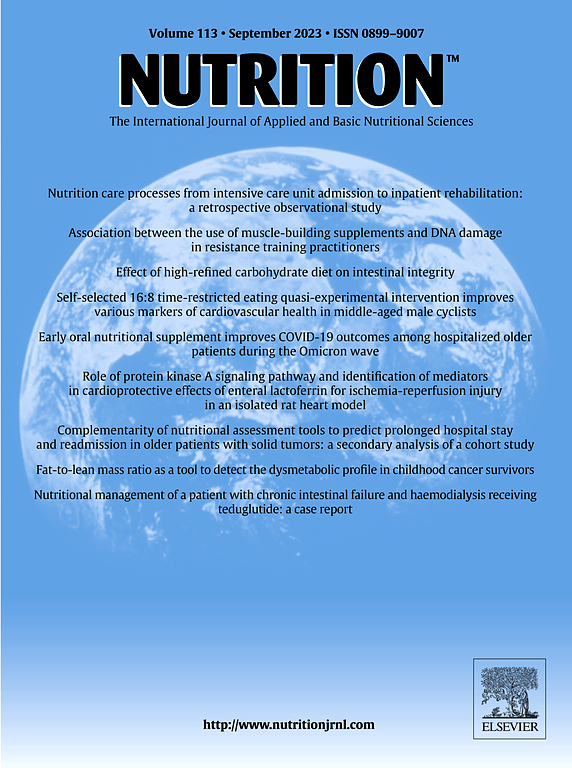
Systematic Review
Our dose-response analysis indicated that moderate green tea consumption (500–1000 mL/d) was associated with a 21% to 24% lower risk of stroke.
Wang ZM, Chen B, Zhou B, Zhao D, Wang LS

Cohort Study
Heavy coffee consumption increases the risk of cardiovascular disease mortality in individuals with severe hypertension, while green tea consumption does not.
Teramoto M, Yamagishi K, Muraki I, Tamakoshi A, Iso H
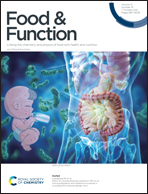
Experimental Study
Pu-erh tea can potentially prevent depression-like behaviors induced by nighttime blue light from electronic devices by reshaping gut microbiota and increasing short-chain fatty acids generation.
Zhao S, Hu S, Sun K, Luo L, Zeng L
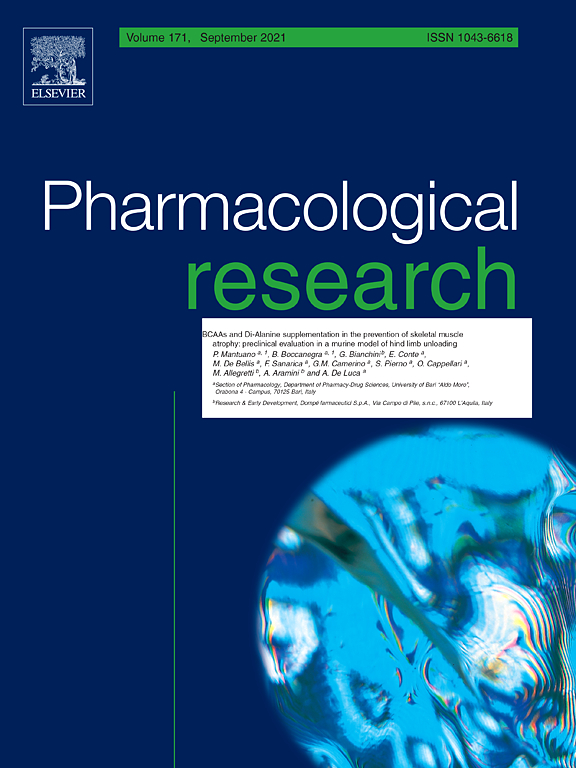
Review Article
Consumption of tea and coffee may possibly provide anti-inflammatory effects, contributing to reduced cardiovascular risk and mortality.
Surma S, Sahebkar A, Banach M
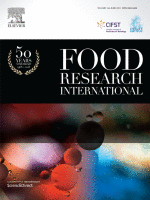
Animal Study
Pu-erh tea and its ingredient theabrownin improve liver, jejunum, and adipose tissue functions in metabolic syndrome mice, modulating circadian rhythm, glycerophospholipid, and linoleic acid metabolism.
Hou Y, Zhang Z, Cui Y, Peng C, Fan Y, Tan C, Wang Q, Liu Z, Gong J

Review Article
Green tea's catechins demonstrate therapeutic effects against neurodegenerative diseases via anti-inflammatory, antioxidant actions, and activating diverse brain cellular pathways.
Afzal O, Dalhat MH, Altamimi ASA, Rasool R, Alzarea SI, Almalki WH, Murtaza BN, Iftikhar S, Nadeem S, Nadeem MS, Kazmi I
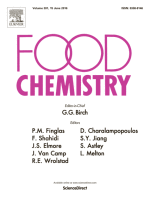
Experimental Study
Pu-erh tea, through the increase of Cinnabarinic acid, can improve obesity induced by circadian rhythm disorders by enhancing fat metabolism and altering gut microbes.
Hu S, Hu C, Luo L, Zhang H, Zhao S, Liu Z, Zeng L
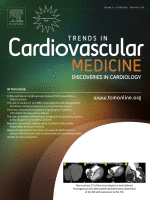
Review Article
Consuming 2-3 cups of coffee daily can help prevent cardiovascular disease and drinking at least 3 cups of green tea has similar benefits.
Chieng D, Kistler PM

Randomised Controlled Trial
True acupuncture treatment according to traditional Chinese medicine consistently improved migraine outcomes more than just medication or mock treatments.
Facco E, Liguori A, Petti F, Zanette G, Coluzzi F, De Nardin M, Mattia C

Review Article
Compounds found in green tea, especially EGCG, show significant anti-cancer activity and hold promise as potential anticancer drugs or adjuvants to standard chemotherapy.
Farhan M
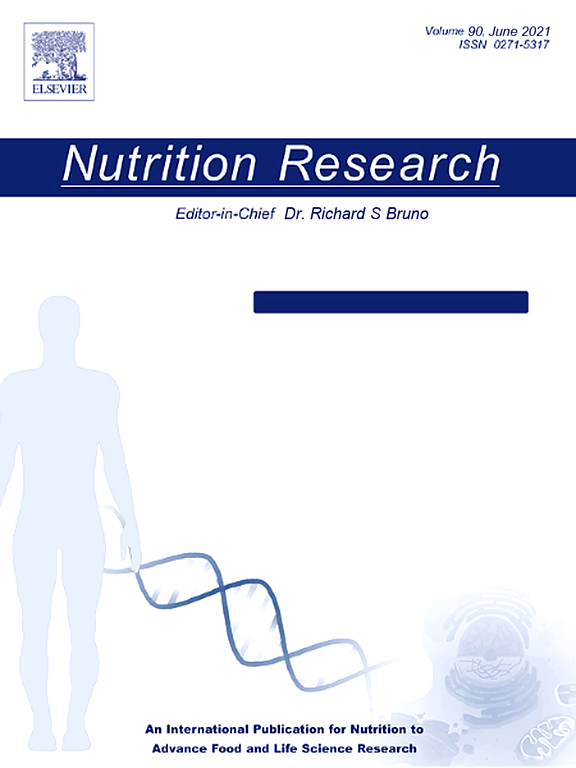
Meta-Analysis
Green tea supplementation can significantly reduce body weight in women with polycystic ovary syndrome, hence potentially beneficial in its clinical management.
Colonetti L, Grande AJ, Toreti IR, Ceretta LB, da Rosa MI, Colonetti T
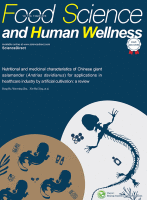
Systematic Review
Bioactive components in green tea have demonstrated potential neuroprotective effects and might play a role in preventing Alzheimer’s disease.
Lange KW, Lange KM, Nakamura Y

Animal Study
Cooked adzuki beans contribute notably to preventing obesity and regulating gut microbiota composition, while also alleviating systemic inflammation and metabolic disorders.
Zhao Q, Liu Z, Zhu Y, Wang H, Dai Z, Yang X, Ren X, Xue Y, Shen Q

Systematic Review
Higher daily tea consumption, especially green tea, is linked to a lower risk of cerebral hemorrhage in adults.
Cheng P, Zhang J, Liu W, Sun Q, Fu Z, Lin H, Bi S, Zhu J
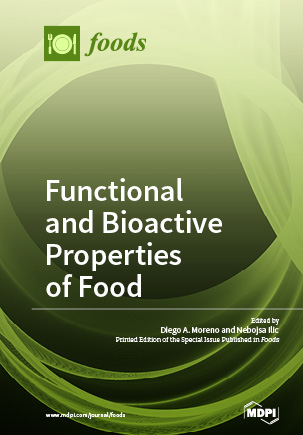
Animal Study
Pu-erh tea has been validated to have significant anti-oxidative effects, reducing serum MDA levels and increasing serum SOD and GSH-Px levels.
Yang CY, Hung KC, Yen YY, Liao HE, Lan SJ, Lin HC
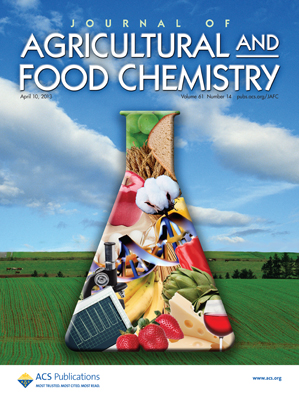
Experimental Study
Pu-erh tea may prevent circadian rhythm disorders by promoting tryptophan metabolism and signaling interactions in the gut-liver-brain axis.
Hu S, Luo L, Bian X, Liu RH, Zhao S, Chen Y, Sun K, Jiang J, Liu Z, Zeng L

Randomised Controlled Trial
Green tea extract, specifically epigallocatechin gallate, can inhibit tumor growth and enhance the quality of life in women suffering from uterine fibroids.
Badawy A, Shady NW, Maklad SMA, Ait-Allah AS
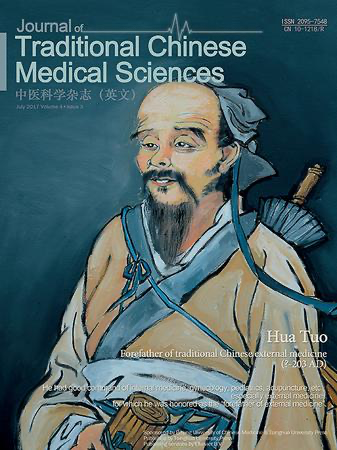
Review Article
Pu-erh tea possesses therapeutic mechanisms potentially beneficial for metabolic diseases due to its interaction with liver and gut microbiome.
Jia W, Rajani C, Lv A, Fan TP, Zheng X

Systematic Review
Higher consumption of coffee and specifically decaffeinated coffee raises the risk of rheumatoid arthritis, while caffeinated coffee, tea and caffeine intake doesn't.
Asoudeh F, Dashti F, Jayedi A, Hemmati A, Fadel A, Mohammadi H

Randomised Controlled Trial
Lemon juice boosts gastric secretions and emptying rate, and reduces blood sugar response to starchy food, potentially due to acid-inhibition of digestion enzyme in saliva.
Freitas D, Boué F, Benallaoua M, Airinei G, Benamouzig R, Lutton E, Jourdain L, Dubuisson RM, Maître X, Darrasse L, Le Feunteun S

Meta-Analysis
Tea supplements, especially green tea, significantly decrease fasting blood glucose and fasting insulin levels and reduce body weight in women with polycystic ovary syndrome.
Shen W, Pan Y, Jin B, Zhang Z, You T, Qu Y, Han M, Yuan X, Zhang Y
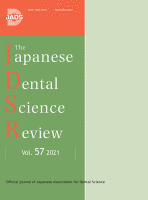
Systematic Review
Green tea treatment has shown potential in improving oral hygiene and gingival health, and reducing periodontitis and caries.
Mazur M, Ndokaj A, Jedlinski M, Ardan R, Bietolini S, Ottolenghi L
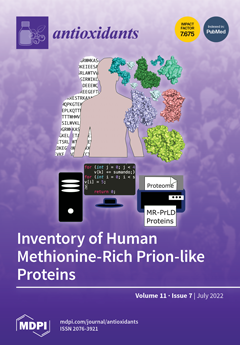
Systematic Review
Green tea supplementation improves total antioxidant capacity and impacts oxidative stress based on dose levels in adults.
Rasaei N, Asbaghi O, Samadi M, Setayesh L, Bagheri R, Gholami F, Soveid N, Casazza K, Wong A, Suzuki K, Mirzaei K
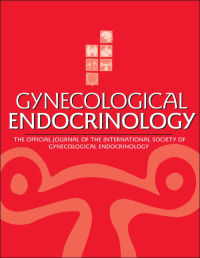
Clinical Study
Simultaneous administration of vitamin D and Epigallocatechin gallate significantly reduces the size of uterine fibroids in premenopausal women, and decreases menstrual flow duration.
Grandi G, Del Savio MC, Melotti C, Feliciello L, Facchinetti F

Review Article
Green tea and its component EGCG, demonstrate potential as a treatment for endometriosis by inhibiting growth, invasion, adhesion and angiogenesis.
Chen X, Man GCW, Hung SW, Zhang T, Fung LWY, Cheung CW, Chung JPW, Li TC, Wang CC
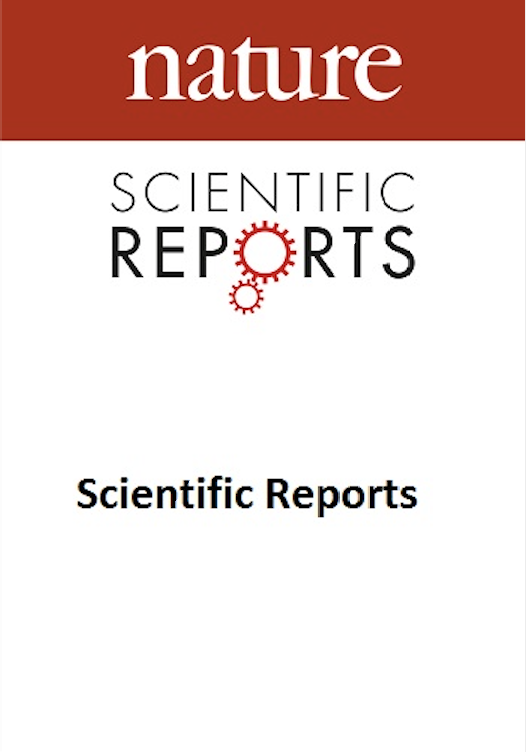
Clinical Study
Consumption of green tea enriched with a citrus polyphenol, α-glucosyl hesperidin, can prevent weight gain and reduce body mass index, especially in individuals under 50 years.
Yoshitomi R, Yamamoto M, Kumazoe M, Fujimura Y, Yonekura M, Shimamoto Y, Nakasone A, Kondo S, Hattori H, Haseda A, Nishihira J, Tachibana H
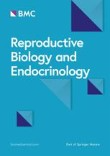
Systematic Review
Green tea extract could be considered a potential agent to attenuate PCOS complications mainly due to its effect on weight loss and glycemic levels.
Maleki V, Taheri E, Varshosaz P, Tabrizi FPF, Moludi J, Jafari-Vayghan H, Shadnoush M, Jabbari SHY, Seifoleslami M, Alizadeh M

Animal Study
Adzuki beans, when added to a high-fat diet, lessen obesity, improve liver function, enhance insulin sensitivity, and balance gut microbiota.
Zhao Q, Hou D, Fu Y, Xue Y, Guan X, Shen Q

Experimental Study
Co-fermentation of Ganpu tea with Chachi peel alters its chemical profile, reducing certain compounds while increasing others, thus enhancing its unique flavor.
Xu Y, Liang PL, Chen XL, Gong MJ, Zhang L, Qiu XH, Zhang J, Huang ZH, Xu W

Review Article
Pu-erh tea, with its complex components, interacts greatly with gut microbiomes and holds significant potential for healthcare applications.
Liu JY, He D, Xing YF, Zeng W, Ren K, Zhang C, Lu Y, Yang S, Ou SJ, Wang Y, Xing XH
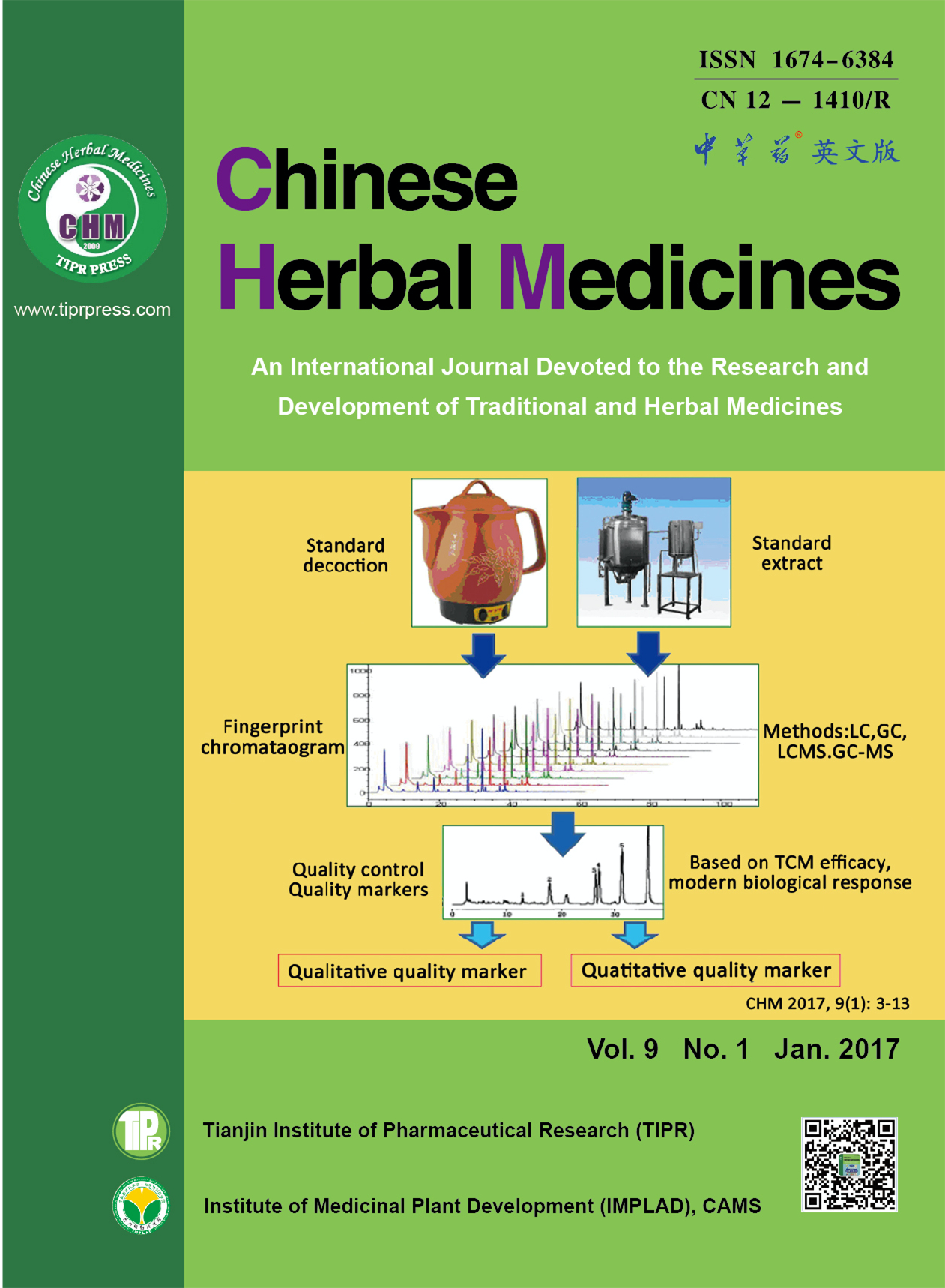
Network Pharmacology
Honeysuckle extract could provoke anaphylaxis and specific ingredients in honeysuckle potentially trigger this reaction.
Feng Y, Qin G, Jing Z, Wang Y, Zhou Y

Systematic Review
Green tea consumption has been found to be effective in preventing the contraction of influenza infections.
Rawangkan A, Kengkla K, Kanchanasurakit S, Duangjai A, Saokaew S
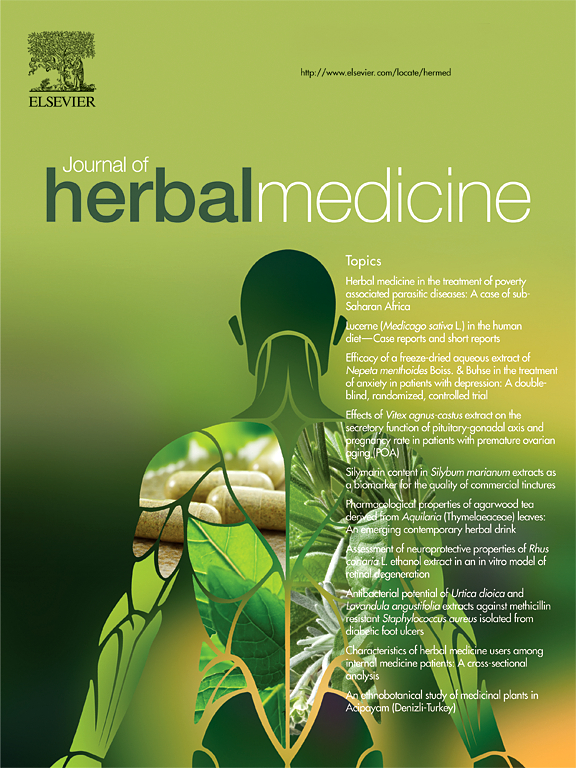
Clinical Study
Green tea therapy can significantly improve rheumatoid arthritis symptoms, correlating with changes in specific circulating serum molecules, miR-125b and miR-146a.
Al-Rawaf HA, Alghadir AH, Gabr SA

Review Article
There is a notable gap in scientific research on the potential health benefits and antioxidant activity of matcha tea compared to green tea.
Sivanesan I, Gopal J, Muthu M, Chun S, Oh JW
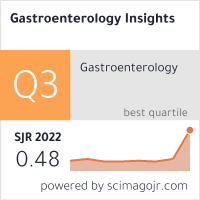
Review Article
Tea polyphenols can help rebalance gut microbiota, alleviating imbalances caused by obesity, diabetes, and UV damage, with effects varying by tea type.
Khairudin MAS, Mhd Jalil AM, Hussin N

Review Article
Green tea and its chief bioactive component have the potential to improve certain female reproductive disorders such as endometriosis, polycystic ovary syndrome, and dysmenorrhea.
Kamal DAM, Salamt N, Zaid SSM, Mokhtar MH
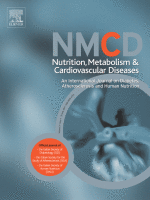
Systematic Review
Consumption of certain foods like rapeseed/canola oil, avocados, and turmeric can lead to moderate to large reductions in LDL cholesterol levels.
Schoeneck M, Iggman D

Review Article
Green tea, coffee, wine, and curry have beneficial health effects due to the polyphenols they contain, which possess both antioxidant and pro-oxidant properties.
Ohishi T, Fukutomi R, Shoji Y, Goto S, Isemura M
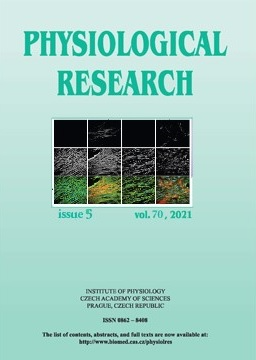
Review Article
Tea and coffee possess health promoting properties and can effectively prevent and treat metabolic disorders, including obesity, through the suppression of fat storage.
Sirotkin AV, Kolesarova A
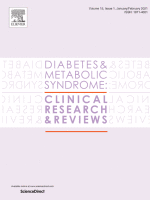
Systematic Review
The supplementary intake of green tea does not significantly affect blood glucose, fasting insulin, hemoglobin A1c, and insulin resistance in patients with type 2 diabetes mellitus.
Asbaghi O, Fouladvand F, Gonzalez MJ, Ashtary-Larky D, Choghakhori R, Abbasnezhad A

Review Article
Shaded gardening of Japanese matcha creates high-quality tea with unique compounds that can boost physical and mental health.
Kochman J, Jakubczyk K, Antoniewicz J, Mruk H, Janda K
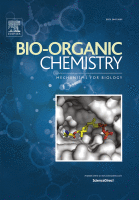
Experimental Study
Green tea polyphenolic compounds, (-)-epigallocatechin (EGC) and (-)-epicatechin-3-gallate (ECG), can diminish harmful Alzheimer's disease linked Aβ aggregates and ameliorate symptoms.
Chen T, Yang Y, Zhu S, Lu Y, Zhu L, Wang Y, Wang X

Randomised Controlled Trial
Daily supplementation of Matcha Green Tea Powder is found to enhance cognitive functions in elderly women.
Sakurai K, Shen C, Ezaki Y, Inamura N, Fukushima Y, Masuoka N, Hisatsune T
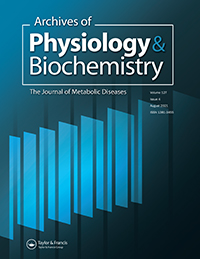
Systematic Review
Green tea supplementation raises adiponectin levels in patients with type 2 diabetes mellitus.
Asbaghi O, Fouladvand F, Ashtary-Larky D, Bagheri R, Choghakhori R, Wong A, Baker JS, Abbasnezhad A
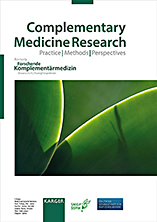
Systematic Review
Green tea consumption notably reduces body weight, body mass index, and body fat, especially in long-term use, at lower dosages, and among overweight individuals with type-2 diabetes.
Asbaghi O, Fouladvand F, Gonzalez MJ, Aghamohammadi V, Choghakhori R, Abbasnezhad A

Review Article
Catechins in green tea potentially counteract osteoporosis by negatively affecting bone loss processes and enhancing bone formation processes.
Huang HT, Cheng TL, Lin SY, Ho CJ, Chyu JY, Yang RS, Chen CH, Shen CL
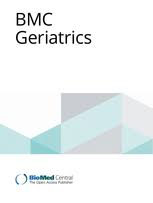
Cohort Study
Habitual and high-frequency tea consumption, particularly green tea, is associated with a reduced prevalence of cognitive impairment in middle-aged and older individuals.
Zhang J, Wang A, Zhang X, Chen S, Wu S, Zhao X, Zhang Q
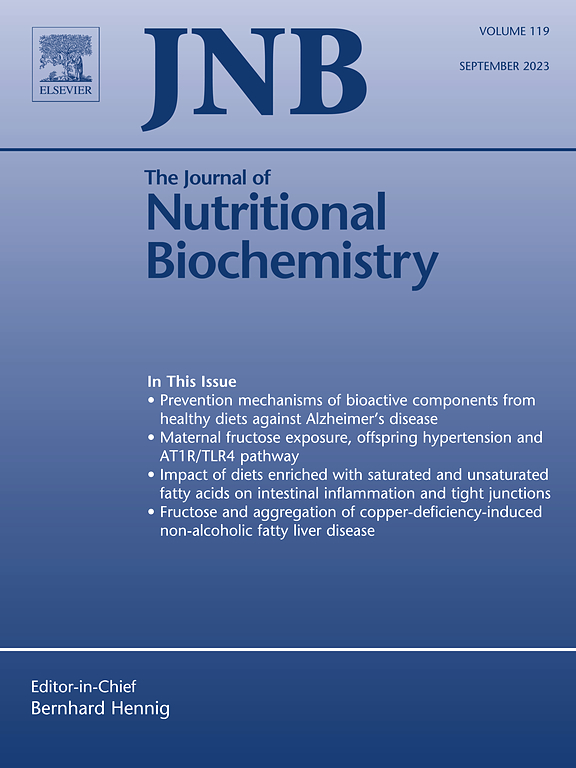
Review Article
Catechin-rich green tea extract (GTE) exercised anti-inflammatory activities can be beneficial in managing Nonalcoholic fatty liver disease (NAFLD) by reducing liver injury and gut-derived endotoxins.
Hodges JK, Sasaki GY, Bruno RS

Review Article
Green tea catechins potentially contribute to maintaining joint and skeletal muscle health, mitigating symptoms of osteoarthritis and sarcopenia.
Luk HY, Appell C, Chyu MC, Chen CH, Wang CY, Yang RS, Shen CL

Review Article
Beverages, through their diverse nutritional contents, have notable effects on rheumatoid arthritis progression by interacting with immune signaling pathways and altering the microbiome.
Dey M, Cutolo M, Nikiphorou E

Experimental Study
The major components of green tea and coffee, EGCG and CGA respectively, may have anti-cancer effects, though these effects seem to vary for different types of cancer.
Hayakawa S, Ohishi T, Miyoshi N, Oishi Y, Nakamura Y, Isemura M

Review Article
Many clinical and experimental studies suggest that Chinese herbal formula are effective in reducing fatty liver disease, and revolving inflammation via many mechanistic pathways.
Zhang Shuwei, Wong Yui-Tung, Tang Ka-Yu, Kwan Hiu-Yee, Su Tao

Randomised Controlled Trial
Daily consumption of decaffeinated green tea catechins may enhance working memory.
Baba Y, Inagaki S, Nakagawa S, Kaneko T, Kobayashi M, Takihara T

Systematic Review
The consumption of green tea significantly lowers low-density lipoprotein cholesterol and total cholesterol, but it does not affect high-density lipoprotein cholesterol or triglycerides.
Xu R, Yang K, Li S, Dai M, Chen G
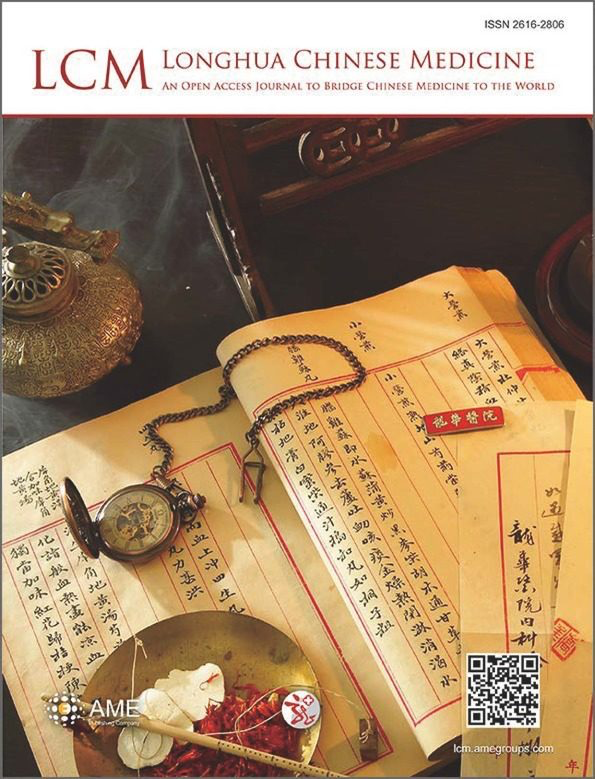
Review Article
Green tea and its compounds, especially catechins, may potentially prevent and treat osteoarthritis due to their potent antioxidant and anti-inflammatory properties.
Barbalho SM, Goulart RA, Buglio DS, Araujo AC, Guiguer EL

Review Article
Green tea polyphenols can potentially protect against neurodegenerative disorders like Parkinson's Disease through antioxidant, anti-inflammatory, and neuroprotective actions.
Malar DS, Prasanth MI, Brimson JM, Sharika R, Sivamaruthi BS, Chaiyasut C, Tencomnao T
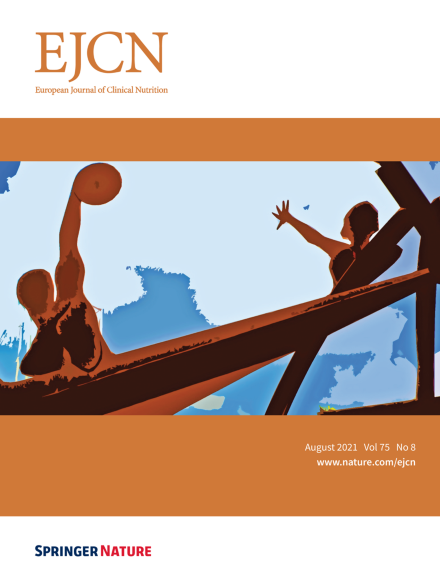
Systematic Review
The literature overall supports an inverse association between green tea and cardiovascular disease-related health outcomes, while the included meta-analyses generally suggested an inverse association between green tea and BMI-related and blood pressure outcomes.
Abe SK, Inoue M
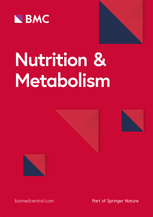
Systematic Review
Green tea supplementation significantly lowers fasting glucose levels but does not significantly affect fasting insulin and haemoglobin A1c values.
Xu R, Bai Y, Yang K, Chen G

Systematic Review
Green tea extract supplement intake reduces serum triglyceride and total cholesterol in patients with type 2 diabetes mellitus, especially when used long term.
Asbaghi O, Fouladvand F, Moradi S, Ashtary-Larky D, Choghakhori R, Abbasnezhad A

Systematic Review
Green tea catechins-containing mouthwash may potentially be a practical alternative to chlorhexidine due to its efficacy in plaque reduction and minimal side effects.
Gartenmann SJ, Steppacher SL, von Weydlich Y, Heumann C, Attin T, Schmidlin PR
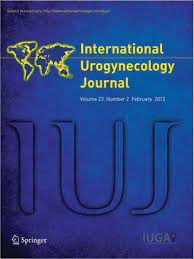
Systematic Review
Antenatal perineal massage reduces severe perineal trauma and postpartum complications.
Abdelhakim AM, Eldesouky E, Elmagd IA, Mohammed A, Farag EA, Mohammed AE, Hamam KM, Hussein AS, Ali AS, Keshta NHA, Hamza M, Samy A, Abdel-Latif AA

Daily consumption of coffee and green tea is linked with decreased body mass index, body fat percentage, and cardiovascular risks in middle-aged Japanese women.
Yonekura Y, Terauchi M, Hirose A, Odai T, Kato K, Miyasaka N
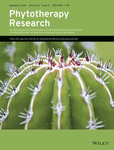
Systematic Review
Green tea intake can significantly reduce body weight, body mass index and waist circumference, with the greatest effect seen with lower dosages and shorter treatment durations.
Lin Y, Shi D, Su B, Wei J, Găman MA, Sedanur Macit M, Borges do Nascimento IJ, Guimaraes NS

Network Pharmacology
The antioxidant potential and substance levels in Matcha tea is affected by the harvest period and water temperature used for preparation.
Jakubczyk K, Kochman J, Kwiatkowska A, Kałduńska J, Dec K, Kawczuga D, Janda K

Randomised Controlled Trial
Lemon juice, but not black tea, can lower and delay the blood glucose concentration peak after consuming bread.
Freitas D, Boué F, Benallaoua M, Airinei G, Benamouzig R, Le Feunteun S

Systematic Review
Green tea, containing antioxidative catechins, may possess some beneficial effects in reducing the risk of specific types of cancer.
Filippini T, Malavolti M, Borrelli F, Izzo AA, Fairweather-Tait SJ, Horneber M, Vinceti M

Systematic Review
Green tea influences liver enzymes differently based on an individual's health status, reducing levels in patients with Nonalcoholic Fatty Liver Disease, but slightly increasing levels in healthy subjects.
Mahmoodi M, Hosseini R, Kazemi A, Ofori‐Asenso R, Mazidi M, Mazloomi SM

Clinical Study
Green tea intake can significantly reduce both systolic and diastolic blood pressure.
Xu R, Yang K, Ding J, Chen G

Network Pharmacology
Ganpu tea, derived from Pu-erh tea and the pericarp of Chachi, enhances antioxidant capacities and modulates gut microbiota beneficially more than Pu-erh tea alone.
Zheng Y, Zeng X, Chen T, Peng W, Su W
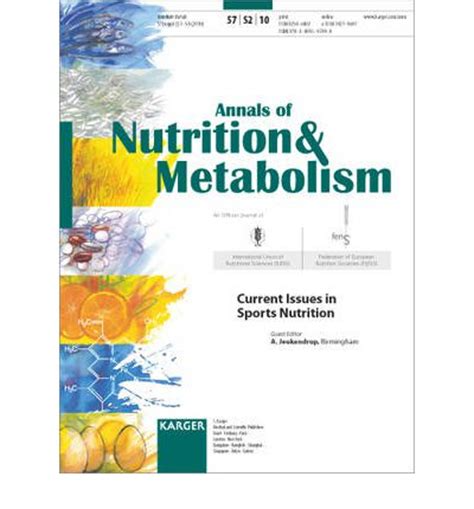
Cohort Study
High tea consumption is inversely associated with disease activity in rheumatoid arthritis, particularly beneficial in female patients, non-smokers, and elders.
Jin J, Li J, Gan Y, Liu J, Zhao X, Chen J, Zhang R, Zhong Y, Chen X, Wu L, Xiang X, Zhou Y, He J, Li R, Guo J, Li Z

Experimental Study
Pu-erh tea's ability to lower blood pressure is primarily due to theabrownins and caffeine, which cause vasodilation irrespective of the endothelium.
Luo Dan, Chen Xuejiao, Zhu Xu, Liu Shuang, Li Jie, Xu Jianping, Zhao Jinhua, Ji Xu

Experimental Study
Pu-erh tea was found to lower triglyceride and total cholesterol levels more significantly than green, oolong, or black teas.
Huang, F., Zheng, X., Ma, X. et al.

Systematic Review
The results of manual, traditional and non-invasive therapies are similar to those of surgical treatments, and even better in a very large number of cases.
Glazer C, Pantea C
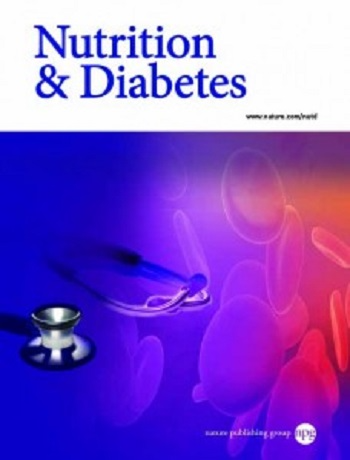
Systematic Review
Pu-erh tea has considerable inhibitory effects on alpha-amylase and alpha-glucosidase, indicating potential anti-hyperglycemic benefits.
Yang, CY., Yen, YY., Hung, KC. et al.

Review Article
Chrysanthemum, rich in unique chemical compounds, offers significant health benefits such as stress relief, cardio protection, immunity boost, improved eye health, and osteoporosis risk reduction.
SHAHRAJABIAN, M. H., SUN, W., ZANDI, P., CHENG, Q.

Randomised Controlled Trial
Our study offers the first evidence of the positive contribution of tea drinking to brain structure and suggests a protective effect on age-related decline in brain organisation.
Li J, Romero-Garcia R, Suckling J, Feng L.

Meta-Analysis
Polyunsaturated fatty acids treatment shows improved outcomes for patients with nonspecific typical dry eye disease, in particular as a short-term intervention.
Chi SC, Tuan HI, Kang YN
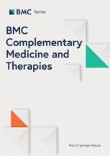
Systematic Review
Acupuncture shows promise in improving endometrial receptivity and fertility outcomes in infertile women, but further high-quality research is needed to establish its effectiveness definitively.
Zhong, Y., Zeng, F., Liu, W. et al.

Network Pharmacology
Raw pu-erh tea extract has superior antioxidant capacity due to higher polyphenol content, but ripe pu-erh offers a cheaper, yet effective alternative for antioxidant or antimicrobial properties.
Roda G, Marinello C, Grassi A, et al.
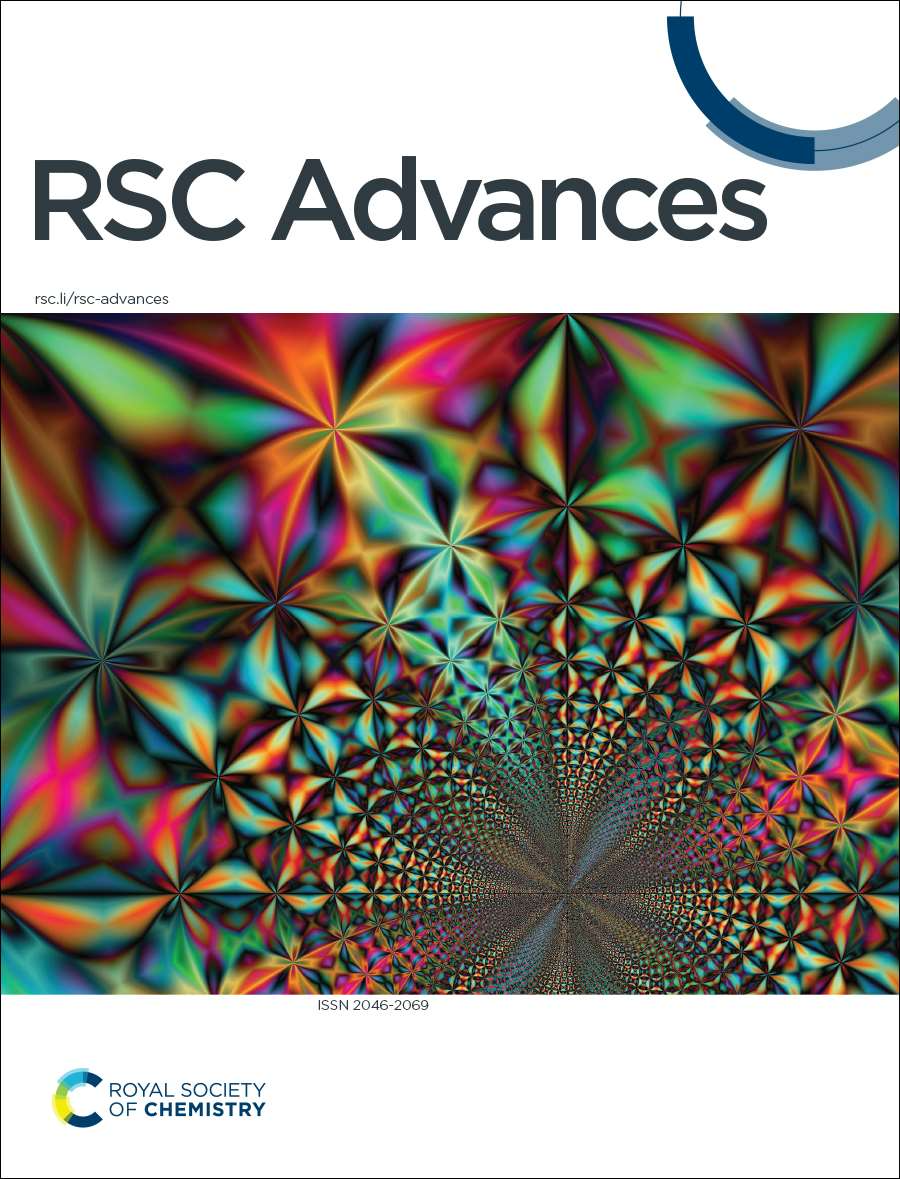
Animal Study
Ripened Pu-erh tea extract demonstrates a stronger anti-diabetic impact than raw Pu-erh tea extract, potentially due to the fermentation process and its probiotic benefits to certain gut bacteria.
Qianzhi Ding, Wei Zheng, Bowei Zhang, Xiaojuan Chen, Jie Zhang, Xu Pang, Yong Zhang, Dexian Jia, Surui Pei Yuesheng Dong Baiping Ma
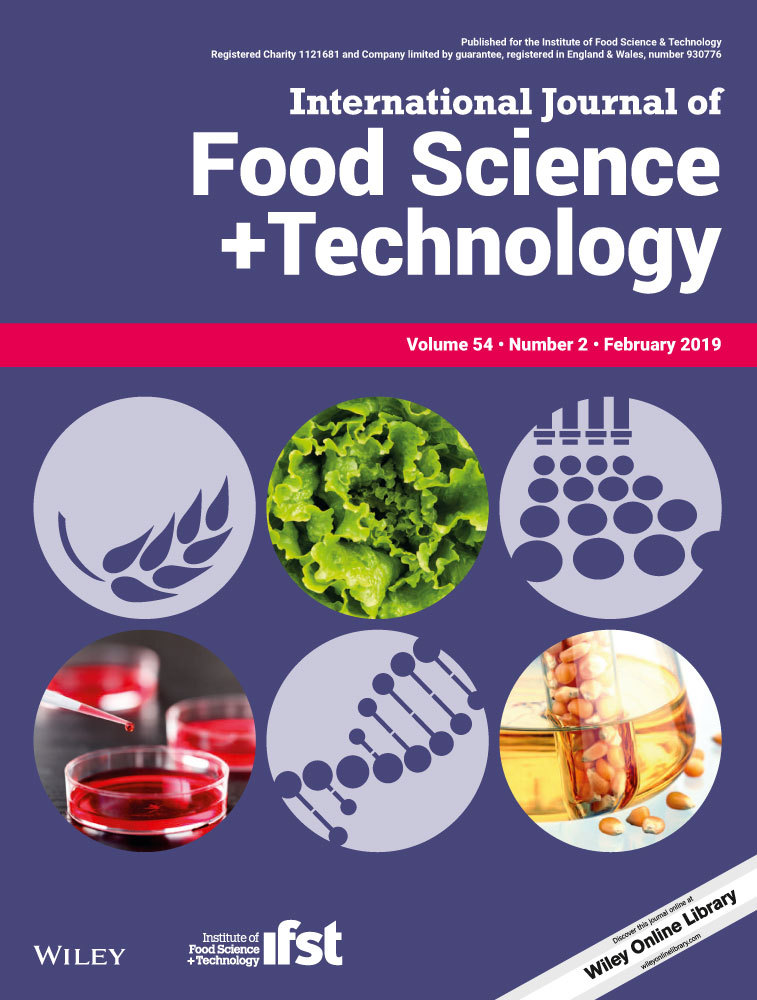
Animal Study
Pu-erh tea has a significant anti-hyperglycaemic effect, with its efficacy increasing over time and with higher dosages.
Lin, H.-C., Lee, C.-T., Yen, Y.-Y., Chu, C.-L., Hsieh, Y.-P., Yang, C.-S. and Lan, S.-J.

Network Pharmacology
The purple chrysanthemum tea, imbued with unique antioxidants and affected by infusion time, showed comparatively higher antioxidant activity than the yellow chrysanthemum.
Han AR, Nam B, Kim BR, Lee KC, Song BS, Kim SH, Kim JB, Jin CH.

Systematic Review
Acupuncture relieved hepatic steatosis and reduced total cholesterol and triglyceride in non-alcoholic fatty liver disease patients.
Joon Hyun, Joo-bok Lee, So-yeon Kim, Chang-woo Han

Experimental Study
Matcha green tea potentially inhibits the growth of breast cancer cells by disrupting metabolic action within the cells and reprogramming their activities.
Bonuccelli G, Sotgia F, Lisanti MP

Review Article
Tea catechins, found in green tea, may reduce the rates of influenza infection and diminish certain cold symptoms.
Furushima D, Ide K, Yamada H
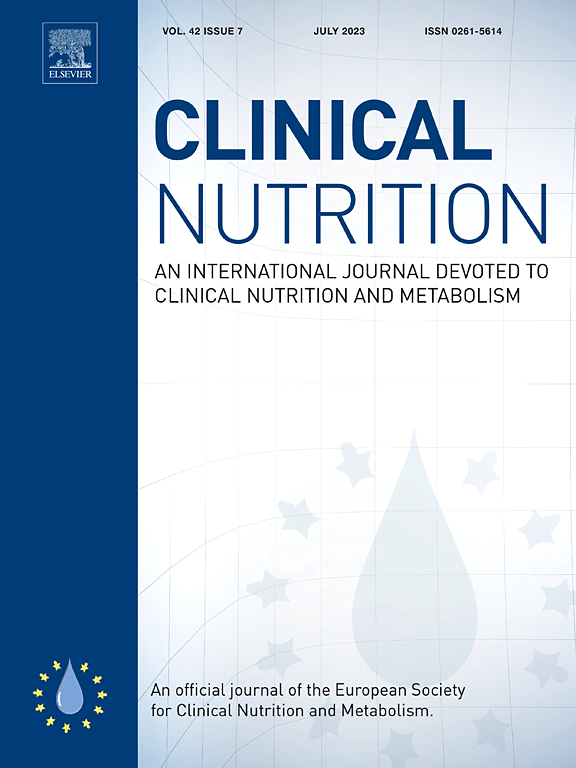
Randomised Controlled Trial
Green tea extract can potentially control pain and improve knee joint physical function in adults suffering from osteoarthritis.
Hashempur MH, Sadrneshin S, Mosavat SH, Ashraf A
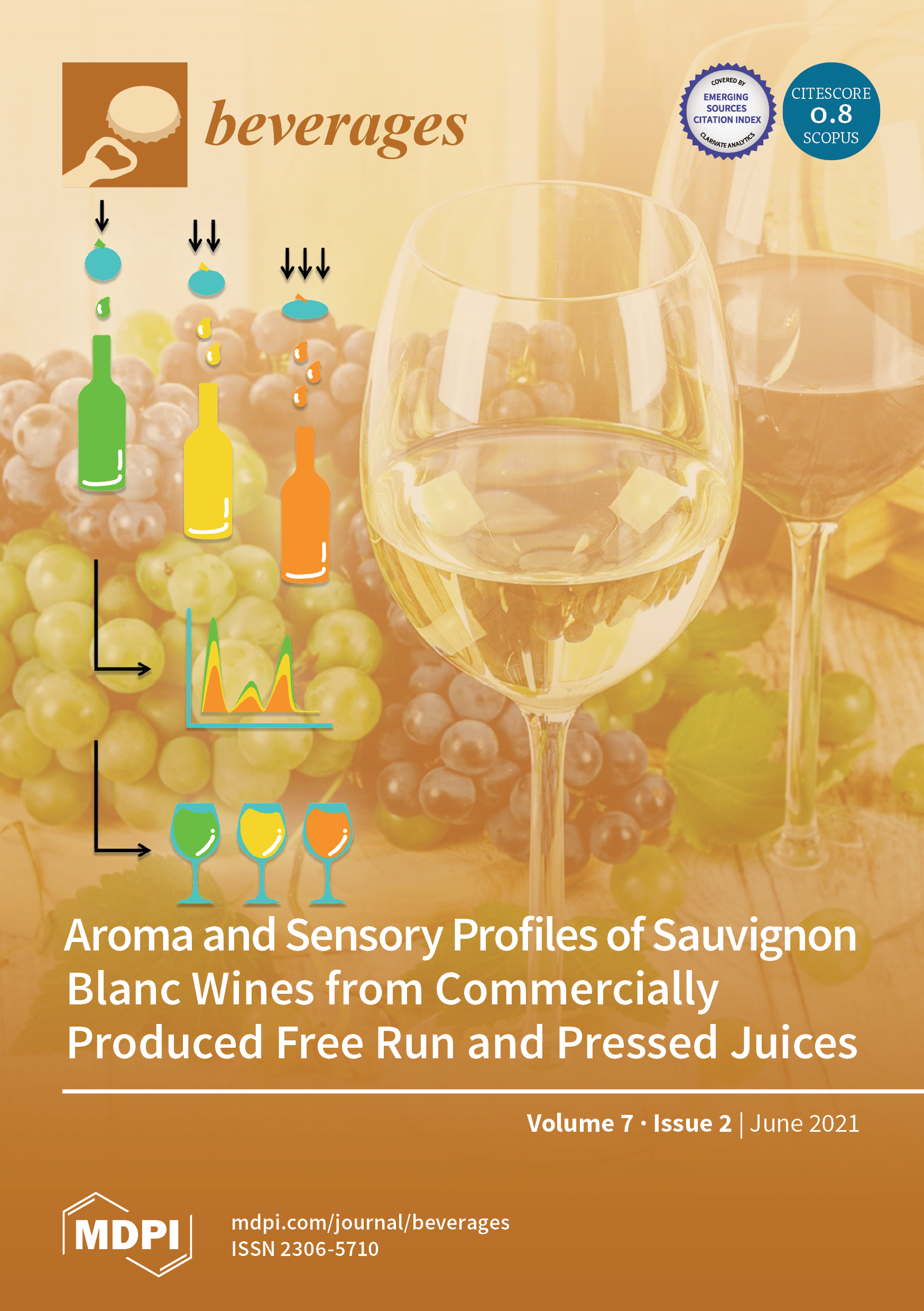
Systematic Review
Among the health benefits of green tea are: anticarcinogenic, anti-inflammatory, antimicrobial, and antioxidant properties, and benefits in cardiovascular disease and oral health.
Wanda C. Reygaert
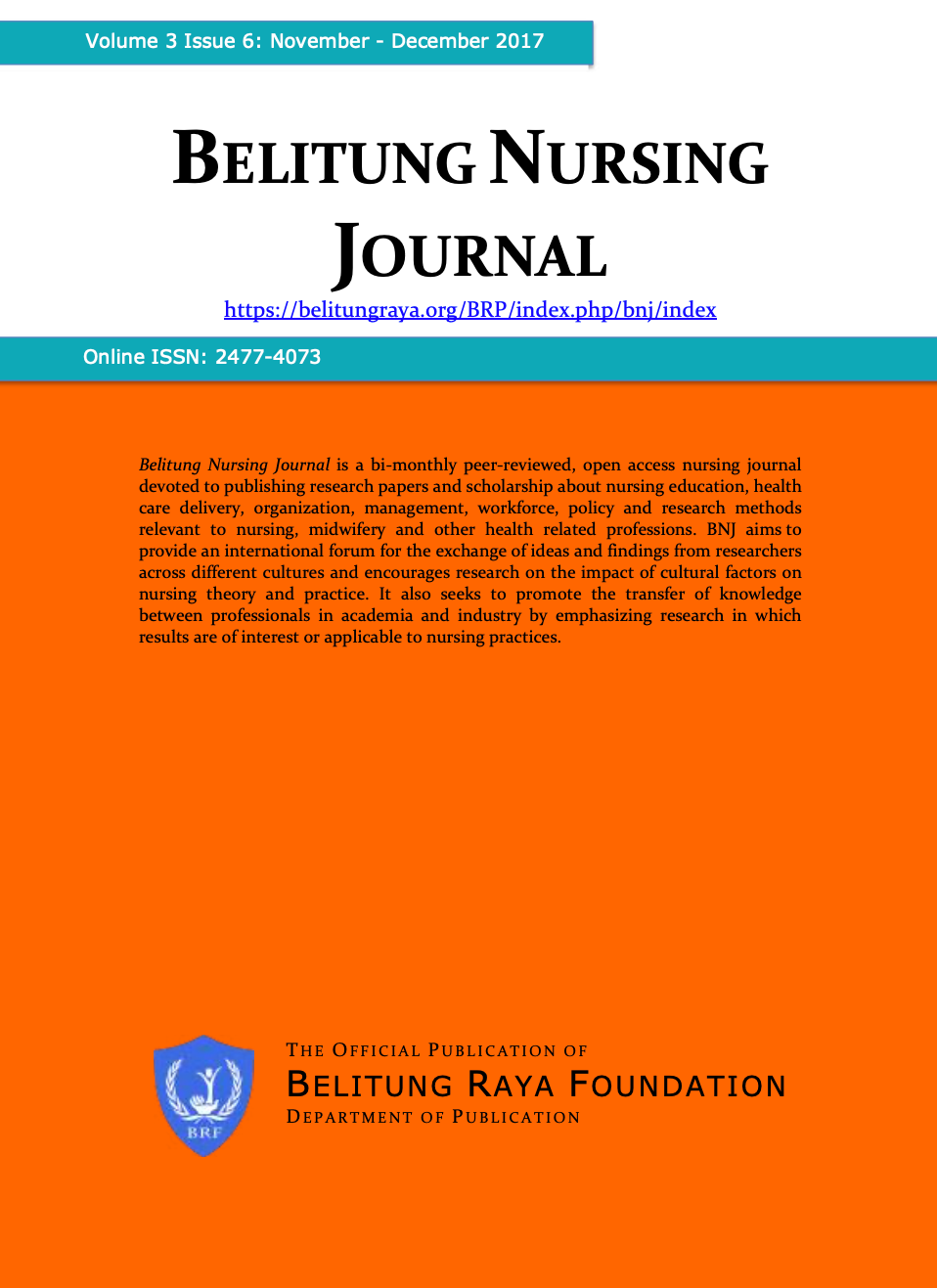
Randomised Controlled Trial
Dark chocolate could reduce menstrual pain significantly in late adolescents.
Maharani SI, Pramono N, Wahyuni S
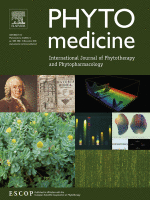
Systematic Review
Green tea consumption was shown to reduce psychopathological symptoms like anxiety and was also shown to effect cognition, with noted benefits for memory and attention. Green tea was also linked with the activation of working memory as seen in functional MRI.
Mancini E, Beglinger C, Drewe J, Zanchi D, Lang UE, Borgwardt S

Review Article
Kiwifruits can relieve constipation and irritable bowel syndrome, potentially through protease-activated signaling, modulation of microflora, changes in colonic methane, bile flux, or mediation of inflammatory processes.
Bayer SB, Gearry RB, Drummond LN
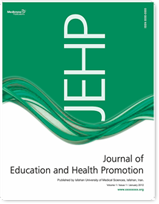
Randomised Controlled Trial
Green tea consumption leads to weight loss and decreased levels of fasting insulin and free testosterone in overweight women with polycystic ovarian syndrome.
Tehrani HG, Allahdadian M, Zarre F, Ranjbar H, Allahdadian F
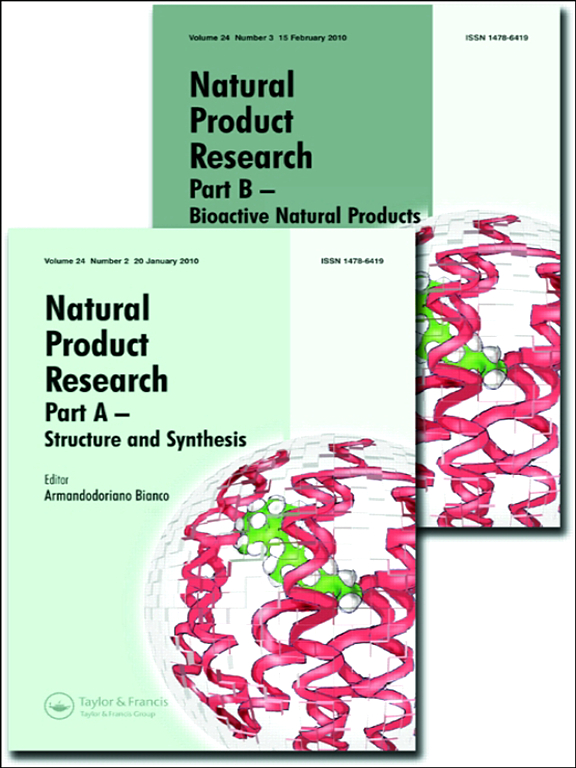
Experimental Study
Pumpkin seeds have a higher total phenolic compound content, but phenolic compounds from amaranth grains show stronger antiradical properties.
Peiretti PG, Meineri G, Gai F, Longato E, Amarowicz R

Experimental Study
When combined, Silibinin and Pu-erh tea extract prove more effective in preventing non-alcoholic fatty liver disease than when used individually.
Wen-Yi Hu, Xiao-Hui Ma, Wang-Yi Zhou, Xin-Xin Li, Ting-Ting Sun, He Sun

Experimental Study
Pu-erh tea water extracts could potentially enhance liver health and reduce oxidative stress in rats on a high-fat diet.
Jingjing Su, Xueqing Wang, Wenjun Song, Xiaoli Bai, Changwen Li
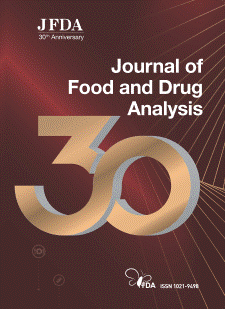
Experimental Study
Strictinin, the major phenolic compound in Pu'er teas, shows potential as a natural antibiotic and laxative but has greater inhibitory concentrations than some commercial antibiotics.
Hsieh SK, Xu JR, Lin NH, Li YC, Chen GH, Kuo PC, Chen WY, Tzen JTC

Experimental Study
Pu-erh tea's fermentation process alters its microbial community, with aging significantly impacting raw but not ripened Pu-erh, and toxic metabolites present support brewing customs.
Zhang Y, Skaar I, Sulyok M, Liu X, Rao M, et al.
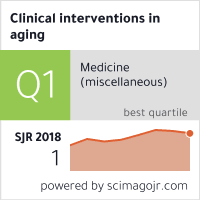
Randomised Controlled Trial
Daily consumption of Puer tea extract results in significant weight loss, reduced body fat, and improved lipid profile in a non-Asian overweight population.
Jensen GS, Beaman JL, He Y, Guo Z, Sun H.
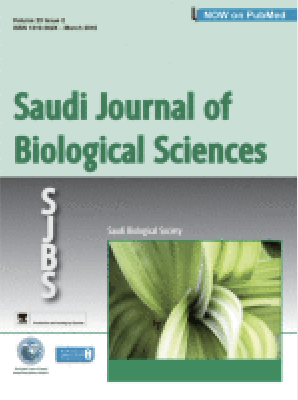
Coix extracts have anti-colorectal cancer potential.
Manosroi, A., Sainakham, M., Chankhampan, C., Manosroi, W., & Manosroi, J.

Systematic Review
There is moderate‐quality evidence from individual studies suggesting that acupuncture improved pelvic pain more than usual prenatal care.
Liddle SD, Pennick V
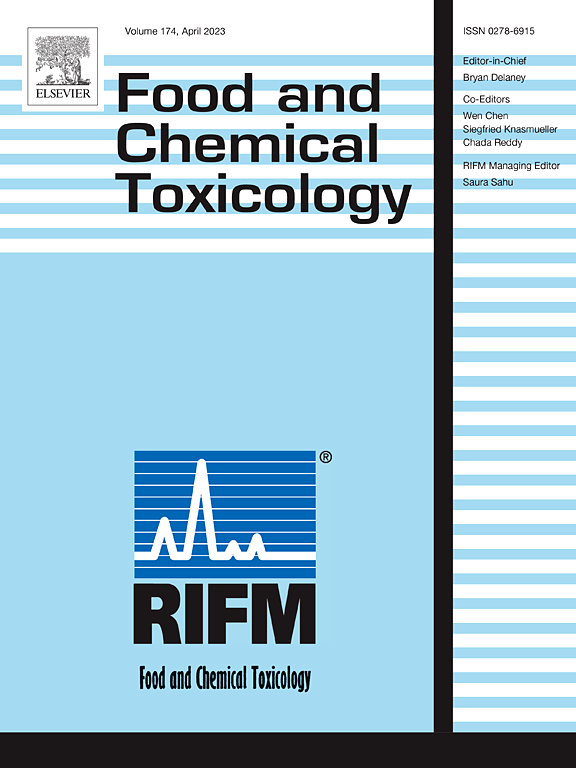
Randomised Controlled Trial
Green tea extract consumption can potentially cause mild adverse reactions, notably nausea, skin conditions, and increased alanine aminotransferase levels.
Dostal AM, Samavat H, Bedell S, Torkelson C, Wang R, Swenson K, Le C, Wu AH, Ursin G, Yuan JM, Kurzer MS

Randomised Controlled Trial
Consuming dark chocolate every day for two weeks before menstruation significantly reduced symptoms of premenstrual syndrome in women aged 18-22, showing improvements in anxiety, fatigue, abdominal cramps, bloating, and other related symptoms.
Nurazizah E, Tih F, Suwindere W
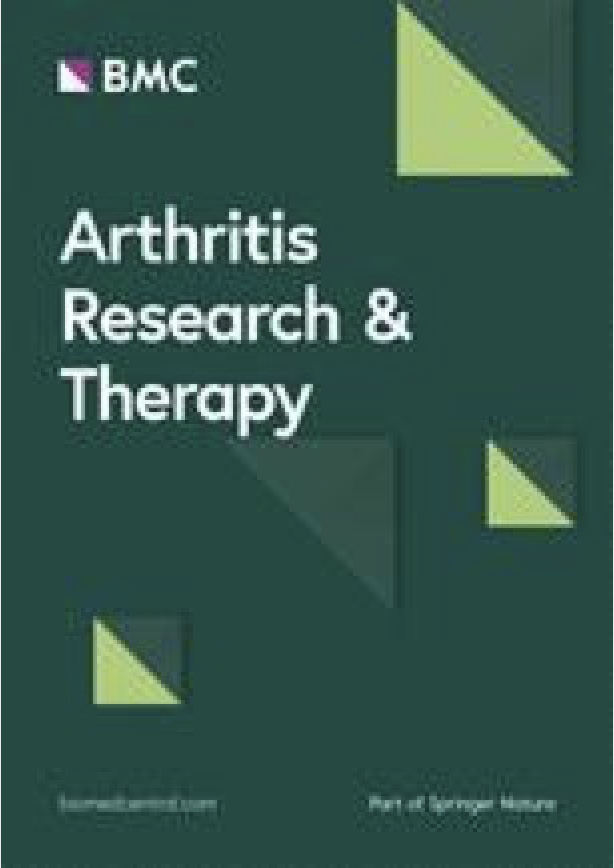
Experimental Study
Epigallocatechin 3-gallate (EGCG), found in green tea, can significantly slow down osteoarthritis progression and reduce associated pain in a post-traumatic osteoarthritis mouse model.
Leong DJ, Choudhury M, Hanstein R, Hirsh DM, Kim SJ, Majeska RJ, Schaffler MB, Hardin JA, Spray DC, Goldring MB, Cobelli NJ, Sun HB

Randomised Controlled Trial
Drinking 1 liter of Hépar, a magnesium sulfate-rich mineral water, daily reduces constipation and hard or lumpy stools more effectively than low-mineral water in women.
Dupont C, Campagne A, Constant F

Network Pharmacology
The consumption of kiwifruit with a meal can increase the rate and extent of the hydrolysis of protein.
Donaldson B, Rush E, Young O, Winger R
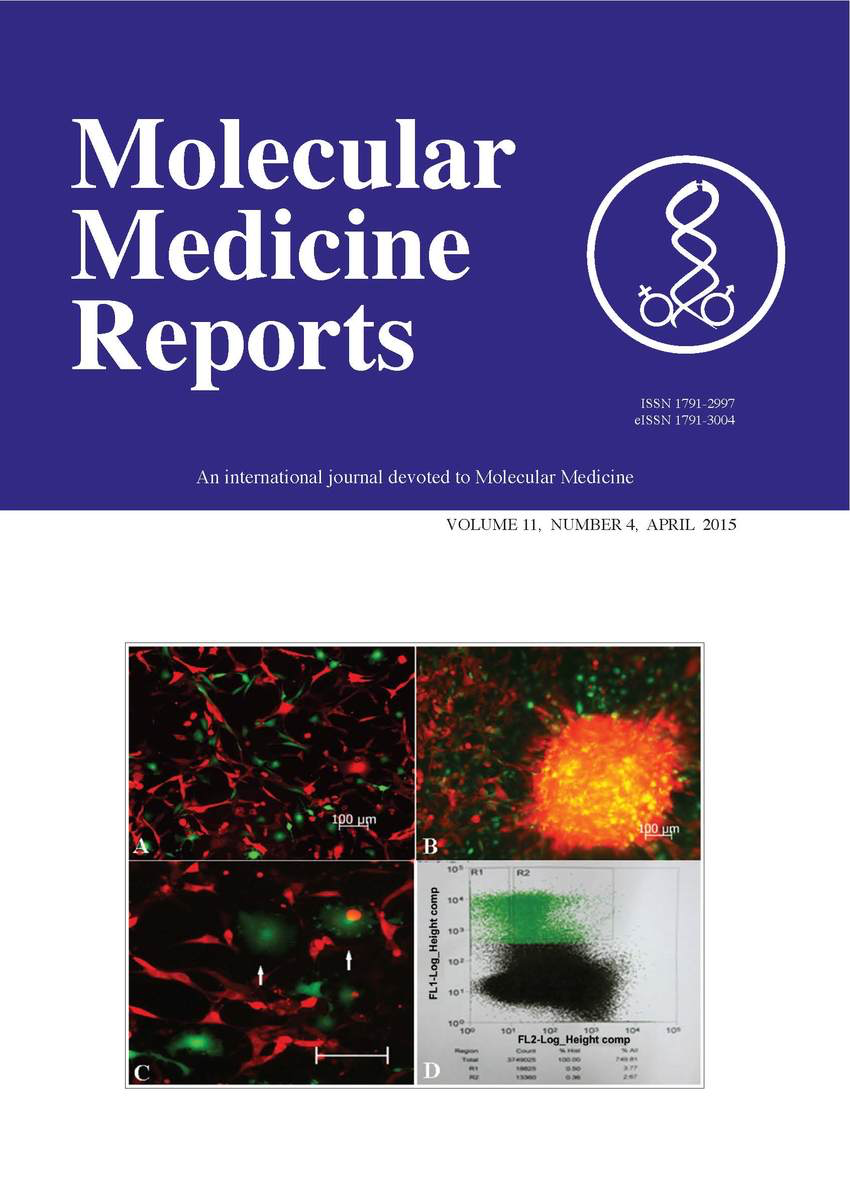
Experimental Study
Consumption of Pu-erh tea can effectively alleviate symptoms of constipation, with effects comparable to the medicinal drug bisacodyl.
LI GUIJIE, WANG QIANG, QIAN YU, ZHOU YALIN, WANG RUI, ZHAO XIN

Randomised Controlled Trial
Consumption of fenugreek herbal tea and palm dates appears useful in enhancing breast milk production during the initial postpartum period.
El Sakka A, Salama M, Salama K
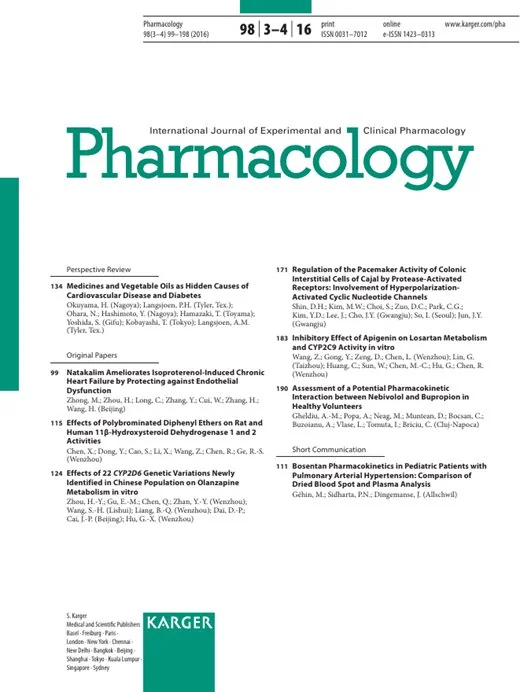
Systematic Review
Green tea polyphenols may enhance effectiveness of specific breast cancer endocrine treatments through both estrogen-dependent and -independent mechanisms.
Yiannakopoulou EC
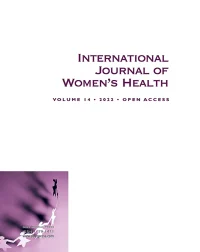
Randomised Controlled Trial
Green tea extract has shown promising results in reducing uterine fibroid volume, fibroid-related symptoms, and improving quality of life in women with symptomatic uterine fibroids.
Roshdy E, Rajaratnam V, Maitra S, Sabry M, Ait Allah AS, Al-Hendy A

Experimental Study
Pomegranate juice can enhance memory function and brain activity in tasks related to verbal and visual memory in older adults experiencing memory problems.
Bookheimer SY, Renner BA, Ekstrom A, Li Z, Henning SM, Brown JA, Jones M, Moody T, Small GW
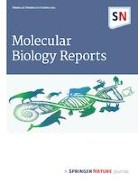
Systematic Review
Traditional Chinese medicines had a better effect on the normalization of alanine aminotransferase and disappearance of radiological steatosis in the treatment of non-alcoholic fatty liver disease.
Shi KQ, Fan YC, Liu WY, Li LF, Chen YP, Zheng MH
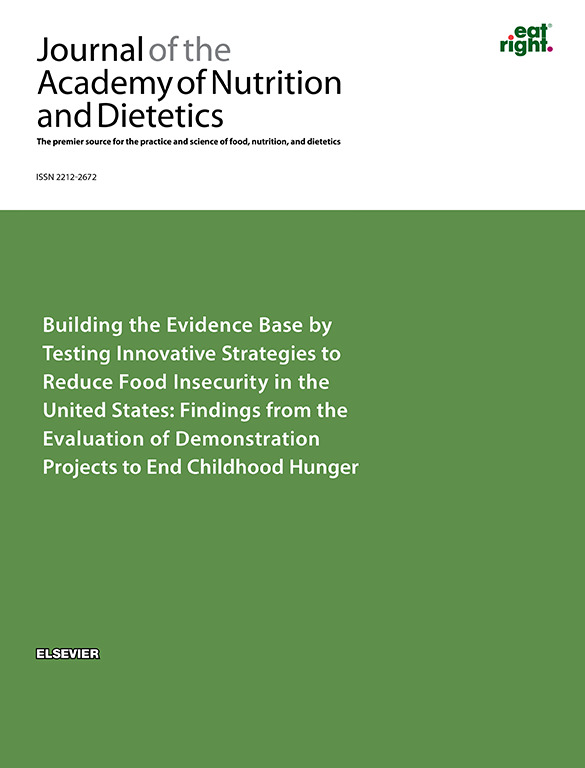
Systematic Review
The consumption of green tea catechins is associated with a statistically significant reduction in total and LDL cholesterol levels.
Kim A, Chiu A, Barone MK, Avino D, Wang F, Coleman CI, Phung OJ
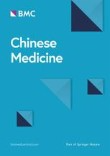
Systematic Review
Long-term consumption of tea catechins could be beneficial against high-fat diet-induced obesity and type II diabetes and could reduce the risk of coronary disease.
Chacko, S.M., Thambi, P.T., Kuttan, R. et al.
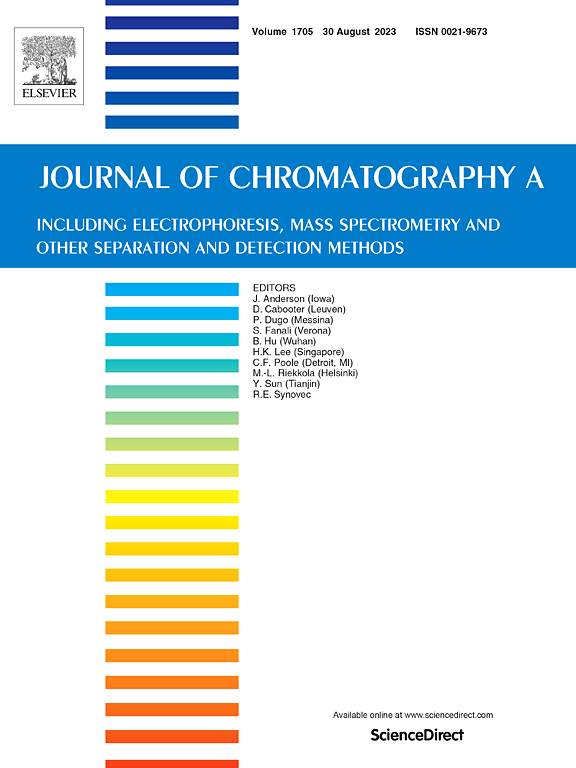
Experimental Study
Matcha tea holds nearly 137 times the concentration of epigallocatechin gallate, an important catechin, compared to common green teas.
Weiss DJ, Anderton CR
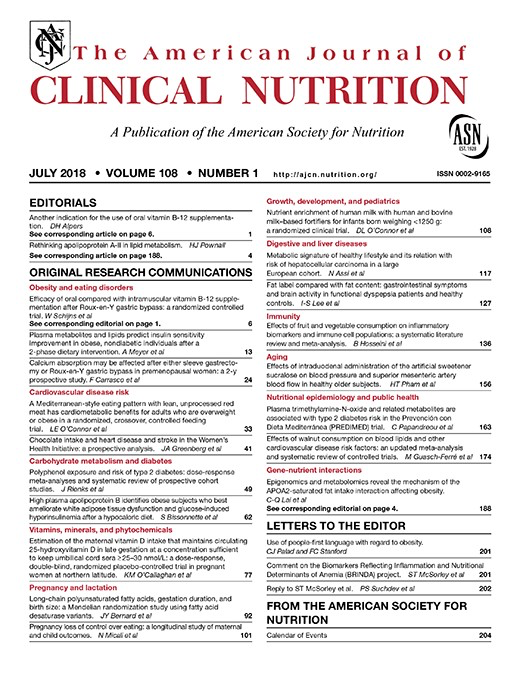
Randomised Controlled Trial
Healthy individuals, including those with low iron stores, show reduced nonheme-iron absorption after iron supplementation, leading to larger iron stores that are sustained over time.
Roughead ZK, Hunt JR
Executive Summary
Write an executive summary in the form of a blog article on the topic of "Research into Chinese medicine treatment for Tea" summarising the research below and using language that can be easily understood by patients and avoiding medical jargon using a professional and caring tone of voice.
Write an executive summary in the form of a blog article on the topic of "Researched Chinese medicine treatments for Tea" summarising the research below in an objective and easy to understand way, and using language that can be easily understood by patients. Group the article into Chinese medicine treatments first, followed by nutrition and other treatments. Avoid using medical jargon and use a professional and caring tone of voice.
Write me a concise but easy to understand executive summary on the topic of "Chinese medicine treatments for Tea" based on the following research that I will give you. Your summary should be 2 paragraphs long in Australian English spelling and include references to the studies.
A Meta-Analysis published in 2023 in the journal Journal of Clinical Medicine found that Omega-3 fatty acid supplements can effectively alleviate symptoms of dry eye disease, especially when consumed in high doses for a long term and with high eicosapentaenoic acid levels. The methodology of this study involved an intensive review of data from multiple reliable sources like PubMed, Embase, and others covering the timespan from 2013 to 2023. The focus was on randomized clinical trials that studied the impact of omega-3 fatty acids on patients with dry eye disease and provided accessible pre- and post-intervention data. Studies with overlapping participants were excluded, as were studies without omega-3 supplementation or not featuring a placebo control or quantitative assessments. Independent reviewers extracted data pertaining to dry eye symptom scores and other related metrics. The results showed that patients who were administered omega-3 treatment demonstrated considerable improvement in symptoms of dry eye disease compared to those on a placebo treatment. The meta-regression analysis deduced positive correlations between the daily dose of omega-3, duration of omega-3 intake, and percentage of eicosapentaenoic acid, with a reduction in dry eye symptom scores. Similar trends were observed with other dry eye related metrics. These findings provide substantial evidence on the beneficial effect of omega-3 fatty acid supplements in managing dry eye disease. However, due to the diversity in patient characteristics and the heterogeneity in study results, care should be taken in widely applying these findings.
A Cohort Study published in 2023 in the journal Nutrients found that Long-term consumption of green tea can potentially lessen the risk of depression in postmenopausal women by decreasing inflammation and boosting estradiol levels. In the study, researchers performed an analysis on a tea-producing village, incorporating 386 postmenopausal women in the investigation, who participated either as green tea consumers or non-drinkers (control group). The level of estradiol, inflammation markers, sleep quality, and depression symptoms were measured to uncover any correlations. The results reflected significant disparities between the tea-drinking and control groups in terms of depression and insomnia levels, BMI, inflammation levels, and estradiol quantities. By appraising these outcomes, it was found that green tea intake could quell the likelihood of depression via its impact on sleep, inflammation, and estradiol levels. The risk of depression was consequently seen as reduced among postmenopausal women engaging in regular consumption of green tea.
A Clinical Study published in 2023 in the journal Metabolites found that Consuming bicarbonate-calcium mineral water, low in sodium, can help manage calcium imbalance and support bone health in perimenopausal women. The study involved 120 perimenopausal women who consumed 2 liters of a specific bicarbonate-calcium mineral water (Lete) daily for six months. This water was chosen because it is rich in calcium and bicarbonate but low in sodium. The study aimed to determine the impact of this water on bone health and overall metabolism. The participants’ urine and blood serum were analyzed using NMR-based metabolomic procedures. These analyses were conducted to assess the effects of the water not only on calcium metabolism but also on the broader systemic metabolism. The findings indicated that the Lete water effectively compensated for calcium dysmetabolism and supported bone health and integrity in perimenopausal women. While the study primarily focused on bone metabolism, it also provided insights into the potential system-wide metabolic effects of this specific type of mineral water. This suggests that such water could be a valuable dietary supplement for addressing calcium-related metabolic issues, particularly in perimenopausal women.
A Systematic Review published in 2023 in the journal Chinese Journal of Integrative Medicine found that Acupuncture may have a positive impact on clinical pregnancy rate and live birth rate in women undergoing in vitro fertilization (IVF), although the results are limited by the heterogeneity of the current evidence. This study aimed to assess the efficacy of acupuncture on embryo transfer in women undergoing in vitro fertilization (IVF). A total of 49 randomized controlled trials (RCTs) involving 9422 women were analyzed. The results indicated that acupuncture had a significant positive impact on the clinical pregnancy rate (CPR) and live birth rate (LBR) compared to the control groups (odds ratio [OR]=1.65 for CPR, 1.34 for LBR). Subgroup analyses showed that traditional acupuncture was more beneficial for women aged < 35 years, those receiving ≥ 3 sessions, and those with lower baseline CPR rates in the control group. However, significant heterogeneity was observed among the studies. In conclusion, while there were some benefits of acupuncture in improving CPR and LBR in IVF, the results should be interpreted with caution due to the variability in the current evidence.
A Experimental Study published in 2023 in the journal Nutrients found that Theabrownin from dark tea can potentially reverse insulin resistance and regulate glycolipid metabolism, with longer fermented samples showing greater effects. The study focused on TB1 and TB2, theabrownin isolated from dark tea. TB1 was fermented for 7 days whereas TB2 was fermented for 14 days. The research used HepG2 cells for the experiment. Various techniques such as Western blot and real-time PCR experiments were employed to measure the effects of TB on oxidative stress, mitochondrial function, and glycolipid regulation, which are key components of insulin resistance. The results suggest TB can significantly improve oxidative stress conditions by enhancing mitochondrial function. TB unveiled its potential in improving glycogen synthesis and glucose consumption. Furthermore, TB was found to inhibit harmful processes like gluconeogenesis and fatty acid synthesis via the regulation of various enzymes and proteins. The researchers investigated this by focusing on a signaling pathway (IRS-1/PI3K/Akt). Verification of the effects of TB on glycolipid metabolism was done using a PI3K inhibitor, highlighting a positive correlation between PI3K activation and TB's activity. Notably, the experiment showed TB2, which was fermented longer, was more effective in improving insulin resistance.
A Randomised Controlled Trial published in 2023 in the journal Nutrition Journal found that Pomegranate peel extract, along with a calorie deficit diet, could improve risk factors of metabolic syndrome and reduce fatty liver in patients with non-alcoholic fatty liver disease. In the first phase, the research involved the hydro-alcoholic extraction of the peel of 750 kilograms of pomegranate using the soaking method. The second phase saw patients with non-alcoholic fatty liver disease divided into two groups - a placebo group and a pomegranate peel capsule group. Both groups followed a diet with a 500 kcal deficit for eight weeks. Aspects like intolerance to the treatment, participants' dietary intake, their lipid and glycemic profiles, blood pressure, body composition, insulin resistance indexes and changes in fatty liver disease evaluated through elastography were monitored. Further, the study reported substantial decreases in multiple indicators such as body weight, waist circumference, body mass index, body fat index, trunk fat, blood pressure, total cholesterol, triglyceride levels, LDL cholesterol, fat free mass, and fasting blood sugar in the group that took pomegranate peel capsules compared to the placebo group. Meanwhile, HDL cholesterol and liver steatosis and stiffness saw improvement. No significant differences, however, were found in the insulin and homeostatic model assessment for insulin resistance between the two groups.
A Review Article published in 2023 in the journal Critical Reviews in Food Science and Nutrition found that Theabrownins, a major ingredient in dark tea, significantly contribute to multiple health benefits by modulating lipid metabolism, reducing weight gain, and preventing diseases, surpassing other tea types. The research focuses on theabrownins, macromolecular pigments found in dark tea, believed to have numerous health benefits. These pigments derive from the oxidative polymerization of tea polyphenols and are observed to have a reddish-brown color and a mellow taste. One of the primary aspects of the research is the method of generation of theabrownins, which is mainly through microbial fermentation. This method seemingly enhances the health-promoting qualities of dark tea, especially its hypolipidemic effect, compared to other tea variants. The results of the study affirm the host of health benefits provided by theabrownins - including the modulation of lipid metabolism, reduction in body weight gain, attenuation of diabetes, mitigation of NAFLD, scavenging ROS, and prevention of tumors. Particular attention was given to the role that theabrownins play in influencing the gut microbiota, leading to significant health benefits. Despite some limitations, these factual conclusions advocate the potential of dark tea in fostering human health, premised upon its theabrownins content.
A Systematic Review published in 2023 in the journal Nutrients found that Natural calcium-rich mineral waters offer a bioavailable calcium source, beneficial for bone health, cardiovascular function, weight management, and overall well-being. This systematic review analyzed peer-reviewed articles, clinical trials, and experimental studies from the past decade. It focused on the health benefits of calcium-rich mineral waters, especially for individuals with lactose intolerance or on plant-based diets. The review process assessed the contribution of these waters to daily calcium intake and their bioavailability compared to other calcium sources. The review found that natural mineral waters high in calcium can significantly enhance calcium intake, with improved absorption rates. These waters show promise in promoting bone health and cardiovascular function, including potential reductions in blood pressure and cardiovascular disease risk. Some evidence suggests benefits in weight management. However, the review highlighted the need for further research on interactions with other dietary components, effects on specific health conditions, and long-term consumption impacts. Despite these gaps, calcium-rich mineral waters are recognized as a valuable dietary calcium source for a diverse population.
A Animal Study published in 2023 in the journal European Journal of Medicinal Chemistry found that Jin Si Huang Ju tea, a traditional Chinese beverage, contains compounds that potentially reduce lipids, mitigate insulin resistance and reduce liver inflammation in vitro. The researchers identified 14 compounds in the Jinsi Huangju tea using different spectroscopic techniques, 11 of which had not been previously identified in this plant. Two of these compounds, apigenin-7-O-6″-malonylglucoside and luteolin-7-O-6″-malonylglucoside, were synthesized for the first time with a yield of 1.2% over 5 steps. In the findings, the natural compound apigenin-7-O-6″-malonylglucoside was found to inhibit the function of pancreatic lipase, reduce cellular lipid contents, and attenuate insulin resistance when tested in vitro. It was also observed to restore lipid and inflammatory profiles in plasma and the liver, as well as reduce hepatic steatosis in non-alcoholic fatty liver disease (NAFLD) mouse models. Thus, Jinsi Huangju and its active components are strong candidates for the development of drugs or functional foods that could provide a therapeutic strategy for hyperlipidaemia and NAFLD.
A Review Article published in 2023 in the journal Frontiers in Nutrition found that Sardines, being an affordable source of Omega-3 and other cardioprotective nutrients, can potentially reduce the need for Omega-3 supplementation and manage cardiometabolic diseases. The abstract primarily acknowledges the importance of Omega-3 polyunsaturated fatty acids with respect to managing diseases related to heart health and metabolism, for instance, type 2 diabetes, hypertension, hypertriglyceridaemia, and fatty liver disease. However, these fatty acids are not the sole beneficial component of sardines. Minerals including but not limited to calcium, potassium, and magnesium as well as substances like taurine and arginine found in sardines have a significant role in controlling mild inflammation and oxidative stress which are usually present in cardiovascular diseases and hemodynamic dysfunction. The results discussed in the abstract suggest a positive correlation between consumption of sardines and potential cardiometabolic benefits. By considering the dose-response relationship effects, a pragmatic approach towards consumption of nutrients was suggested. The intake of sardines was seen not only as a means of Omega-3 supplementation but also as a comprehensive approach to enhancing cardiovascular health. The abstract concludes with an emphasis on the many beneficial nutrients found in sardines besides Omega-3, underlining the need to shift the focus from synthetic supplementation to natural dietary improvement.
A Review Article published in 2023 in the journal Nutrients found that Green tea helps alleviate symptoms in multiple benign gynecological disorders, primarily due to a compound called Epigallocatechin-3-gallate. The paper reviews the role of the compound Epigallocatechin-3-gallate found in green tea, and its effects on various benign gynecological conditions. The compound is noted for its antioxidant and prooxidant qualities, allowing it to interact with multiple cellular pathways that are crucial for disease pathogenesis. The studied conditions include uterine fibroids, endometriosis, dysmenorrhea, adenomyosis, menopause, and polycystic ovary syndrome. The research accounts for the specific mechanisms through which the compound might affect each condition, such as anti-fibrotic, anti-angiogenic, and pro-apoptotic mechanisms. The results suggest that green tea consumption can lead to improved symptom management in these disorders. It was found to lessen the intensity of symptoms associated with uterine fibroids and endometriosis, by invoking anti-fibrotic, anti-angiogenic, and pro-apoptotic mechanisms. It also helped manage pain linked with dysmenorrhea and adenomyosis through reducing uterine contractility and widely felt pain. Additionally, it showed efficacy in weight and osteoporosis control during menopause, and showed potential benefits in managing polycystic ovary syndrome. However, claims regarding its influence on fertility were deemed controversial.
A Systematic Review published in 2023 in the journal Nutrition found that Our dose-response analysis indicated that moderate green tea consumption (500–1000 mL/d) was associated with a 21% to 24% lower risk of stroke. The meta-analysis aimed to clarify the inconsistent findings in epidemiologic studies regarding the link between green tea consumption and stroke risk. Five prospective cohort studies, involving 645,393 participants and 11,421 stroke cases, were analyzed. The summary relative risk (RR) revealed a substantial association, indicating a 26% reduction in stroke risk with the highest green tea consumption. The dose-response analysis indicated a nonlinear relationship, and compared with non-consumers, various levels of green tea intake showed progressively reduced RRs for stroke, emphasizing a potential protective effect. The findings from the meta-analysis strongly suggest an inverse association between green tea consumption and stroke risk. Notably, the highest green tea consumption demonstrated a significant 26% risk reduction. The dose-response analysis further highlighted a nonlinear relationship, with moderate consumption levels (500–1000 mL/d) showing the most substantial risk reduction. These results provide support for recommending green tea consumption as a measure for the primary prevention of stroke.
A Cohort Study published in 2023 in the journal Journal of the American Heart Association found that Heavy coffee consumption increases the risk of cardiovascular disease mortality in individuals with severe hypertension, while green tea consumption does not. With the use of the Japan Collaborative Cohort Study, researchers assessed 18,609 participants, both male and female, aged between 40 to 79 years. These participants had varying blood pressure levels, categorized into optimal and normal BP, high-normal BP, and two stages of hypertension. They completed a questionnaire about their lifestyle, diet, and medical history, and underwent health examinations, which were followed up until 2009. The association of coffee and green tea consumption on cardiovascular disease mortality was then calculated using a Cox proportional hazard model. It was found over an 18.9 year follow-up period that heavy coffee consumption was linked to increased risk of cardiovascular disease mortality among those suffering from the second to third grade of hypertension. In stark contrast, people with optimal and normal, high-normal blood pressure and first grade hypertension did not show such associations between coffee consumption and cardiovascular disease mortality. Interestingly, the risk of cardiovascular disease mortality was not found to be increased across any blood pressure categories in relation to green tea consumption.
A Experimental Study published in 2023 in the journal Food & Function found that Pu-erh tea can potentially prevent depression-like behaviors induced by nighttime blue light from electronic devices by reshaping gut microbiota and increasing short-chain fatty acids generation. The methodology used involved administering water or Pu-erh tea to two groups of mice for 120 days, followed by a 45-day exposure to a blue light simulating electronic equipment during the night. The effect of the tea and blue light on the mice's behavior and gut microbiota was then studied. Results indicated that the blue light induced depression-like behaviors and upset the gut microbiota in mice that were previously healthy. In the discussion of results, it was noted that the intake of Pu-erh tea significantly reshaped the mice's gut microbiota, especially the metabolism of short-chain fatty acids, which helped protect the integrity of the intestinal barrier. This improvement not only lessened damage to the blood-brain barrier, but also reduced neuroinflammation by inhibiting certain cellular pathways. This ultimately regulated neurotransmitters like brain-derived neurotrophic factor and serotonin, demonstrating the potential of Pu-erh tea to prevent blue light induced depression-like behaviors by impacting the gut-brain axis.
A Review Article published in 2023 in the journal Pharmacological Research found that Consumption of tea and coffee may possibly provide anti-inflammatory effects, contributing to reduced cardiovascular risk and mortality. The methodology of this narrative review examined the potential anti-inflammatory properties of consuming tea and coffee as a factor in reducing the risk of cardiovascular disease. This was done by analyzing a plethora of studies and meta-analyses that explored the impact of diet on inflammation, with a keen focus on the consumption of these beverages. The studies looked at a variety of risk factors for atherosclerotic cardiovascular disease, including inflammation biomarkers such as C-reactive protein, along with the impact of modern lipid-lowering treatments. In discussing the results, it was noticed that inconsistent findings were produced from the analysed studies which made a conclusive determination challenging. However, a trend was observed where drinking tea and coffee seemed to raise adiponectin levels, reduce reactive oxygen species and lower low-density lipoprotein cholesterol levels. Despite these potential anti-inflammatory properties of tea and coffee being somewhat uncertain due to various confounding factors, their consumption is still recommended as part of a healthy diet.
A Animal Study published in 2022 in the journal Food Research International found that Pu-erh tea and its ingredient theabrownin improve liver, jejunum, and adipose tissue functions in metabolic syndrome mice, modulating circadian rhythm, glycerophospholipid, and linoleic acid metabolism. In this study, varied technological applications such as metagenomics, transcriptomics, and metabolomics were utilized to explore the anti-metabolic syndrome mechanism of Pu-erh tea and theabrownin in mice with metabolic syndrome. These scientific technologies allowed the researchers to understand and explore improvements in the physiological functions of liver, jejunum, and adipose tissues in the metabolic syndrome mice as a result of Pu-erh tea and theabrownin interventions. The investigation also focused on changes to the hepatic transcriptome, revealing that both of these interventions had the capacity to regulate the circadian rhythm pathway. The results showcased that both interventions succeeded in the modulation of glycerophospholipid and linoleic acid metabolism, this was established through a comprehensive analysis of serum and brain metabolome. Further analysis of faecal metagenome demonstrated an increase in the relative abundance of certain bacterium and a decrease in others due to both interventions. However, in comparison to Pu-erh tea, theabrownin exhibited a more pronounced influence as regards upregulating hepatic antioxidants and downregulating hepatic inflammatory factors, although there was only a slight reduction in obesity-linked short-chain fatty acids in faeces of the metabolic syndrome mice. Overall, the experiment provided essential insights into the various ways these two elements function and provide treatment for metabolic syndrome.
A Review Article published in 2022 in the journal Molecules found that Green tea's catechins demonstrate therapeutic effects against neurodegenerative diseases via anti-inflammatory, antioxidant actions, and activating diverse brain cellular pathways. The research primarily evaluates the effect of polyphenolic compounds found in green tea, known as catechins, on neurodegenerative diseases. By conducting several interventional and observational studies on humans, the research explores the anti-cancer, anti-obesity, antidiabetic, anti-inflammatory, and neuroprotective properties of these compounds. The biological, pharmacological, antioxidant, and metal chelating abilities of catechins, particularly their influence on different cellular pathways within the brain, are intensively studied. The results elucidate that catechins exhibit multiple neuroprotective effects. Their anti-inflammatory and antioxidant properties help to inhibit excessive production of cytokines, and inflammatory pathways, while also controlling metal ions and free radicals. Researchers have further established that catechins may curb the phosphorylation of the tau protein and aggregation of amyloid beta, both key markers in neurodegenerative diseases. Additionally, these compounds show potential in reducing alpha-synuclein levels and augmenting dopamine levels. Hence, they significantly contribute to the prevention and treatment of neurodegenerative diseases, including Alzheimer's, Parkinson's, multiple sclerosis, and cognitive deficits.
A Experimental Study published in 2022 in the journal Food Chemistry found that Pu-erh tea, through the increase of Cinnabarinic acid, can improve obesity induced by circadian rhythm disorders by enhancing fat metabolism and altering gut microbes. In this study, a CRD-induced obesity model in mice was developed and Pu-erh tea was used as an intervention. The effect of Pu-erh tea on obesity was observed and determined to come from its production of Cinnabarinic acid (CA). CA was found to promote adipose tissue lipolysis and heat generation response, increasing the sensitivity of fat cells to hormones and neurotransmitters. This was accomplished by targeting the expression of specific receptor proteins in adipose tissue. These processes improved mitochondrial activity in the fat cells and expedited metabolic processes in the adipose tissue, thereby speeding up glucose and fat metabolism. In the final stage of the study, CA was found to make changes in the gut microbiota and short-chain fatty acids which further helped to improve the lipid accumulation mediated by CRD. The researchers concluded that the increase in CA, caused by drinking Pu-erh tea and reaching the fat tissue through blood circulation, could be a crucial mechanism to reduce obesity induced by circadian rhythm disorders.
A Review Article published in 2022 in the journal Trends in Cardiovascular Medicine found that Consuming 2-3 cups of coffee daily can help prevent cardiovascular disease and drinking at least 3 cups of green tea has similar benefits. In this review, researchers examined the effects of habitual coffee and tea consumption on cardiovascular disease (CVD) prevention. Specifically, they studied the association between 2-3 cups of coffee or tea consumed daily and their beneficial effects on metabolic syndrome, including hypertension and diabetes mellitus, focusing on how these popularly consumed beverages might affect lipid levels. The analysis of findings drew a correlation between moderate coffee intake and a reduced risk of several cardiovascular conditions, such as coronary heart disease, heart failure, arrhythmia, stroke, and CVD, in addition to lowering mortality from all causes. It was also noted that the benefits extended to higher tea consumption as well, particularly in the case of green tea, where it led to improved survival rates in population-based studies.
A Randomised Controlled Trial published in 2022 in the journal Pain Medicine found that True acupuncture treatment according to traditional Chinese medicine consistently improved migraine outcomes more than just medication or mock treatments. In the prospective, randomized, controlled study, 160 migraine patients without aura were assigned to one of four treatment groups. These treatments included: traditional Chinese medicine acupuncture combined with Rizatriptan (TA); a ritualized non-penetrative acupuncture treatment combined with Rizatriptan (RMA); a standard non-penetrative acupuncture treatment combined with Rizatriptan (SMA); or Rizatriptan alone (R). The Migraine Disability Assessment (MIDAS) questionnaire was completed before treatment, and again after three and six months. The study found that all patient groups experienced a decrease in Migraine Disability Assessment scores following treatment, indicating general improvement. However, the traditional acupuncture treatment group (TA) showed significant improvement in comparison to those who received only Rizatriptan. The ritualized non-penetrative acupuncture treatment group (RMA) showed temporary improvement, suggesting a placebo effect.
A Review Article published in 2022 in the journal International Journal of Molecular Sciences found that Compounds found in green tea, especially EGCG, show significant anti-cancer activity and hold promise as potential anticancer drugs or adjuvants to standard chemotherapy. The study used a combination of epidemiological and laboratory studies to examine the effects of catechins in green tea on combating cancer. The researchers focused their attention on the four main catechin derivatives found in green tea: epicatechin, epigallocatechin, epicatechin gallate, and epigallocatechin gallate—the latter found to be most potent. Attention was given to the quantity of hydroxyl groups and the presence of certain structural groups in these compounds, and how these factors affected antioxidant activity. The study centered around the effects of catechins on tumor survival, proliferation, invasion, angiogenesis, and metastasis. By doing this, the researchers could observe the influence of the identified compounds on the various processes that lead to the development and spread of cancer. The main point of observation was the capacity of catechins to neutralize reactive oxygen species, a key facet in their anti-cancer activity.
A Meta-Analysis published in 2022 in the journal Nutrition Research found that Green tea supplementation can significantly reduce body weight in women with polycystic ovary syndrome, hence potentially beneficial in its clinical management. The research carried out was a systematic review of randomized controlled trials that focused on women with polycystic ovary syndrome, examining the effects of green tea supplementation versus a placebo. Relevant studies were sourced from electronic databases such as MEDLINE via PubMed, EMBASE via Elsevier, Cochrane Library, LILACS via BVS, and Web of Science using specific terms related to the illness and green tea. Criteria for the evaluation included effects on body weight, fasting insulin, body mass index, body fat percentage, daily caloric intake, waist and hip circumference, and the waist/hip ratio. Among the studies considered, there were a total of 169 women, with 85 allocated to the green tea group and 84 to the placebo group. It became apparent that there was a significant reduction in body weight for the group that received green tea supplementation. This leans towards the potential of green tea to be beneficial in the management of this syndrome.
A Systematic Review published in 2022 in the journal Food Science and Human Wellness found that Bioactive components in green tea have demonstrated potential neuroprotective effects and might play a role in preventing Alzheimer’s disease. In this study, the researchers focused on the potential preventative effects of bioactive compounds, specifically (-)-epigallocatechin-3-gallate, present in tea, on Alzheimer's disease (AD). This interest was based on recognition of the importance of lifestyle-related factors, including diet, in the primary prevention of AD. They compiled and analyzed the findings from various preclinical studies which pointed towards the neuroprotective qualities of these compounds. The results reveal an association between the consumption of green tea and a reduction in the risk of age-related cognitive decline and AD. However, these results do not establish a causal relationship. That is, while people who drink green tea appear to have lower rates of AD, the study cannot confirm that green tea consumption is the reason for this reduced prevalence. The researchers also emphasized that while the preventative effects of green tea were deduced from preclinical (animal) studies, human-based clinical trials yielded unsatisfactory evidence regarding tea's preventive or therapeutic effect on AD.
A Animal Study published in 2022 in the journal Frontiers in Nutrition found that Cooked adzuki beans contribute notably to preventing obesity and regulating gut microbiota composition, while also alleviating systemic inflammation and metabolic disorders. The methodology involved a controlled experiment where mice were fed diets of varying lipid content: a low-fat diet or a high-fat diet. The specific twist in this experiment was the inclusion or exclusion of cooked adzuki beans to their diet, ensuring 15% of the diet comprised of this. The duration of this dietary regimen was 12 weeks. In the discussion of results, it was discovered that cooked adzuki beans provided key beneficial effects. This included a significant inhibition of weight gain and hepatic steatosis, a reduction in high levels of specific markers such as serum triacylglycerol, alanine aminotransferase, and aspartate aminotransferase, providing a counter to systemic inflammation and metabolism-related endotoxemia commonly found in those consuming a high-fat diet. Moreover, the inclusion of adzuki beans positively affected the gut microbiota composition, reducing fat-inducing bacteria and enriching the gut with beneficial bacteria to help alleviate inflammation and metabolic disorders associated with high-fat diets.
A Systematic Review published in 2022 in the journal Acta Neurologica Belgica found that Higher daily tea consumption, especially green tea, is linked to a lower risk of cerebral hemorrhage in adults. This meta-analysis uncovered evidence of a connection between tea consumption and cerebral hemorrhage risk, exploring databases including Web of Science, PubMed, Embase, and Scopus until December 2021. The synthesis utilized relative risks or odds ratios from observational studies. The pool of data included ten studies involving over 721,827 participants. The evaluation revealed that a higher rate of tea consumption, and more specifically green tea, was significantly related to a lower risk of cerebral hemorrhage. Interestingly, this connection could be observed even when adjusted for key lifestyle factors such as alcohol consumption, fruit and vegetable intake, and physical activity. It is worth noting that the intake of tea on a daily basis demonstrated a protective effect against the risk of cerebral hemorrhage.
A Animal Study published in 2022 in the journal Foods found that Pu-erh tea has been validated to have significant anti-oxidative effects, reducing serum MDA levels and increasing serum SOD and GSH-Px levels. The methodology used in this study involved a systematic literature review and meta-analysis to explore the anti-oxidative effects of pu-erh tea. Seven databases were meticulously searched up to the date of 21 February 2020, using the specific keywords 'pu-erh' in combination with 'superoxide dismutase', 'glutathione peroxidase', or 'malondialdehyde'. The results from the meta-analysis demonstrated significant effects of pu-erh tea on anti-oxidation. It was found to reduce serum MDA levels whilst simultaneously increasing serum SOD and GSH-Px levels. Through the systematic review and meta-analyses, it was validated that various ingredients in pu-erh tea extracts do indeed have the anti-oxidation effects that have long been part of conventional wisdom, but until now had limited supporting evidence.
A Experimental Study published in 2022 in the journal Journal of Agricultural and Food Chemistry found that Pu-erh tea may prevent circadian rhythm disorders by promoting tryptophan metabolism and signaling interactions in the gut-liver-brain axis. Healthy mice were administered water or 0.25% Pu-erh tea over a period of seven weeks, and then subjected to a disruption of their light/dark cycle for forty days. The assessment of effects was based on changes in neurotransmitter secretion and gene oscillations, intestinal inflammation, and the balance of intestinal microbes and metabolites. Results indicated that Pu-erh tea had beneficial impacts in regulating neurotransmitter secretion and clock gene oscillations, especially indole and 5-hydroxytryptamine pathways, a key process involving the gut-liver-brain axis. Moreover, the tea's metabolites improved release of brain hormones, thus enhancing hepatic glycolipid metabolism and lowering intestinal oxidative stress. Further observed beneficial effects included promotion of liver lipid metabolism and reduction of intestinal inflammation, via the enterohepatic circulation.
A Randomised Controlled Trial published in 2022 in the journal International Journal of Health Sciences found that Green tea extract, specifically epigallocatechin gallate, can inhibit tumor growth and enhance the quality of life in women suffering from uterine fibroids. A total of 75 reproductive-age women with symptomatic uterine fibroids were included in a prospective, randomized control trial. The selection of participants for either group, those receiving 900 mg of green tea extract or those receiving symptomatic treatment, was done via a random, blind method using sealed envelopes. This trial took place over a span of 4 months and the overall study lasted around 3 years. The results of the study showcased the potency of green tea extract, particularly EGCG, with special regard to its anticancer properties. These manifested as anti-inflammatory, antiproliferative, and antioxidant effects. It was found that the administration of EGCG managed to influence tumor growth pathways, indicating its efficacy in dealing with uterine fibroids. Moreover, another significant progression was observed in the quality of life for the women partaking in this trial. It was confirmed that the use of EGCG could bring about an overall improvement in the living conditions of these women, contributing towards a better, healthier life amidst the struggle with their condition.
A Review Article published in 2022 in the journal Journal of Traditional Chinese Medical Sciences found that Pu-erh tea possesses therapeutic mechanisms potentially beneficial for metabolic diseases due to its interaction with liver and gut microbiome. The methodology of this research involved reviewing and summarising the processing elements and bioactive components of pu-erh tea. Extensive study of relative human and animal trials was conducted, and the potential therapeutic mechanisms of this tea were examined and extrapolated. In discussing the results, it was discovered that pu-erh tea evidently has beneficial effects on metabolic diseases, such as hypocholesterolemic and hypolipidemic effects. The research points to the conclusion that the tea's interaction with the liver and gut microbiome is the major contributing factor to these health benefits. It helps regulate tea biotransformation and endogenous metabolism, underlining the tea's potential use in therapeutic interventions.
A Systematic Review published in 2022 in the journal Frontiers in Nutrition found that Higher consumption of coffee and specifically decaffeinated coffee raises the risk of rheumatoid arthritis, while caffeinated coffee, tea and caffeine intake doesn't. In the methodology, a dose-response meta-analysis of prospective cohort studies was carried out to evaluate the association between dietary caffeine, and different types of coffee and tea consumption with rheumatoid arthritis (RA). Relevant research papers were identified through a database search in PubMed/Medline, Scopus and EMBASE until July 2021. The studies considered different types of coffee, caffeinated or decaffeinated, tea or caffeine exposure with RA as the main or one of the outcomes. Out of 742 publications, five studies were selected for inclusion in the meta-analysis. Pooled relative risks were calculated through a fixed-effects model. Both linear and non-linear dose-response analyses were conducted to inspect dose-response relations. The analysis of results revealed a significant association between the consumption of coffee, especially decaffeinated coffee and increased risk of RA, when comparing between extreme categories of consumption. For each additional cup of coffee consumed daily, there was a notable increase in the risk of RA. However, this study found no significant link between the intake of caffeinated coffee, tea or caffeine intake and the risk of RA.
A Randomised Controlled Trial published in 2022 in the journal European Journal of Nutrition found that Lemon juice boosts gastric secretions and emptying rate, and reduces blood sugar response to starchy food, potentially due to acid-inhibition of digestion enzyme in saliva. Methodology: In this randomized, crossover study, 10 subjects consumed either water, lemon juice diluted in water, or black tea with bread at breakfast. Using magnetic resonance imaging, the finger-prick method, and visual analogue scales, researchers measured gastric volumes, the concentrations of glucose in the blood, and the perception of appetite over a period of three hours. Discussion of Results: Lemon juice consumption resulted in a significant increase in gastric content volume, as well as a faster rate of gastric emptying, compared to water. It also elicited a lower glycemic response compared to water. However, no significant effect was observed with tea consumption. Correspondingly, changes in appetite perception and gastric volumes showed a strong correlation, though there were no significant differences among the different drinks. The findings suggest that the observed reduction in glycemic response could primarily be attributed to the interruption of starch digestion due to the acid-inhibition of the salivary enzyme responsible for starch hydrolysis.
A Meta-Analysis published in 2021 in the journal Frontiers in Endocrinology found that Tea supplements, especially green tea, significantly decrease fasting blood glucose and fasting insulin levels and reduce body weight in women with polycystic ovary syndrome. The researchers conducted a systematic review and meta-analysis by searching published literature in different databases from 1985 to September 2021. The data from randomized controlled trials were extracted to assess the effectiveness of tea versus placebo in women with polycystic ovary syndrome. Weighted mean differences were pooled using a random-effects model. A total of six trials with 235 participants were included in this review. The study resulted in finding that consumption of tea supplements improved body weight, fasting blood glucose, and fasting insulin more significantly when compared with a placebo. Notably, green tea was effective on body weight, fasting insulin, fasting blood glucose, and certain reproductive hormone indexes. The therapy was also found to be safely tolerated by the patients. It's important to note that tea had significant effects on fasting blood glucose and hormone levels in trials with intervention duration of 3 months or more. Differences were noticed among Asian and Caucasian PCOS patients regarding the effect of tea on weight and fasting insulin.
A Systematic Review published in 2021 in the journal Japanese Dental Science Review found that Green tea treatment has shown potential in improving oral hygiene and gingival health, and reducing periodontitis and caries. The methodology of this research consisted of systematic literature review focusing on clinical trials that evaluated the impact of green tea on managing periodontitis and caries. Various databases including MedLine (PubMed), Scopus, and the Cochrane Library were utilized for gathering relevant studies. Eighteen suitable studies were selected, encompassing 870 subjects. The results reveal a noticeable positive effect from green tea treatment. This effect was realized in the reduction of gingival index, plaque index, gingival bleeding index and bleeding on probing when compared to a control group. It was also noted that when considered among chlorhexidine control groups, green tea showed a slight negative effect. There was additionally a significant positive effect seen in the reduction of clinical attachment level and probing pocket depth with green tea treatment.
A Systematic Review published in 2021 in the journal Antioxidants found that Green tea supplementation improves total antioxidant capacity and impacts oxidative stress based on dose levels in adults. The research's methodology involved a systematic search of research materials published in English language up to 21 August 2021. Recognized online databases such as Scopus, PubMed, Embase, and ISI Web of Science were utilized with the appropriate keywords. The study focused on randomized controlled trials that evaluated green tea supplementation, and its relationship with malondialdehyde and total antioxidant capacity in adults. A random-effects model quantified the difference, and the researchers carried out meta-regression and non-linear dose-response analyses to investigate the association between the quantity of green tea consumed and the duration of the intervention. The research analysed the results obtained from sixteen randomized controlled trials, which amount to seventeen study arms comprising a total of 760 participants. The study found that green tea supplementation did have significant effects on total antioxidant capacity, and these effects were chiefly linked to gender and body mass index. However, the results showed that these effects were not significant in cases of low-dose supplementation and obese individuals. On the other hand, no relationship was found between malondialdehyde and green tea supplementation in any subgroup. Nonetheless, meta-regression analyses indicated an inverse linear connection between the change in MDA and the dosage of green tea.
A Clinical Study published in 2021 in the journal Gynecological Endocrinology found that Simultaneous administration of vitamin D and Epigallocatechin gallate significantly reduces the size of uterine fibroids in premenopausal women, and decreases menstrual flow duration. In this study, 16 premenopausal women with uterine fibroids of varying sizes aged over 40 years old were given doses of Epigallocatechin gallate, Vitamin B6 and Vitamin D daily for 90 days. The women were selected based on specific criteria including their fibroid size and lack of other causes for abnormal uterine bleeding. Each woman kept a detailed daily diary recording details about their bleeding and pelvic pain. The analysis of the data revealed that there was a noteworthy decrease in both the average size of fibroids for each woman and the size of individual fibroids. This effect was especially pronounced in women with predominantly intramural fibroids in comparison to subserosal fibroids. While menstrual cycle duration and intensity did not change, the length of menstrual flow was decreased. Uterine and ovarian volume as well as endometrial thickness did not exhibit any significant changes. The treatment was generally highly satisfactory to the participants, with no adverse effects reported.
A Review Article published in 2021 in the journal Critical Reviews in Food Science and Nutrition found that Green tea and its component EGCG, demonstrate potential as a treatment for endometriosis by inhibiting growth, invasion, adhesion and angiogenesis. The main research methodology of this work is a narrative review. The paper comprehensively collects and reviews various preclinical studies that propose the use of green tea as a potential treatment for endometriosis. These studies explore the diverse biological properties and activities of green tea and its major bioactive component, (-)-epigallocatechin gallate, including anti-angiogenic, anti-proliferation, anti-metastasis, and apoptosis induction functions. Different potential mechanisms used by green tea to inhibit the growth of endometriosis are considered, such as its effects on inflammation, oxidative stress, invasion, adhesion, and apoptosis. The discussion of the reviewed data highlights the potential therapeutic effects of green tea acting on different molecular and cellular mechanisms in endometriosis. The researchers keenly discussed how green tea exhibited an inhibitory effect on the disease through multiple avenues, including reducing inflammation and oxidative stress, preventing tumor invasion and adhesion, promoting apoptosis (cell death), and limiting angiogenesis (the development of new blood vessels) - all these factors contribute to the growth and progression of endometriosis. The discussion elaborates on the significant roles and wider implications of these processes in understanding and potentially treating endometriosis.
A Clinical Study published in 2021 in the journal Scientific Reports found that Consumption of green tea enriched with a citrus polyphenol, α-glucosyl hesperidin, can prevent weight gain and reduce body mass index, especially in individuals under 50 years. The research involved a randomized, placebo-controlled, double-blinded, and parallel-group-designed clinical trial. Sixty healthy Japanese men and women aged between 30 and 75 were included in the study. They were instructed to consume a blend of green tea and α-glucosyl hesperidin (GT-gH). Each dosage contained 178 mg α-glucosyl hesperidin and 146 mg of an active ingredient of green tea, called EGCG. This protocol was followed for 12 weeks. Participants underwent physical, hematological, blood biochemical, and urine examinations to ensure safety. Discussion of findings showed that the GT-gH mixture played a significant role in weight management. By the end of 12 weeks, participants who consumed the GT-gH mix showed prevention in weight gain and a reduction in body mass index when compared to the control group. The anti-obesity effect was particularly observable in individuals aged below 50. These participants experienced lower levels of triglyceride, body fat percentage, and visceral fat levels, alongside a decrease in body weight, BMI, and blood LDL/HDL ratios.
A Systematic Review published in 2021 in the journal Reproductive Biology and Endocrinology found that Green tea extract could be considered a potential agent to attenuate PCOS complications mainly due to its effect on weight loss and glycemic levels. Current evidence indicates that green tea extract (GTE) supplementation has potential beneficial effects on PCOS. Of 314 articles found in the search, four human studies and four animal studies were included. All studies in humans showed the effects of GTE on weight loss. GTE's effect on decreasing testosterone levels in humans and LH levels in animals were also reported. In addition, increases in FSH and progesterone levels in animal models were observed. Although GTE improved fasting blood sugar and insulin levels, the effect of GTE on inflammatory parameters, such as TNF-alpha and IL-6 and antioxidant status, was limited to animal studies.
A Animal Study published in 2021 in the journal Nutrients found that Adzuki beans, when added to a high-fat diet, lessen obesity, improve liver function, enhance insulin sensitivity, and balance gut microbiota. In the experiment, mice were placed on one of three diets for 12 weeks: a low-fat diet, a high-fat diet, or a high-fat diet supplemented with 15% adzuki beans. The study observed and tested for changes related to obesity, lipid accumulation, serum lipid and lipopolysaccharide levels, liver function, hepatic steatosis, glucose homeostasis, insulin sensitivity, and gut microbiota imbalances. Through a process called PICRUSt2 analysis, the researchers were then able to draw potential associations between changes in the gut microbiota and the metabolism of various substances. In the discussion of the results, the supplementation of adzuki beans to a high-fat diet had a significant impact. Obesity and lipid accumulation were visibly reduced, as were negative impacts on liver function and unhealthy levels of serum lipids and lipopolysaccharides. Notably, glucose homeostasis was improved through an increase in insulin sensitivity. The imbalances in gut microbiota, typically seen in a high-fat diet, were significantly reversed through adzuki bean supplementation. High-fat diet dependent taxa returned to a more normal status, which in turn suggested associations with the metabolism of carbohydrates, lipids, sulfur, and two types of amino acids.
A Experimental Study published in 2021 in the journal Frontiers in Nutrition found that Co-fermentation of Ganpu tea with Chachi peel alters its chemical profile, reducing certain compounds while increasing others, thus enhancing its unique flavor. In the research, the effects of Chachi peel cofermentation on the chemical profile of Ganpu tea were examined using an ultra-high-performance liquid chromatography-Q Exactive Orbitrap mass spectrometry (UHPLC-QE Orbitrap MS)-based qualitative and quantitative method combined with multivariate analysis. A total of 171 compounds were identified using a three-level strategy, including seven phenolic acids, 11 flavan-3-ols, and 27 flavonoids and flavonoid glycosides identified in pu-erh tea for the first time. The principal component analysis (PCA) of untargeted metabolomics and orthogonal partial least squares discriminant analysis (OPLS-DA) models of targeted components revealed significant differences in the chemical profiles between raw pu-erh tea and Ganpu tea. The cofermentation process significantly reduced the total contents of phenolic acids, flavan-3-ols, and flavonoid aglycone. However, most of the quercetin glycosides, myricetin glycosides, and vitexin increased significantly. Additionally, hesperidin, a flavonoid glycoside only found in Chachi, was detected in pu-erh tea for the first time after cofermentation. Hence, this process clearly impacts the chemical composition and content changes in pu-erh tea, suggesting that cofermentation accelerates the fermentation of pu-erh tea and improves its unique taste.
A Review Article published in 2021 in the journal Food Chemistry found that Pu-erh tea, with its complex components, interacts greatly with gut microbiomes and holds significant potential for healthcare applications. Pu-erh tea undergoes a post-fermentation process involving various microorganisms, leading to highly complex components. This tea has its potential benefit due to its rich interactions with the gut microbiomes; the structure and the homeostasis of which are deeply connected to human wellness and progress of various diseases. This study provides a systemic review of the current findings pertaining to the bioactive components of Pu-erh tea and their interactions with gut microbiomes. For the discussion of results, the beneficial effects of Pu-erh tea on gut microbiomes may establish its role in healthcare. These benefits are due to the tea's bioactive components' impacts on the structure of the gut microbiomes, and subsequent health improvements. Additionally, the establishment of "components-function-indicators" clues can propel the standardisation of the tea's fermentation process and development of functional tea-related products.
A Network Pharmacology published in 2021 in the journal Chinese Herbal Medicines found that Honeysuckle extract could provoke anaphylaxis and specific ingredients in honeysuckle potentially trigger this reaction. In the methodology, rat peritoneal mast cells were separated and purified, then incubated with a compound, saline, and honeysuckle extract at 37°C for varying time intervals. Cell degranulation was observed under microscopes, and the percentage of Annexin V positive cells, which reflect cell degranulation rate, was detected via flow cytometry. Rats were given honeysuckle extract injections, and afterward, symptoms, histamine, and tryptase levels were analysed to study the anaphylaxis effect. In the discussion of results, it was discovered that the percentage of Annexin V positive cells and cell degranulation ratio significantly rose in cells treated with honeysuckle extract. Histamine and tryptase levels also increased noticeably after injection of honeysuckle extract. Regression analysis identified certain peaks as potential anaphylactoid ingredients, indicating that honeysuckle could induce anaphylaxis and there were likely specific substances in honeysuckle that caused this reaction.
A Systematic Review published in 2021 in the journal Molecules found that Green tea consumption has been found to be effective in preventing the contraction of influenza infections. To identify the potential benefits of green tea in influenza prevention, a methodical review and combined analysis of eight distinct research studies involving 5,048 participants was completed. The effect of green tea catechin treatment was tested against control conditions and assessed based on infection rates. Five of these studies were randomized controlled trials involving 884 participants and three were cohort studies with 2,223 participants. Subgroups such as those who gargled or took orally ingested forms of green tea were also analyzed separately. Further to this, the possibility of publication biases was evaluated using Begg's and Egger's tests. The results showed both the randomized trials and the cohort studies displayed significant preventative effects on influenza infection for those treated with green tea catechins. Notably, there was no evidence of non-uniformity within the data, reinforcing these findings. The pooled results of different consumption methods further supported these findings, showing no disparities among the subgroups. These results suggest the consumption of green tea has tangible prophylactic effects against influenza infection.
A Clinical Study published in 2021 in the journal Journal of Herbal Medicine found that Green tea therapy can significantly improve rheumatoid arthritis symptoms, correlating with changes in specific circulating serum molecules, miR-125b and miR-146a. In this study, 100 female patients suffering from rheumatoid arthritis and 50 healthy female subjects were examined. Patients with rheumatoid arthritis underwent green tea therapy, where they consumed 5 cups of green tea daily, delivering a total of 1230 mg of catechins, over a span of 24 weeks. During this time, researchers used real-time PCR analysis to measure the levels of miR-146a and miR-125 b in the patients' peripheral blood mononuclear cells. These cells were isolated from the subjects at three distinct stages: the starting point (baseline), after 12 weeks, and finally after 24 weeks of the treatment. The observations revealed a notable increase in the level of circulating miR-125 b and decrease in miR-146 expression, and these shifts were seen to correspond positively with measures of disease activity and pain intensity in the patients after 24 weeks of the green tea therapy. Also of note was that the levels of miR-146a and miR-125b could accurately predict the clinical response to green tea therapy in 65% of the rheumatoid arthritis patients. Discrepancies in miR-146a and miR-125b levels following green tea therapy suggests that they may be attributed to the joint protective, antioxidant, and anti-inflammatory effects of green tea. It was therefore proposed that both miR-146a and miR-125b could potentially serve as diagnostic, therapeutic, and predictive biomarkers in green tea therapy and may even have valuable application in related non-drug rheumatoid arthritis therapy.
A Review Article published in 2021 in the journal Applied Sciences found that There is a notable gap in scientific research on the potential health benefits and antioxidant activity of matcha tea compared to green tea. The strategy used in this study was a literature review that critically evaluated existing research publications on both green tea and matcha tea. This focused primarily on the concentration and potential benefits of their bioactive components and polyphenols. Key areas of comparison included antioxidant activity and potential health benefits in each tea variety. The comparison was made simultaneously considering the scarcity of studies specifically focused on matcha tea. The discussion of the results became apparent that there is a significant discrepancy in the volume of scientific literature available on green tea compared to that on matcha. Despite matcha tea being rich in bioactive components and polyphenols, the lack of research has left its potential health benefits and antioxidant activity largely unexplored. This discrepancy emphasizes the immediate need to address the gap between public usage and awareness of matcha tea's benefits with scientific approval and understanding.
A Review Article published in 2021 in the journal Gastroenterology Insights found that Tea polyphenols can help rebalance gut microbiota, alleviating imbalances caused by obesity, diabetes, and UV damage, with effects varying by tea type. The methodology of this review involved the process of collecting and analyzing various studies dealing with the effects of tea polyphenols on gut microbiota in both humans and animals. This included studies observing the overall gut health in relation to conditions such as obesity, diabetes, and UV damage. The comparative approach was used to differentiate the effects of different types of tea on distinct bacterial taxa present in the gut. In discussing the results, it was found that tea polyphenols consistently improved and diversified gut microbiota in animal tests. In contrast, while human trials also showed improved gut health seemingly due to a prebiotic-like effect of tea polyphenols, the evidence was not as conclusive. However, the outcomes did show that different types of teas had differing effects on the bacterial taxa present in the gut.
A Review Article published in 2021 in the journal Molecules found that Green tea and its chief bioactive component have the potential to improve certain female reproductive disorders such as endometriosis, polycystic ovary syndrome, and dysmenorrhea. The study reviews the beneficial effects of green tea and its major bioactive component on female reproductive disorders, focusing on endometriosis, polycystic ovary syndrome (PCOS), and dysmenorrhea. The research highlights the role of catechins, phenolic compounds found in tea, which have been known for their health benefits due to their high antioxidative properties. The green tea or its derivative works on endometriosis through anti-angiogenic, anti-fibrotic, anti-proliferative, and proapoptotic mechanisms. In the discussion of results, it was found that green tea not only enhances ovulation and reduces cyst formation in PCOS, but it also ameliorates generalised hyperalgesia, reduces plasma corticosterone levels, and mitigates uterine contractility in dysmenorrhea. Despite the promising findings, the study acknowledges the need for more comprehensive clinical trials to fully translate these findings into clinical practice.
A Systematic Review published in 2021 in the journal Nutrition, Metabolism and Cardiovascular Diseases found that Consumption of certain foods like rapeseed/canola oil, avocados, and turmeric can lead to moderate to large reductions in LDL cholesterol levels. The research was carried out by conducting a systematic evaluation of existing guidelines, systematic reviews, and Randomised Control Trials (RCTs); we have only referred to the latter for studies on coffee intake. This was done on databases such as PubMed, Cochrane Database of Systematic Reviews, and Cochrane Central Register of Controlled Trials, alongside a search on the Trip database for guidelines. The time frame for the study was from its inception up until June 2019 and October 2019 respectively. Studies were included if they were at least 13 days in duration and were in English. Using the Grading of Recommendations Assessment, Development, and Evaluation (GRADE) method, 37 guidelines, 108 systematic reviews, and 20 RCTs were evaluated to analyze the strength of evidence in the context of food impacts on LDL cholesterol levels. The results of the research reveal that foods high in unsaturated and low in saturated and trans fatty acids such as rapeseed or canola oil, those with added plant sterols/stanols, and those high in soluble fibre like oats, barley and psyllium cause moderate reductions in LDL cholesterol. A moderate to a large increase was observed with unfiltered coffee though. Soy protein, tomatoes, flaxseeds, and almonds cause small reductions. Meanwhile, foods like avocados and turmeric cause moderate to large reductions with a moderate level of evidence supporting this observation. Other foods like pulses, hazelnuts, walnuts, high-fiber/wholegrain foods, green tea result in small to moderate reductions, and sugar causes a small increase. Several foods identified were either neutral or had low or very low evidence regarding their effects on LDL cholesterol levels.
A Review Article published in 2021 in the journal Molecules found that Green tea, coffee, wine, and curry have beneficial health effects due to the polyphenols they contain, which possess both antioxidant and pro-oxidant properties. The research leverages epidemiological studies, clinical trials, cell-based studies and animal tests to examine the effects of green tea, coffee, wine, and curry -- and their key polyphenols -- on human health. The polyphenols investigated include epigallocatechin gallate in green tea, chlorogenic acid in coffee, resveratrol in wine, and curcumin in curry. The study concentrates on the workings of these polyphenols, primarily focusing on reactive oxygen species (ROS), and how they perform both anti- and pro-oxidant functions, fundamentally influencing different enzymes and factors with health contributions. In the discussion of the results, it is mentioned that the anti-oxidative actions of these polyphenols assist in the scavenging of ROS and the downregulation of the nuclear factor-κB, yielding beneficial anti-inflammatory effects. Conversely, their pro-oxidant actions appear to elevate ROS production, encouraging the activation of 5'-AMP-activated protein kinase that regulates different enzymes and factors for health improvement. However, the exact mechanism of how these polyphenols exhibit either pro- or anti-oxidant effects remains unclear. Also, the research underscores that while many studies note their health benefits, some others show no positive effects on health conditions such as obesity, suggesting that outcomes could be influenced by various study factors.
A Review Article published in 2021 in the journal Physiological Research found that Tea and coffee possess health promoting properties and can effectively prevent and treat metabolic disorders, including obesity, through the suppression of fat storage. The paper provides a detailed review of the origin, chemical composition and properties of tea and coffee, including the health benefits associated with them. It specifically focuses on their impacts on fat storage and the potential physiological mechanisms behind their effects. The potential health effects of these plants are attributed, in part, to the presence of caffeine. Additional physiological and medicinal benefits could be linked to other molecules such as theaflavins, catechins, their metabolites and polyphenols found in tea and polyphenol chlorogenic acid in coffee. In the discussion, the paper points out that both tea and coffee can be instrumental in preventing and treating a host of metabolic disorders including metabolic syndrome, cardiovascular diseases, type 2 diabetes and obesity. The mechanism these plants employ to bring about these health benefits is through the reduction of fat storage by suppressing adipocyte functions and supporting gut microbiota. Moreover, tea also exhibits an ability to prevent obesity by reducing appetite, food consumption and food absorption in the gastrointestinal system, as well as modifying the fat metabolism.
A Systematic Review published in 2021 in the journal Diabetes & Metabolic Syndrome: Clinical Research & Reviews found that The supplementary intake of green tea does not significantly affect blood glucose, fasting insulin, hemoglobin A1c, and insulin resistance in patients with type 2 diabetes mellitus. To examine the impact of green tea consumption on type 2 diabetes mellitus patients, a comprehensive search for relevant randomized controlled trials was conducted across multiple databases, including Web of Science, PubMed, and Scopus, without any language or time restrictions until June 2019. Both random and fixed effects models were utilized in the subsequent meta-analysis, with the I2 index employed to assess heterogeneity. The initial search resulted in 780 relevant publications, from which 14 were selected for analysis. The evaluation revealed that additional intake of green tea had negligible influence on fasting plasma glucose, fasting insulin, hemoglobin A1c, and insulin resistance indicators in individuals affected by type 2 diabetes mellitus. This conclusion is drawn from a distinct pool of research without insisting further study or discussing numerical specifics and probabilities.
A Review Article published in 2020 in the journal Molecules found that Shaded gardening of Japanese matcha creates high-quality tea with unique compounds that can boost physical and mental health. This study reviewed and compiled health benefits of matcha tea, a type of powdered green tea grown traditionally in Japan with plants shaded during growth. This shading process promotes the synthesis and accumulation of unique biologically active compounds, which includes theanine, caffeine, chlorophyll, and a variety of catechins, with matcha offering a condensed source of these elements. The review indicated that matcha is considered the highest quality tea due to its distinctive chemical composition and prized flavor. In discussing the results, a major conclusion reached was that matcha tea has effective health-promoting attributes due to the tea's high content of antioxidant and anti-inflammatory substances. Such benefits have largely been credited to its significant proportion of catechins - a type of phenolic compound beneficial to human health. The high antioxidant potential of the tea and its subsequent ability to help prevent various diseases and support cognitive function underscores the value in regular consumption of matcha for not only physical health, but also mental health.
A Experimental Study published in 2020 in the journal Bioorganic Chemistry found that Green tea polyphenolic compounds, (-)-epigallocatechin (EGC) and (-)-epicatechin-3-gallate (ECG), can diminish harmful Alzheimer's disease linked Aβ aggregates and ameliorate symptoms. Green tea compounds EGC and ECG were tested for their effects on Cu/Zn-induced or self-assembled Aβ aggregation involved in Alzheimer's disease. To do so, a combination of thioflavine T fluorescent spectrometry, inductively coupled plasma mass spectrometry, UV-Vis spectroscopy, transmission electron microscopy, silver staining, immunohistochemistry, and immunofluorescence assays were utilized. Findings indicate that these compounds bind mildly to Cu and Zn and reduce their caused or self-assembled Aβ aggregates. Moreover, these compounds were shown to manage neurotoxicity in mouse neuroblastoma Neuro-2a cells by decreasing the production of reactive oxygen species (ROS). From the findings, the EGC and ECG in green tea showed potential in reducing the toxicity of Aβ oligomers and fibrils which are heavily linked to Alzheimer's disease. Notably, ECG has the ability to traverse the blood-brain barrier and reduce Aβ plaques within the mouse brain, showcasing its potential for neuron protection. This study highlights the potential of green tea - specifically, its polyphenolic compounds - in the prevention or reduction of Alzheimer's disease symptoms.
A Randomised Controlled Trial published in 2020 in the journal Nutrients found that Daily supplementation of Matcha Green Tea Powder is found to enhance cognitive functions in elderly women. The research performed a randomized, double-blind, placebo-controlled trial over a period of 12 weeks. The involvement of 61 participants who were community-dwelling elderly people was arranged, and these participants were randomly assigned to either a test group receiving a daily drink containing 3 grams of Matcha Green Tea Powder or a placebo group. Assessments of their cognitive function changes were made using a psychometric test battery. Also, the participants' daily food intake was monitored and recorded using a Brief-type Self-administered Diet History Questionnaire. The results clearly indicated substantial enhancement in cognitive functions in women who were part of the active test group. It was observed in the Montreal Cognitive Assessment (MoCA) scoring scheme. An interesting pattern that came up in the dietary analysis was the significant inverse correlation between consumption of vitamin K in everyday food apart from test drinks and a change in MoCA. Overall, the study indicates that regular intake of Matcha Green Tea Powder can have protective effects against cognition decline, particularly in elderly women residing in the community.
A Systematic Review published in 2020 in the journal Archives of Physiology and Biochemistry found that Green tea supplementation raises adiponectin levels in patients with type 2 diabetes mellitus. For the methodology, an exhaustive search was undertaken in multiple databases including ISI Web of Science, PubMed, Embase, and Scopus to collect research articles pertaining to the effects of green tea supplementation on adiponectin levels in patients with type 2 diabetes up to June 2019. Both random and fixed effects models were employed in the meta-analyses as appropriate. The results of the data gathered from five trials incorporating 333 type 2 diabetic patients show that the implementation of green tea supplementation leads to a notable increase in adiponectin levels when compared to control groups. It showcases the potential role of green tea in managing diabetes through the modulation of adiponectin concentrations.
A Systematic Review published in 2020 in the journal Complementary Medicine Research found that Green tea consumption notably reduces body weight, body mass index, and body fat, especially in long-term use, at lower dosages, and among overweight individuals with type-2 diabetes. In this systematic review and meta-analysis, a comprehensive search was undertaken on Scopus, ISI Web of Science, and PubMed, for articles related to the topic, up until June 2019. To synthesize the data, a meta-analysis was conducted using the random effects model, and an index was employed to assess the levels of inconsistency in the findings. The assessment of this research involved evaluating eleven eligible articles. Analysis showed that green tea significantly lowered body weight, body mass index, and body fat. Notably, the advantageous effects of green tea were most observable in long-term interventions beyond eight weeks, at doses of green tea equal to or less than 800 mg per day, and among overweight patients. The study underscores the positive role of green tea consumption in improving body composition indicators among type-2 diabetes patients, given these specific conditions.
A Review Article published in 2020 in the journal Antioxidants found that Catechins in green tea potentially counteract osteoporosis by negatively affecting bone loss processes and enhancing bone formation processes. The research paper explores the role of catechins, a key compound found in green tea, in combating osteoporosis. In an endeavour to understand the cellular processes, the research focuses on the two critical processes involved in the onset of osteoporosis: osteoblastogenesis, the process of bone formation, and osteoclastogenesis, the process of bone resorption. Specifically, the research emphasizes that inflammation and high reactive oxygen levels enhance osteoclastogenesis while concurrently reducing osteoblastogenesis. Green tea catechins, which have strong antioxidant and anti-inflammatory properties, are assumed to rebalance these two processes. The discussions revolve around the potential of green tea catechins to curb osteoclastogenesis by increasing the rate of osteoclast apoptosis, hampering osteoclastogenesis, and impeding bone resorption in a controlled environment. This is achieved directly through interactions with pre-osteoclasts/osteoclasts or indirectly through regulation of pre-osteoclasts via mesenchymal stem cells (MSCs) or stromal cells. Furthermore, catechins are credited with boosting osteoblastogenesis by enhancing the osteogenic differentiation of MSCs and improving osteoblastic survival, proliferation, differentiation, and mineralization. The paper verifies the positive in-vitro effects of catechins on osteogenesis through various animal models and human observational studies.
A Cohort Study published in 2020 in the journal BMC Geriatrics found that Habitual and high-frequency tea consumption, particularly green tea, is associated with a reduced prevalence of cognitive impairment in middle-aged and older individuals. The methodology of the study drew upon data from the Asymptomatic Polyvascular Abnormalities in Community study involving individuals over 40. Through a standardized questionnaire, information regarding participants' tea consumption habits – including frequency and type of tea – was collected. Cognitive function was then evaluated utilizing two recognized tests: Mini-Mental State Examination (MMSE) and Montreal Cognitive Assessment (MoCA). Two distinct participant groups were chosen for these assessments: MMSE and MoCA subgroups. The researchers found, after accounting for potential confounding factors, that usual and high frequency tea intake correlated with a decreased risk of cognitive impairment. Further analysis showed that this risk reduction was notably high for green tea drinkers than for consumers of other tea types, as indicated by the MMSE test. A similar pattern was observed in the results of the MoCA group, showing a consistent association between regular tea intake, especially green, and lower prevalence of mental decline.
A Review Article published in 2020 in the journal The Journal of Nutritional Biochemistry found that Catechin-rich green tea extract (GTE) exercised anti-inflammatory activities can be beneficial in managing Nonalcoholic fatty liver disease (NAFLD) by reducing liver injury and gut-derived endotoxins. The research is built around the study of the anti-inflammatory properties of catechin-rich green tea extract (GTE). The primary analytical interest is its effects on inflammatory responses that contribute to Nonalcoholic fatty liver disease (NAFLD), specifically nonalcoholic steatohepatitis (NASH). The extraction focuses on inhibiting the activation of the hepatic nuclear factor kappa-B, which is known to exacerbate liver injury. The results have shown positive contributions of GTE to management of NAFLD. Itn was observed that the extract limits the activation of the hepatic nuclear factor kappa-B and in turn, reduces NASH-associated liver injury. Additionally, green tea extract was found to contain hepatic-level benefits that attenuate intracellular redox distress and pro-inflammatory signaling. It was also found to improve the gut barrier function, limit the translocation of gut-derived endotoxins, and exercise prebiotic and antimicrobial effects on the gut microbial ecosystem. These results can potentially contribute to managing NAFLD-associated morbidity.
A Review Article published in 2020 in the journal Antioxidants found that Green tea catechins potentially contribute to maintaining joint and skeletal muscle health, mitigating symptoms of osteoarthritis and sarcopenia. The research begins by providing an understanding of osteoarthritis, a degenerative inflammatory disorder of articular cartilage, and sarcopenia, a condition characterized by loss of muscle mass and strength. It explores their prevalence, causes such as excessive inflammation and oxidative stress, mitochondrial dysfunction, and diminished autophagy. It then delves into the role of green tea catechins in joint health, including their influence on inflammatory signaling agents, anabolic mediators, and miRNAs expression. This leads to a decrease in chondrocyte death and collagen degradation, thereby offering cartilage protection. The investigation also examines the effects of green tea catechins on skeletal muscle health. It highlights their role in maintaining an equilibrium between protein synthesis and degradation, and enhancing the synthesis of mitochondrial energy metabolism. The review thus suggests a positive impact of green tea catechins on joint and muscle health, helping to maintain favorable muscle homeostasis and reduce muscle atrophy associated with aging. It ends by pointing out the limitations of the current study and proposing future research directions.
A Review Article published in 2020 in the journal Nutrients found that Beverages, through their diverse nutritional contents, have notable effects on rheumatoid arthritis progression by interacting with immune signaling pathways and altering the microbiome. The researchers reviewed existing literature to assess the role of various beverages in the context of rheumatoid arthritis. The primary focus of their study was understanding how the molecular contents of beverages such as coffee, tea, and wine, are contributing to the development and progression of the disease by interfering with immune signaling pathways. Moreover, they examined how these beverages affect the microbiome, leading to downstream effects on inflammatory pathways. The outcomes of the analysis indicate that beverages indeed play a pivotal role in the autoimmunity of rheumatoid arthritis. They found evidence that certain components present in beverages could either benefit the disease progression or negatively contribute to it. The researchers also discovered that considering beverages in the wider context of dietary patterns can help to better understand their role in disease management.
A Experimental Study published in 2020 in the journal Molecules found that The major components of green tea and coffee, EGCG and CGA respectively, may have anti-cancer effects, though these effects seem to vary for different types of cancer. Studies were conducted across cell-based and animal trials to explore the health benefits, particularly in anticancer effects, of epigallocatechin gallate (known as EGCG) and chlorogenic acid (CGA), the predominant elements in green tea and coffee, respectively. It was observed that the results were inconsistent due to possible confounding factors. A conceivable mechanism suggested, a part of those shared between EGCG and CGA, was related to the alterations in reactive oxygen species. However, the variance in the anti-cancer effects may be attributed to the different target molecules of EGCG and CGA, signifying the site-specific differences of anti-cancer effects observed in human studies.
A Review Article published in 2020 in the journal Frontiers in Endocrinology found that Many clinical and experimental studies suggest that Chinese herbal formula are effective in reducing fatty liver disease, and revolving inflammation via many mechanistic pathways. The NAFLD pandemic implies an increase number of patients diagnosed with NAFL, NASH, liver fibrosis and HCC in the near future. Although the interpretation and diagnosis of NAFLD in Chinese medicine are different from those in western medicine, many clinical and experimental studies suggest that Chinese herbal formula are effective in reducing hepatic steatosis, and revolving inflammation via many mechanistic pathways. Some Chines herbal formulae also target at the gut–liver axis in NAFLD, while the adipose tissue–liver axis emerges to be a therapeutic approach for the treatment of NAFLD. More clinical and in-depth mechanistic investigations may help to validate the roles of these Chinese herbal formulae for the treatment of NAFLD. Application of the modern technology can also help to discover novel herbal-based therapeutics for the treatment.
A Randomised Controlled Trial published in 2020 in the journal Molecules found that Daily consumption of decaffeinated green tea catechins may enhance working memory. The study incorporated a double-blind, randomized, controlled approach to determine the effects of 336.4 mg of decaffeinated green tea catechins on cognitive function. It targeted Japanese adults, aged 50 to 69 years, exhibiting a Mini-Mental State Examination Japanese version score of over 24 and who self-identified as having cognitive decline. The experiment comprised administering a substance and then examining the cognitive function post a single dosage as well as following 12 weeks of everyday consumption. The Cognitrax testing battery was utilized to assess cognitive function. In the results, it was observed that the incorrect response rate on the Continuous Performance Test significantly fell after a single dosage of green tea catechins. After 12 weeks of regular intake, the response duration for the two-back test in Part 4 of the 4-part Continuous Performance Test reduced, indicating potential improvement in working memory. The data suggests that consuming green tea catechins daily may potentially lead to cognitive enhancements, particularly in working memory.
A Systematic Review published in 2020 in the journal Nutrition Journal found that The consumption of green tea significantly lowers low-density lipoprotein cholesterol and total cholesterol, but it does not affect high-density lipoprotein cholesterol or triglycerides. To gather data for this study, a comprehensive literature review and meta-analysis were conducted using PubMed, Embase, and the Cochrane Library. The databases were searched from their inception to September 2019 for all studies related to the effect of green tea on blood lipids. Information from these studies, which included randomized and controlled trials, was used to estimate blood lipid changes resulting from green tea supplementation. The collected information underwent rigorous assessment for any potential bias. The analysis of data derived from 31 different trials involving a total of 3321 subjects showed that green tea intake has a significant effect in lowering low-density lipoprotein cholesterol and total cholesterol levels. However, consumption of green tea did not yield significant changes in the levels of high-density lipoprotein cholesterol or triglycerides. The results remained consistent across both normal-weight and overweight-obese subjects. No significant publication bias was detected from the collected studies, fortifying the reliability of the results.
A Review Article published in 2020 in the journal Longhua Chinese Medicine found that Green tea and its compounds, especially catechins, may potentially prevent and treat osteoarthritis due to their potent antioxidant and anti-inflammatory properties. The researchers performed an extensive review exploring the potential impact of green tea and its bioactive compounds, chiefly catechins, on osteoarthritis management. Their focus was on the anti-inflammatory and antioxidant abilities of these compounds. Based on the review, such compounds can quell inflammation by blocking various signaling pathways interconnected with inflammatory processes. Specifically, they have the potential to suppress the expression of several cytokines and enzymes related to inflammation. In addition, green tea was noted for its property to neutralize free radicals, thus averting the formation of harmful reactive oxygen species and countering oxidative stress. While many conventional, non-surgical osteoarthritis therapies can lead to numerous adverse effects, the current review suggests that green tea could serve as a safer alternative. It may be a promising direction in the prevention and management of this chronic, painful, and inflammatory condition, which touches a significant number of people globally.
A Review Article published in 2020 in the journal Molecules found that Green tea polyphenols can potentially protect against neurodegenerative disorders like Parkinson's Disease through antioxidant, anti-inflammatory, and neuroprotective actions. The study synthesized existing research on the potential neuroprotective benefits of green tea polyphenols, particularly in Parkinson's disease. The papers highlighted were drawn from numerous sources and focused on the antioxidant, anti-inflammatory, and neuroprotective attributes of these compounds. Green tea's potential protection against free radicals, inflammation, and neuro-damage were considerable points of interest. The analysis also took into account the complex physiological, social, and cultural factors that could influence the effectiveness of green tea polyphenols in human subjects. Through the evaluation of numerous in vivo studies, researchers came to intriguing conclusions about the overall mechanism of green tea. The studies assessed explored how green tea consumption could mitigate neurodegenerative disorders like Parkinson's. In these analyses, investigators refined their understanding of how green tea and its polyphenols function from a neuroprotective standpoint. This information helps us better understand the advantages of green tea consumption and its potential role in preventing neurodegeneration.
A Systematic Review published in 2020 in the journal European Journal of Clinical Nutrition found that The literature overall supports an inverse association between green tea and cardiovascular disease-related health outcomes, while the included meta-analyses generally suggested an inverse association between green tea and BMI-related and blood pressure outcomes. The evidence on green tea consumption and health outcomes presented in this review suggests green tea may be favorable for cardiovascular disease, particularly stroke, and certain cancers such as endometrial, esophageal, lung, non-Hodgkins lymphoma, oral, and ovarian cancer. More evidence is needed to assess the impact of green tea on breast, gastric, and liver cancer risk. Additional studies could also help clarify the suggested null association with certain cancer sites: colorectal, pancreatic, and prostate cancer. Possible minor adverse events on health from green tea consumption were reported in one study, however these must be interpreted cautiously within the study context and possible finer dose-response implications. The findings for green tea and diabetes risk were inconclusive. For BMI the current evidence suggests a possible weak association, while the evidence is stronger supporting a decrease in blood pressure from green tea. More studies investigating a possible association between green tea consumption and other health outcomes such as cognition, injuries, respiratory disease would be informative to more completely assess the impact of green tea on human health. In conclusion, our review suggests green tea may have health benefits especially for cardiovascular disease and certain cancer sites.
A Systematic Review published in 2020 in the journal Nutrition & Metabolism found that Green tea supplementation significantly lowers fasting glucose levels but does not significantly affect fasting insulin and haemoglobin A1c values. The researchers performed a systematic review and meta-analysis of randomized control trials which examined the effect of green tea on glycemic control. Using online databases like PubMed, Embase, and Cochrane Library, they identified relevant trials up until February 2020. They then employed a random-effects model in order to estimate the weighted mean difference. In the discussion of the results, it was found that twenty-seven trials, including 2194 subjects, were part of the meta-analysis. The collected data indicated that green tea lowered fasting blood glucose levels significantly. However, the same was not observed for fasting insulin and HbA1c values, which remained relatively unchanged despite green tea consumption. Moreover, substantial differences were noted in the range of responses, indicating significant heterogeneity, especially for fasting insulin levels. Despite these discrepancies, the short-term trials collectively demonstrated the beneficial effect of green tea supplementation in reducing fasting glucose levels.
A Systematic Review published in 2020 in the journal Diabetes & Metabolic Syndrome: Clinical Research & Reviews found that Green tea extract supplement intake reduces serum triglyceride and total cholesterol in patients with type 2 diabetes mellitus, especially when used long term. A comprehensive search through popular databases such as Web of Science, PubMed, and Scopus was conducted to find randomized controlled trials (RCTs) that investigated the effects of green tea extract on lipid profiles in adults with type 2 diabetes. Parameters of interest included concentrations of high- and low-density lipoprotein, triglyceride, and total cholesterol. A total of 780 studies were initially retrieved and, after applying specific criteria and eliminations, seven were ultimately considered. Through the studies, it was found that taking additional green tea extract improved lipid profiles by notably decreasing triglyceride levels in patients with type 2 diabetes. Further subgroup analysis, based on parameters such as the duration of interventions and dosage, showed that longer-term use of green tea extract and higher daily doses led to significant decreases in serum triglyceride concentrations. Noteworthy findings were observed where long-term interventions, combined with lower daily doses, resulted in considerable reductions in total cholesterol levels.
A Systematic Review published in 2020 in the journal Journal of Herbal Medicine found that Green tea catechins-containing mouthwash may potentially be a practical alternative to chlorhexidine due to its efficacy in plaque reduction and minimal side effects. The methodology involved an exhaustive literature review of several electronic databases, such as CINAHL, Cochrane Library, MEDLINE, PubMed and Scopus, up until January 2017. This review adhered to the PRISMA criteria, centring the research question around the impact of green tea catechins-containing mouthwash on plaque accumulation and gingival inflammation in patients with gingivitis. Out of the 187 titles identified this way, five were fit for meta-analysis, the subject matter primarily revolving around an Asian population. The results indicated that both green tea and chlorhexidine (CHX) significantly outperformed a placebo in reducing Plaque Index (PI), with no substantial contrast between the CHX and green tea groups, both in terms of the endpoint and the change from the beginning of the study to its conclusion. However, only minor side effects were associated with the green tea mouthwash. Contrarily to chlorhexidine, this aspect might make green tea mouthwash more suitable for prolonged use. Despite some heterogeneity in the data and potential bias risks, green tea mouthwash remains an interesting, viable alternative worth considering.
A Systematic Review published in 2020 in the journal International Urogynecology Journal found that Antenatal perineal massage reduces severe perineal trauma and postpartum complications. This meta-analysis of 11 randomized controlled trials involving 3467 patients found that antenatal perineal massage significantly reduces the risk of perineal tears and episiotomy, especially severe tears. Additionally, it leads to shorter second-stage labor, less postpartum perineal pain, and improved wound healing. While some heterogeneity and publication bias were noted, this study supports the routine recommendation of antenatal perineal massage for labor preparation, emphasizing its benefits in reducing perineal trauma and improving obstetric outcomes. Further research with larger sample sizes is encouraged to confirm these findings and explore additional benefits, such as postpartum sexual satisfaction and incontinence reduction.
A published in 2020 in the journal Nutrients found that Daily consumption of coffee and green tea is linked with decreased body mass index, body fat percentage, and cardiovascular risks in middle-aged Japanese women. This cross-sectional study was conducted with 232 Japanese women aged 40-65 years who visited the menopause clinic of Tokyo Medical and Dental University Hospital from November 2007 to August 2017. The women's body composition and cardiovascular parameters were assessed using a body composition analyzer and vascular screening system. Furthermore, their coffee and green tea consumption frequency was gauged using a brief-type self-administered diet history questionnaire. The researchers then explored the associations between these variables using multivariate logistic regression. In terms of results, the study found a negative association between daily coffee consumption and both high body mass index and body fat percentage. Similarly, daily green tea consumption was inversely related to high body fat percentage. The combined daily consumption of coffee and green tea also showed inverse relationships with both body mass index and body fat percentage. Moreover, in pre- and perimenopausal women, daily consumption of both beverages was found to be negatively associated with cardio-ankle vascular index, a measure of cardiovascular risk.
A Systematic Review published in 2020 in the journal Phytotherapy Research found that Green tea intake can significantly reduce body weight, body mass index and waist circumference, with the greatest effect seen with lower dosages and shorter treatment durations. In the methodology used for this study, several databases were exhaustively searched from their inception to September 2019. The goal was to identify clinical trials that had explored the influence of green tea supplements on obesity indices in humans. The dosage, type of extract, and duration of the intervention were key factors for the study. The study design incorporated the use of a random-effects model to aggregate the collected data. In terms of the study's results, they demonstrated notable changes in subjects' obesity indices following the administration of green tea. A significant reduction in body weight and body mass index was observed, which was consistent across all extracted data. The most noticeable change was observed in the reduction of waist circumference in subjects who were administered an equivalent of 800 mg/day of green tea. Also, a more significant reduction in body weight occurred with a green tea dosage of less than 500 mg/day and a treatment duration of 12 weeks. These results affirm the potential use of green tea in improving obesity indices and the study advocates for the inclusion of green tea supplements, combined with a balanced diet and regular exercise, in obesity management strategies.
A Network Pharmacology published in 2020 in the journal Foods found that The antioxidant potential and substance levels in Matcha tea is affected by the harvest period and water temperature used for preparation. The study's methodology was set to evaluate the antioxidant capacity and significant component levels of traditional and daily Matcha green tea, originating from Japan. It focused on the content of essential vitamins, flavonoids, and other polyphenols. The variations in these components were examined by making infusions at different temperatures - 25°C, 70°C, 80°C, and 90°C. Approximately 1.75g of the plant material was used with 100mL of distilled water in these preparations. The comparison was made between Matcha tea from the first and second harvests, as well as from the second and third harvests. In the discussion of results, infusions made from the daily Matcha harvest, especially the one prepared at 90°C, were observed to have the highest amount of substances possessing antioxidant properties. Notably, the concentrations of these beneficial substances tended to vary according to the timing of the plant's harvest and the temperature of water used for infusion preparation. Particularly, flavonoids, polyphenols, and vitamin C showed appreciable fluctuation across these variables, confirming a vital link between preparation details and the health benefits furnished by Matcha green tea.
A Randomised Controlled Trial published in 2020 in the journal European Journal of Nutrition found that Lemon juice, but not black tea, can lower and delay the blood glucose concentration peak after consuming bread. The methodology used in this research consisted of a randomized crossover study involving three test groups consuming equal portions of bread partnered with three different beverages: water, black tea, and lemon juice. Each participant's capillary blood glucose concentrations were monitored over a 180-minute period using the finger-prick method. Additionally, the participants' free-choice energy intake was assessed three hours after the bread and beverage consumption to gauge the effects of the different beverages. The results of the research showed a distinct difference between the effects of lemon juice and black tea on the glycemic response to bread. It was found that black tea didn't affect the blood glucose responses. However, lemon juice significantly reduced and delayed the peak of blood glucose concentration. It's noteworthy that the pH-lowering effect of the lemon juice performed similarly to other acidic foods, indicating that incorporating acidic drinks or foods in starch-rich meals is an effective strategy to minimize their glycemic impact. Interestingly, none of the beverages tested had an impact on the participants' ad libitum energy intake.
A Systematic Review published in 2020 in the journal Cochrane Database of Systematic Reviews found that Green tea, containing antioxidative catechins, may possess some beneficial effects in reducing the risk of specific types of cancer. The study team performed an extensive review of 142 completed and 2 ongoing studies up to January 2019. These studies encompassed all types of epidemiological studies: experimental (randomised controlled trials) and nonexperimental (observational studies with both cohort and case-control design) that looked into the association of green tea consumption with cancer risk or quality of life, or both. Data extraction and methodological quality assessment of these studies were performed independently by two or more review authors. These efforts were organized and the results summarized according to the type of cancer diagnosis. The data was sourced from CENTRAL, MEDLINE, Embase, ClinicalTrials.gov, and referenced lists of earlier reviews and included studies. The studies focused on investigating the links between cancer incidence and mortality rates, safety data, quality of life, and green tea consumption. Numerous studies came with a high degree of methodological quality, based on 'Risk of bias' assessment. The placebos in 11 studies involving a total of 1795 participants were green tea extracts. On another note, the studies indicated some side effects linked to high intakes of green tea with more than a million participants undertaking the non-experimental studies. Despite inconclusive evidence, experimental and nonexperimental epidemiological studies suggested potential beneficial effects of green tea consumption on the overall risk of cancer or on certain types of cancer. Variations of the beneficial effects of green tea were observable across different cancer types, indicating a decrease in rate ratios (RR) in the highest category of green tea consumption versus the lowest. A detailed analysis based on study design exhibited conflicting results for some types of cancers, showing an increased RR in cohort studies and a decreased or no difference in RR in case-control studies. However, the overall interpretability of these RR estimates was limited by methodological issues, such as low study numbers and inconsistencies with cohort study results. Lastly, it's important to note that the majority of included studies were conducted within populations with a high intake of green tea, mainly Asian, thus limiting the general applicability of the findings to other populations.
A Systematic Review published in 2020 in the journal Phytotherapy Research found that Green tea influences liver enzymes differently based on an individual's health status, reducing levels in patients with Nonalcoholic Fatty Liver Disease, but slightly increasing levels in healthy subjects. The researchers initiated a comprehensive review and analysis of randomized clinical trials relating to green tea supplementation's effects on liver enzymes. This analysis included forms of green tea supplementation, such as catechin. The information to support this examination was sourced from four medical and health databases and included all trials examining the influence of green tea or its derivatives on specific liver enzymes, including Alanine Transaminase, Aspartate Aminotransferase, Alkaline Phosphatase, and Bilirubin. Altogether, fifteen trials were considered for inclusion in this research. The study found that while the overall effect of green tea on liver enzymes was nonsignificant, further analysis showed that the impact of green tea on liver enzymes varies depending on an individual's health status. Notably, the use of green tea reduced liver enzyme levels in participants diagnosed with Nonalcoholic Fatty Liver Disease. However, in contrast, a small but statistically significant increase in liver enzyme levels was observed in healthy subjects. These findings suggest that the therapeutic potential of green tea may differ significantly based on an individual's health condition.
A Clinical Study published in 2020 in the journal Medicine found that Green tea intake can significantly reduce both systolic and diastolic blood pressure. In this meta-analysis, studies were sourced from the PubMed, Embase, and Cochrane Library databases from their inception to August 2019. The selection criteria focused on randomized placebo-controlled trials, exploring the effects of green tea on blood pressure control. The final selection consisted of twenty-four trials involving 1697 subjects, and the results were pooled using the generic inverse-variance method with random-effects weighting. The quality of the included studies was independently ascertained using the Jadad score, while potential publication bias was evaluated using funnel plots, and the Egger and Begg tests. The pooled results showed that green tea intake led to notable reductions in both systolic and diastolic blood pressure, though the outcomes revealed significant heterogeneity among the trials. The funnel plots and tests used to investigate the publication bias did not find any substantial evidence to suggest this was an influencing factor in the results.
A Network Pharmacology published in 2020 in the journal Nutrients found that Ganpu tea, derived from Pu-erh tea and the pericarp of Chachi, enhances antioxidant capacities and modulates gut microbiota beneficially more than Pu-erh tea alone. A thorough chemical analysis was conducted on hot-water extracts of Ganpu tea using ultra-high performance liquid chromatography and quadrupole-time-of-flight tandem mass spectrometry, which identified a total of 92 constituents. Considering the antioxidant properties of Ganpu tea, an experiment was designed and carried out where rats were fed with Ganpu tea over a long period. The same experiment was done using Pu-erh tea and the pericarp of Chachi separately, allowing for comparisons of antioxidant capacities between them and Ganpu tea. The results showed that Ganpu tea had a substantial impact on improving the activities of superoxide dismutase and glutathione peroxidase, both essential antioxidants, more than Pu-erh tea. This indicated a superior antioxidant capacity of Ganpu tea. Further, it significantly increased the abundance of specific gut bacteria, offering a suggestion of the potential benefits of Ganpu tea in human gut microbiota modulation. The results underscore the health benefits of Ganpu tea in enhancing antioxidant activities and promoting beneficial gut microbiota.
A Cohort Study published in 2020 in the journal Annals of Nutrition and Metabolism found that High tea consumption is inversely associated with disease activity in rheumatoid arthritis, particularly beneficial in female patients, non-smokers, and elders. The study included 733 rheumatoid arthritis patients and took place from June to December 2016. Disease activity was assessed using a common clinical scoring system and the type and amount of tea consumption was recorded through self-administered questionnaires on-site. The correlation between tea consumption and disease activity was then analyzed using logistic regression models while controlling for factors like demographics, clinical factors, and laboratory factors. In the results, it was found that tea consumption seemed to have an inverse relationship with disease activity in rheumatoid arthritis patients. This effect was significanly more dominant in high-intake tea consumers compared to low-intake or non-tea drinkers. A notable dose-response association was found, so the more tea consumed, the less disease activity was observed. When further analysis was applied, the inverse associations were mainly present in women, non-smokers and those aged 60 and above.
A Experimental Study published in 2019 in the journal Frontiers in Pharmacology found that Pu-erh tea's ability to lower blood pressure is primarily due to theabrownins and caffeine, which cause vasodilation irrespective of the endothelium. For the research methodology, researchers used pu-erh tea aqueous extract to analyze its effects on rat thoracic aortas previously tightened by Phenylephrine or KCl. They observed the isometric tension and intracellular calcium to gauge the direct effects of the tea. The aqueous tea extract was separated into different fractions using organic solvents to identify the specific active components. They assessed the impact these had on the arteries. The results demonstrated that the vessels relaxed in response to the pu-erh tea extract, irrespective of whether the endothelium was removed or preincubated with potassium channel blockers. Furthermore, the contractibility of the vessels induced by Phenylephrine or CaCl under different conditions was reduced. There was also a decrease in the KCl-induced increase of intracellular calcium in rat aortic smooth muscle cells. Among the different components, researchers found that the chloroform precipitate of the pu-erh tea extract resulted in the strongest vasodilation. Theabrownins, a major part of this precipitate, and caffeine were identified as the active components causing vasodilation in an endothelium-independent manner.
A Experimental Study published in 2019 in the journal Nature Communications found that Pu-erh tea was found to lower triglyceride and total cholesterol levels more significantly than green, oolong, or black teas. Comparative studies using rodents treated with Pu-erh tea, green tea, and black tea provided supporting evidence that fully fermented Pu-erh tea is more effective in causing hypolipidemic and hypocholesterolemic effects compared to other partially fermented and non-fermented teas.
A Systematic Review published in 2019 in the journal Timisoara Physical Education and Rehabilitation Journal found that The results of manual, traditional and non-invasive therapies are similar to those of surgical treatments, and even better in a very large number of cases. In the current context of medicine and therapy, statistics indicate a tendency to approach the carpal tunnel syndrome by surgical treatment, to the detriment of approaching the pathology through a non-invasive technique. The relevant specialized articles selected for this study, and published in the past 10 years, prove that alternative medicine, physical therapy, electrotherapy, and the natural evolution of untreated patients or of patients exposed to the placebo effect, may significantly improve the symptoms of the carpal tunnel syndrome.
A Systematic Review published in 2019 in the journal Nutrition & Diabetes found that Pu-erh tea has considerable inhibitory effects on alpha-amylase and alpha-glucosidase, indicating potential anti-hyperglycemic benefits. The study employed a systematic review method to investigate the inhibitory effects of Pu-erh tea on alpha-amylase and alpha-glucosidase. English and Chinese databases, specifically PubMed, EBSCO, SCOPUS, Cochrane Library, Web of Science, Airti Library, CNKI Library, and Google Scholar, were thoroughly searched up to March 22, 2018 for eligible studies. Search terms included Pu-erh, Pu'er, alpha-amylase, and alpha-glucosidase, aiming to collect an integrative body of literature demonstrating the link between Pu-erh tea and its presumed anti-hyperglycemic effects. Concerning the discussion of the results, the systematic review incorporated six studies that had examined inhibitory effects on alpha-glucosidase and seven that had investigated alpha-amylase. The analysis revealed that Pu-erh tea does indeed demonstrate inhibitory effects on both alpha-amylase and alpha-glucosidase. However, high heterogeneity was identified across the various studies, which could be attributed to the complex changes in chemical composition resulting from varying extents of fermentation. The significant findings suggest the tea's potential as a natural remedy for hyperglycemia.
A Review Article published in 2019 in the journal Applied Ecology and Environmental Research found that Chrysanthemum, rich in unique chemical compounds, offers significant health benefits such as stress relief, cardio protection, immunity boost, improved eye health, and osteoporosis risk reduction. The study primarily focuses on evaluating the most important chemical extracts of chrysanthemum. These include flavonoids, betaine, choline, and vitamin B1. Further, the researchers identified thirteen compounds unique to chrysanthemum flowers. These were extracted and analyzed to unveil their potential health benefits. In the discussion of results, the authors highlight chrysanthemum's impressive range of health benefits stemming from its chemical composition. It is revealed that chrysanthemum can potentially alleviate stress and anxiety while improving cardiovascular health. It also has properties to guard against oxidative damage and inflammation, support a healthy immune function, enhance eye health, and lessen the risk of osteoporosis. Interestingly, the herb's beneficial traits align with its traditional use in Chinese medicine, underscoring chrysanthemum's potential in promoting holistic, organic health.
A Randomised Controlled Trial published in 2019 in the journal Aging found that Our study offers the first evidence of the positive contribution of tea drinking to brain structure and suggests a protective effect on age-related decline in brain organisation. Our study comprehensively investigated the effects of tea drinking on brain connectivity at both global and regional scales using multi-modal imaging data (i.e., functional and structural imaging) and provided the first compelling evidence that tea drinking positively contributes to brain structure making network organization more efficient. Our study suggests that tea drinking is effective in preventing (slowing) or ameliorating cognitive decline and that tea drinking might be a simple lifestyle choice that benefits brain health.
A Meta-Analysis published in 2019 in the journal Nutrients found that Polyunsaturated fatty acids treatment shows improved outcomes for patients with nonspecific typical dry eye disease, in particular as a short-term intervention. In this research, randomized clinical trials were searched from various databases, which included Cochrane Library, EMBASE, PubMed, and Web of Science, all investigating the impact of polyunsaturated fatty acids (PUFAs) on patients with nonspecific typical dry eye disease. The trials were conducted until March 2019. A total of thirteen eligible clinical trials with 1782 patients were eventually included. Specific data points such as tear breakup time, Schirmer's test, osmolarity, and ocular surface disease index were extracted by two independent reviewers. A pairwise meta-analysis was undertaken using means and standard deviations under a random-effects model for various outcomes. This research demonstrated that patients who received treatment solely with PUFAs showed significant improvements in specific observations such as tear breakup time, Schirmer's test scores, osmolarity, and ocular surface disease index when compared with patients who only received a placebo. However, it was noted that the positive effects of PUFAs on tear breakup time and ocular surface disease index scores decreased as the duration of treatment increased. Despite this, PUFAs were found to be effective for treating nonspecific typical dry eye disease, especially as a short-term treatment option and displayed few adverse events. The study therefore concluded that PUFA supplements could be beneficial to patients with nonspecific typical dry eye disease who are not using other types of eye medication concurrently.
A Systematic Review published in 2019 in the journal BMC Complementary Medicine and Therapies found that Acupuncture shows promise in improving endometrial receptivity and fertility outcomes in infertile women, but further high-quality research is needed to establish its effectiveness definitively. This systematic review aimed to assess the effectiveness of acupuncture in improving endometrial receptivity (ER) based on randomized controlled trials (RCTs). The review included RCTs of infertile women with low ER and excluded other causes of infertility or non-RCTs. The researchers conducted an extensive search through various databases up to August 2018 without language restrictions. After analyzing the collected data, they found evidence indicating that acupuncture may enhance pregnancy rate, embryo transfer rate, trilinear endometrium, endometrial thickness, and decrease resistive index, pulse index, and peak systolic velocity/end-diastolic blood velocity when compared with medication, sham acupuncture, or physiotherapy. However, the overall level of evidence was mostly very low or low. Despite the statistically significant results, the authors emphasize the need for more large-scale, long-term RCTs with robust methodologies to further validate the efficacy and safety of acupuncture for women with low ER
A Network Pharmacology published in 2019 in the journal Molecules found that Raw pu-erh tea extract has superior antioxidant capacity due to higher polyphenol content, but ripe pu-erh offers a cheaper, yet effective alternative for antioxidant or antimicrobial properties. The investigation first utilised mass spectrometry and UV spectroscopy to profile and quantify the primary components of two types of fermented Chinese green tea - raw and ripe pu-erh. This took place after a procedure known as chromatographic separation, used to separate the components of the extract. Beyond this, the activities of the extracts, relating to antioxidant potential, antimicrobial capability and enzyme inhibition, were established and linked to their main components. In discussing the results, though having similar caffeine content and equivalent enzyme inhibition and antimicrobial activities, raw pu-erh extract demonstrated a stronger antioxidant ability owing to it containing a higher concentration of polyphenols. However, the benefits of raw pu-erh tea do not provide enough justification for its higher production costs in comparison to the ripe variety. The ripe variety of pu-erh tea was shown to be a cost-effective alternative for creating products with antioxidant or antimicrobial characteristics.
A Animal Study published in 2019 in the journal RSC Advances found that Ripened Pu-erh tea extract demonstrates a stronger anti-diabetic impact than raw Pu-erh tea extract, potentially due to the fermentation process and its probiotic benefits to certain gut bacteria. The methods of the study involved the processing and analysis of Pu-erh tea leaves, specifically the raw variety and the ripened type which goes through pile-fermentation. To identify differences in the anti-diabetic effects of both types, the researchers subjected their extracts to ultra-high-performance liquid chromatography paired with quadrupole-time-of-flight mass spectrometry (UHPLC-Q-TOF/MS) and UHPLC coupled with photodiode array (PDA) analyses. These techniques helped in identifying new compounds formed and those that increased due to the fermentation. The research also performed a study observing the effects of Ripened Pu-erh Tea on beneficial gut bacteria, namely Lactobacillus, Bifidobacterium, Akkermansia, and Roseburia. In their discussion, the researchers noted that the ripened Pu-erh tea extract exhibited more potent anti-diabetic effects on two key indicators of diabetes: two-hour postprandial blood glucose and fasting blood glucose. This superiority over the raw Pu-erh tea extract was attributed to 17 newly formed components and those that increase after fermentation such as quinic acid, gallic acid, caffeine, and puerin I. Furthermore, ripened Pu-erh tea showed to have a probiotic role on certain beneficial gut bacteria, implying an extra potential avenue for its anti-diabetic effects.
A Animal Study published in 2019 in the journal International Journal of Food Science & Technology found that Pu-erh tea has a significant anti-hyperglycaemic effect, with its efficacy increasing over time and with higher dosages. The research team systematically searched five English databases and three Chinese ones up to July 31, 2018 for studies related to the term 'Pu-erh' and the concepts of 'blood sugar', 'blood glucose', and 'hyperglycaemia'. The team used the software RevMan 5 and Stata to carry out a meta-analysis, which ultimately included two studies on mice, with sixteen records total. The results from the meta-analysis reveal that Pu-erh tea has a strong anti-hyperglycaemic effect on mice. More noteworthy were the observations that, over longer periods of intervention, the tea can reduce fasting blood glucose levels. Additionally, a higher dose of Pu-erh tea was found to lower fasting blood glucose significantly more, suggesting dosage is crucial for achieving the best outcome.
A Network Pharmacology published in 2019 in the journal Molecules found that The purple chrysanthemum tea, imbued with unique antioxidants and affected by infusion time, showed comparatively higher antioxidant activity than the yellow chrysanthemum. Methodologically, the researchers used a variety of testing methods to analyze the phytochemical composition and antioxidant activity of the γ-irradiated mutant chrysanthemum cultivar with dark purple petals (ARTI-Dark Chocolate) and the conventional yellow variety (Gamguk). The influence of different water temperatures and infusion time on the content and activity was also investigated. In addition, the floral scent of both tea types were investigated using spectrometry. Discussion of the results indicates that the phytochemical profiles of both the yellow and purple chrysanthemum teas varied significantly. Purple chrysanthemum tea contained anthocyanins and linarin, which were not present in the yellow variety, and had higher levels of certain compounds. The infusion time and temperature also impacted the purple variety more than the yellow, with the highest total compound content appearing at 100 °C after 4 minutes of infusion. In the antioxidant tests, the purple chrysanthemum tea demonstrated superior antioxidant activity, which was attributed to its high anthocyanin content. In all infusing conditions, both teas presented strong radical scavenging effects.
A Systematic Review published in 2018 in the journal The Journal of Internal Korean Medicine found that Acupuncture relieved hepatic steatosis and reduced total cholesterol and triglyceride in non-alcoholic fatty liver disease patients. From the 8 included trials, the values of the following examinations were extracted: liver ultrasonography, liver CT, body fat CT, aspartate transaminase (AST), alanine transaminase (ALT), gamma-glutamyltransferase (GGT), total cholesterol (TC), triglyceride (TG), low density lipoprotein (LDL) cholesterol, high density lipoprotein (HDL) cholesterol, fasting blood sugar (FBS), hosmeostatic model assessment for insulin resistance (HOMA-IR), weight, body mass index (BMI), waist hip ratio (WHR), obesity degree, body fat mass, body fat rate, leptin, malondialdehyde (MDA), and super oxide dismutase (SOD). In the 4 outcomes, cure rate in liver ultrasonography (RR=1.56; 95%CI=1.05~2.31; P=0.03), cure rate in liver CT (RR=2.23; 95%CI=1.33~3.72; P=0.002), TC (MD=-0.78; 95%CI=-1.41~-0.15; P=0.02), and TG (MD=-2.05; 95%CI= -3.88~-0.21; P=0.03), acupuncture was more effective than the control intervention.
A Experimental Study published in 2018 in the journal Aging found that Matcha green tea potentially inhibits the growth of breast cancer cells by disrupting metabolic action within the cells and reprogramming their activities. The research utilized MCF7 cells, a human breast cancer cell line, as a standard model for testing. To understand the effects of Matcha green tea (MGT) at the cellular level, the team conducted two sets of detailed examinations, metabolic phenotyping and proteomics analysis. Metabolic phenotyping explored the effects of the MGT on cellular metabolism, looking at its influence on both oxidative mitochondrial metabolism and glycolytic flux. Proteomics analysis identified specific proteins and enzymes which were affected by the MGT treatment. The findings from the metabolic phenotyping displayed that MGT treatment slowed down both oxidative mitochondrial metabolism and glycolytic flux, pushing cancer cells towards a less active metabolic state. The proteomics analysis discovered specific mitochondrial proteins and glycolytic enzymes down-regulated by the introduction of MGT. Detailed bioinformatics analysis of the proteomics data revealed that the MGT drastically affected mTOR signalling, particularly down-regulating numerous components of the 40S ribosome, suggesting a possibility of MGT being used as an inhibitor of mTOR. Other pathways, including anti-oxidant response, cell cycle regulation, and interleukin signalling, were also significantly affected.
A Review Article published in 2018 in the journal Molecules found that Tea catechins, found in green tea, may reduce the rates of influenza infection and diminish certain cold symptoms. The research methodology started with interpreting several experimental studies which reported that tea catechins can inhibit influenza viral adsorption and suppress replication and neuraminidase activity. These catechins were also found effective against some common cold viruses and helped to enhance immunity against such viral infections. Additionally, epidemiological studies conducted since the late 1990s were examined which suggested that regular consumption of green tea may decrease influenza infection rates and some cold symptoms, and gargling with tea catechin could potentially protect against the development of influenza infection. For the discussion of results, the studies collectively showed that tea catechins have potential antiviral activity against influenza and some cold viruses. Although clinical evidence supporting these effects remained unconclusive, the review showed promising trends. The consumption of green tea and gargling with tea catechins could lead to potentially decreased rates of influenza infection and lessened cold symptoms according to the analyzed epidemiological studies.
A Randomised Controlled Trial published in 2018 in the journal Clinical Nutrition found that Green tea extract can potentially control pain and improve knee joint physical function in adults suffering from osteoarthritis. The study employed a randomized open-label active-controlled clinical trial in which fifty adults with knee osteoarthritis were randomly divided into two groups. One group received the green tea extract in tablet form along with diclofenac tablet, referred to as the "intervention group," while the other, the "control group," received only the diclofenac tablet. This trial period lasted four weeks. The researchers evaluated the patients at the start of the trial and then four weeks later, measuring the pain score through a visual analogue scale and a specific osteoarthritis questionnaire's score, in addition to its three sub-scores. The participants were also asked to report any side effects experienced during the trial period. The outcomes of the experiment showed that when compared to the control group, the green tea group showed a significant decrease in their pain score and the score measuring knee joint function. However, no differences were observed between the two groups in terms of the specific osteoarthritis questionnaire's pain and stiffness scores. An adverse event of gastric upset was reported in only one patient from the control group.
A Systematic Review published in 2018 in the journal Beverages found that Among the health benefits of green tea are: anticarcinogenic, anti-inflammatory, antimicrobial, and antioxidant properties, and benefits in cardiovascular disease and oral health. Green tea catechins have proved to be very versatile in providing health benefits. This means that there are potential health benefits for everyone in the consumption of green tea. Even moderate amounts of consumption (drinking 1–2 cups of tea per day) may have benefits. It is a very good thing that it is the second most popular beverage worldwide, as the differences in health in a world without green tea might be significant. There is fortunately a wide variety of research being performed using green tea catechins, and we are starting to see many studies performed using human subjects, as it is extremely important that we are able to show the direct benefits to humans. The expansive repertoire of green tea activity in health is important, especially to those people who live where medical assistance is not generally available or affordable.
A Randomised Controlled Trial published in 2017 in the journal Belitung Nursing Journal found that Dark chocolate could reduce menstrual pain significantly in late adolescents. This was a true experiment study with randomized pretest-posttest with control group design. This study was conducted from September to November 2016 at the Bhakti Husada Boarding School of Poltekkes Kemenkes Semarang. There were 50 samples recruited by simple random sampling, with 25 randomly assigned to the experiment and control group. Numeric Rate Scale (NRS) was used to measure pain. Independent t-test and Mann-Whitney were used to examine the effect of intervention. There were significant differences in menstrual pain (p <0.001) before and after treatment. The mean of menstrual pain in the treatment group (2.76 ) was lower than the menstrual pain in the control group (5.36) with p <0.001.
A Systematic Review published in 2017 in the journal Phytomedicine found that Green tea consumption was shown to reduce psychopathological symptoms like anxiety and was also shown to effect cognition, with noted benefits for memory and attention. Green tea was also linked with the activation of working memory as seen in functional MRI. The effects of green tea cannot be attributed to a single constituent of the beverage. This is exemplified in the finding that beneficial green tea effects on cognition are observed under the combined influence of both caffeine and l-theanine, whereas separate administration of either substance was found to have a lesser impact.
A Review Article published in 2017 in the journal Critical Reviews in Food Science and Nutrition found that Kiwifruits can relieve constipation and irritable bowel syndrome, potentially through protease-activated signaling, modulation of microflora, changes in colonic methane, bile flux, or mediation of inflammatory processes. The review outlines the physiological processes underlying constipation and irritable bowel syndrome, and discusses the nutritional composition of kiwifruits. It delves into recent advances made in the study of kiwifruits and their impact on abdominal comfort, with the focus being given to the effect of kiwifruit fibers on gastrointestinal health. The study also identified and examined certain gaps in the existing research, using indications from studies on other foods known to affect the gastrointestinal tract to derive possible mechanisms of kiwifruits' beneficial actions. In discussing the results, the review observed that while the effect of kiwifruit fibers on gastrointestinal health is well established, the supposed increase in gastrointestinal motility caused by kiwifruits is yet to be fully characterized. Numerous potential mechanisms were invoked that could be contributing to the physiological effects observed - these included the induction of motility through protease-activated signaling, the modulation of microflora in the gut, alterations in colonic methane status or bile flux, and the mediation of inflammation within the gut.
A Randomised Controlled Trial published in 2017 in the journal Journal of Education and Health Promotion found that Green tea consumption leads to weight loss and decreased levels of fasting insulin and free testosterone in overweight women with polycystic ovarian syndrome. In the research methodology, a two-group, double-blind, randomized clinical trial was conducted among 60 overweight women with polycystic ovarian syndrome in Isfahan. The participants were randomly classified into two groups, one receiving green tea (the experimental group) and the other receiving a placebo (the control group). Comparisons of levels of free testosterone hormones and fasting insulin were made at the start of the study and 12 weeks later, along with measurements of participant weight before and after the study. Discussing the results, the comparison showed no initial significant difference in participant weight, fasting insulin or free testosterone levels between the two groups. However, after the 12-week period, notable differences were observed. The green tea group showed significant weight loss and declines in both fasting insulin and free testosterone levels compared to the placebo group.
A Experimental Study published in 2017 in the journal Natural Product Research found that Pumpkin seeds have a higher total phenolic compound content, but phenolic compounds from amaranth grains show stronger antiradical properties. The researchers extracted phenolic compounds from pumpkin seeds and amaranth grains using an 80% methanol solution. They then characterised these extracts by their total phenolic compound contents, antioxidant capacities, antioxidant power, and their antiradical activity against a given radical. The individual phenolic compounds were identified with a method known as high-performance liquid chromatography with diode-array detection. They found that pumpkin seeds had a higher total phenolic compound content than amaranth grains. However, phenolic compounds from amaranth grains demonstrated a stronger ability to neutralize the radical they were testing against. They also found several peaks on the chromatograms of two extracts, indicative of different compounds and their concentrations. Vanillic acid derivatives were confirmed in the amaranth grains, while in the pumpkin seeds, they identified three main phenolic compounds based on their ultraviolet diode-array detection spectra.
A Experimental Study published in 2017 in the journal Food & Function found that When combined, Silibinin and Pu-erh tea extract prove more effective in preventing non-alcoholic fatty liver disease than when used individually. The research used obese mice (ob/ob) and fed them a high-fat diet along with the oral administration of Silibinin, Pu-erh tea extract, or both, over a six-week period. Concurrently, lean mice were used as a control group, consuming a regular diet. The blood chemical index and histopathological evaluations were analyzed to determine the effects of Silibinin and Pu-erh tea extract on the mice, particularly in terms of weight, blood lipid levels, fat metabolism, and inflammatory response. The results showcased that in comparison to the group of mice suffering from non-alcoholic fatty liver disease, the groups which received either Pu-erh tea extract, Silibinin, or a combination of both exhibited significant reductions in weight and blood lipid levels. Furthermore, both Silibinin and Pu-erh tea extract, whether used alone or in tandem, were found to improve fat metabolism and decrease the inflammatory response to a certain extent. The combined group, however, displayed the strongest efficacy in adjusting fat metabolism and inhibiting oxidative stress. They also revealed the drugs' ability to inhibit fat synthesis and improve cholesterol homeostasis by regulating the expression of specific genes. The combined effect was superior to that of individual usage.
A Experimental Study published in 2016 in the journal Food Science and Human Wellness found that Pu-erh tea water extracts could potentially enhance liver health and reduce oxidative stress in rats on a high-fat diet. In this study, fifty SD rats were split into five distinct groups and subjected to a high-fat diet. Their body weights were noted daily. Researches measured the serum levels of malondialdehyde (MDA), glucose, catalysts such as alanine aminotransferase and aspartate aminotransferase, nitric oxide synthase, and pyruvate kinase. Besides, hepatic glycogen levels were assessed, along with the activity of liver enzymes like total superoxide dismutase, catalase, and glutathione peroxidase. These measurements were consistently undertaken for a duration of 12 weeks. The findings showcased a decrease in the body weight and fat index of rats after the administration of Pu-erh tea extract. The reduction in body weight and fat index was accompanied by a decrease in malondialdehyde and nitric oxide synthase levels. Interestingly, there was also a noticeable increase in the activities of hepatic total superoxide dismutase, catalase, and glutathione peroxidase. These findings suggest that the Pu-erh extract might reduce the oxidant stress state, inhabit lipid peroxidation, and protect liver health in rats. Simultaneously, the extracts seemed to boost the production of liver glycogen, enhance the activity of pyruvate kinase, and decrease glucose levels, thereby possibly safeguarding the liver from diseases linked to Type II Diabetes.
A Experimental Study published in 2016 in the journal Journal of Food and Drug Analysis found that Strictinin, the major phenolic compound in Pu'er teas, shows potential as a natural antibiotic and laxative but has greater inhibitory concentrations than some commercial antibiotics. The study isolated strictinin from the young leaves and buds of wild Pu'er tea trees to evaluate its antibacterial and laxative properties. Its minimum inhibitory concentrations against two types of bacteria (Propionibacterium acnes and Staphylococcus epidermidis) were measured and compared to typical antibiotics. The study also tested the effects of combining strictinin with commercial antibiotics. Moreover, rat feeding tests were conducted to observe laxative effects. The results showed that strictinin does have antibacterial properties albeit requiring higher concentrations compared to some conventional antibiotics. Its use in tandem with other antibiotics demonstrated additive and synergistic effects in inhibiting bacterial activity. Additionally, a laxative effect was confirmed in rats, which was likely caused by increased small intestine transit but not diarrhea or increased food intake. This suggests strictinin could be one potential ingredient in Pu'er tea responsible for antiviral, antibacterial, and laxative effects.
A Experimental Study published in 2016 in the journal PLOS One found that Pu-erh tea's fermentation process alters its microbial community, with aging significantly impacting raw but not ripened Pu-erh, and toxic metabolites present support brewing customs. The researchers looked into the microbial communities inherent in Pu-erh tea, a special blend originating from Yunnan, China. The fresh leaves of the tea plant, Camellia sinensis, undergo two types of fermentation- the traditional raw fermentation and the faster, ripened variant. Using high-throughput rDNA-amplicon sequencing, a method to identify and quantify various bacteria and fungi present, they examined both the leaves and both types of Pu-erh tea. The study also explored possible mycotoxins in the tea profiles through quantitative liquid chromatography-tandem mass spectrometry, a technique used to detect and quantify various substances. Despite observing significant alterations in the fungal and bacterial compositions due to both fermentation processes, the researchers found the aging process to produce noteworthy changes in raw Pu-erh but not in the ripened type. They identified 390 fungal operational taxonomic units (OTUs) and 629 bacterial OTUs in the leaves and teas. Interestingly, despite the difference in the speed and nature of the fermentation processes, ripened and well-aged raw Pu-erh teas exhibited similar microbial communities alien from those observed in young, raw Ph-erh tea. They also found 25 toxic metabolites, primarily of fungal origin, with the most common being patulin and asperglaucide. These facts lend credibility to the Chinese custom of discarding the first preparation of the Pu-erh tea and using the damp tea for subsequent brewing.
A Randomised Controlled Trial published in 2016 in the journal Clinical Interventions in Aging found that Daily consumption of Puer tea extract results in significant weight loss, reduced body fat, and improved lipid profile in a non-Asian overweight population. This study employed a randomized, double-blind, placebo-controlled design to evaluate the effects of Puer tea extract. A selection of 59 overweight or mildly obese subjects with high cholesterol levels were chosen and assigned to either consume Puer tea extract or a placebo daily for 20 weeks. Measurements were taken at the beginning and every 4 weeks to analyse lipids, C-reactive protein, and fasting blood glucose. Body composition changes were also observed using a dual-energy X-ray absorptiometry scan. Appetite and energy levels were also self-reported by the participants at each visit. The results indicated a significant weight loss tied to Puer tea extract consumption compared to the placebo. Reductions in fat were noted across several body areas and overall fat mass. These findings were significant within the Puer tea extract group but not when compared to the placebo. The consumption of the tea was further associated with an improved lipid profile, including a significantly reduced cholesterol ratio after 4 weeks and a sustainably normal level of other lipoproteins. The tea consumption was also related to a temporary reduction in appetite but showed no notable changes in fasting glucose or C-reactive protein levels compared to the placebo.
A published in 2016 in the journal Saudi Journal of Biological Sciences found that Coix extracts have anti-colorectal cancer potential. The whole seed (W), endosperm (E) and hull (H) of five cultivars of Job’s tears (Coix lachryma-jobi Linn. var. ma-yuen Stapf) including Thai Black Phayao, Thai Black Loei, Laos Black Loei, Laos White Loei and Laos Black Luang Phra Bang were processed before solvent extraction by non-cooking, roasting, boiling and steaming Each part of the Job’s tears was extracted by the cold and hot process by refluxing with methanol and hexane. The extract from the hull of Thai Black Loei roasted before extracting by hot methanol (M-HTBL-R2) showed the highest anti-proliferative activity on HT-29 with the IC50 values of 11.61 ± 0.95 μg/ml, while the extract from the non-cooked hull of Thai Black Loei by cold methanol extraction (M-HTBL-N1) gave the highest apoptosis (8.17 ± 1.18%) with no necrosis. In addition, M-HTBL-R2 and M-HTBL-N1 indicated free radical scavenging activity at the SC50 values of 0.48 ± 0.12 and 2.47 ± 1.15 mg/ml, respectively. This study has demonstrated the anti-colorectal cancer potential of the M-HTBL-R2 and M-HTBL-N1 extracts.
A Systematic Review published in 2015 in the journal Cochrane Database of Systematic Reviews found that There is moderate‐quality evidence from individual studies suggesting that acupuncture improved pelvic pain more than usual prenatal care. The evidence is current to 19 January 2015. We included 34 randomised studies in this updated review, with 5121 pregnant women, aged 16 to 45 years. Women were from 12 to 38 weeks’ pregnant. Studies looked at different treatments for pregnant women with low‐back pain, pelvic pain or both types of pain. All treatments were added to usual prenatal care, and were compared with usual prenatal care alone in 23 studies. Studies measured women's symptoms in different ways, ranging from self‐reported pain and sick leave to the results of specific tests.
A Randomised Controlled Trial published in 2015 in the journal Food and Chemical Toxicology found that Green tea extract consumption can potentially cause mild adverse reactions, notably nausea, skin conditions, and increased alanine aminotransferase levels. In our study, we utilized a randomized, double-blind, and placebo-controlled method. We selected 1075 postmenopausal women to participate over the course of one year. They were randomly assigned to daily consumption of green tea extract containing a specified quantity of epigallocatechin gallate (EGCG) or a placebo. With regards to the results, there was no significant difference observed with general adverse events between those consuming the green tea extract and those taking the placebo. However, it was recognized that those women taking the green tea extract reported a higher incidence of nausea and skin conditions, but a lower occurrence of diarrhea. More women in the green tea extract group experienced an elevation in alanine aminotransferase levels. Overall, adverse events were mainly mild and transient, highlighting a general tolerance for daily consumption of GTE. Yet, it was noted that a small percentage of GTE consumers experienced elevated alanine aminotransferase levels, including a few serious cases.
A Randomised Controlled Trial published in 2015 in the journal Journal Of Medicine & Health found that Consuming dark chocolate every day for two weeks before menstruation significantly reduced symptoms of premenstrual syndrome in women aged 18-22, showing improvements in anxiety, fatigue, abdominal cramps, bloating, and other related symptoms. This research involved 30 women aged 18-22, using an experimental design with one group pre and post-test. Subjects consumed 20 grams of dark chocolate daily for two weeks before their menstruation period and reported their symptoms using a questionnaire. The data was analyzed using statistical tests to measure changes in individual PMS symptoms before and after eating dark chocolate. The study found a highly significant decrease in anxiety symptoms and a statistically significant reduction in various PMS symptoms, including fatigue, abdominal cramps, bloating, diarrhea, headache, back pain, changes in appetite, muscle or joint pain, and concentration problems. However, there was a slight increase in acne complaints.
A Experimental Study published in 2014 in the journal Arthritis Research & Therapy found that Epigallocatechin 3-gallate (EGCG), found in green tea, can significantly slow down osteoarthritis progression and reduce associated pain in a post-traumatic osteoarthritis mouse model. C57BL/6 mice were operated to destabilize the medial meniscus mimicking post-traumatic osteoarthritis or were subjected to a sham surgery as a control. From the day of the surgery, the mice were given daily injections of EGCG or a vehicle control for either four or eight weeks. The severity of osteoarthritis was evaluated by staining and scoring techniques, detection of type II collagen and aggrecan, as well as through the measurement of enzyme expression involved in cartilage degradation. After the surgery, at both four and eight weeks, the cartilage in EGCG-treated mice showcased lesser cartilage erosion and staining loss than the control mice. Furthermore, it also revealed lower osteoarthritis scores and reduced levels of enzymes implicated in cartilage degradation. The EGCG-treated mice exhibited elevated expression of genes that regulate these enzymes. Additionally, EGCG positively affected the cartilage's gene expression level for both pro and anti-inflammatory cytokines. EGCG treatment also resulted in a reduction of osteoarthritis-associated pain, reflected in higher locomotor behavior and a decrease in the expression of inflammatory cytokines and a chemokine receptor in the dorsal root ganglion.
A Randomised Controlled Trial published in 2014 in the journal Clinical Gastroenterology and Hepatology found that Drinking 1 liter of Hépar, a magnesium sulfate-rich mineral water, daily reduces constipation and hard or lumpy stools more effectively than low-mineral water in women. This randomized, double-blind, placebo-controlled trial studied the effects of Hépar, a magnesium sulfate-rich natural mineral water, on 244 adult women with functional constipation, as defined by the Rome III criteria. The participants, identified by 62 general practitioners across France, were divided into three groups. After a washout period, they either drank 1.5 liters of natural low-mineral water daily (control group), 0.5 liters of Hépar plus 1 liter of low-mineral water daily (Hépar 0.5 group), or 1 liter of Hépar plus 0.5 liters of low-mineral water daily (Hépar 1 group) for four weeks. Data on stool number and type, abdominal pain, use of rescue medications, adverse events, and water consumption were collected. No significant effect was observed in the first week. However, by the second week, constipation reduction was observed in 21.1% of the control group, 30.9% in the Hépar 0.5 group, and 37.5% in the Hépar 1 group. The Hépar 1 group also experienced fewer hard or lumpy stools and less need for rescue medication. The effectiveness correlated with the magnesium sulfate concentration in the water. Safety was excellent, with no serious adverse events reported among the Hépar consumers. The study concluded that daily consumption of 1 liter of Hépar significantly reduced constipation and the occurrence of hard or lumpy stools in women with functional constipation, starting from the second week of treatment.
A Network Pharmacology published in 2014 in the journal Nutrients found that The consumption of kiwifruit with a meal can increase the rate and extent of the hydrolysis of protein. This in vitro study has shown that in elevated gastric pH conditions, such as may present with compromised gastric function, the addition of kiwifruit protease more than doubled the rate of hydrolysis of meat protein. This novel finding supports the hypothesis that consumption of kiwifruit with a meal can increase the rate and extent of the hydrolysis of protein. Evidence is also provided that when the added acid concentration decreased from 0.074 M to 0.022 M (HCl), pepsin activity reduced by 50% and kiwifruit activity increased by 300%. This evidence indicates that kiwifruit may exert its influence on digestion by increasing the extent of protein digestion in the gastric medium when the secretion of pepsin and/or hydrochloric acid is less than optimal. It is reported [12] in a study of 365 healthy subjects, average fasting gastric pH was 2.16 ± 0.11 for men and 2.79 ± 0.18 for women, but in another study of 79 healthy elderly people [13], 11% of the participants recorded fasting gastric pH > 5.0 throughout the study.
A Experimental Study published in 2014 in the journal Molecular Medicine Reports found that Consumption of Pu-erh tea can effectively alleviate symptoms of constipation, with effects comparable to the medicinal drug bisacodyl. The methodology in the research focused on observing the effects of Pu-erh tea on induced constipation in mice. The study induced constipation through activated carbon and then assessed various factors, such as changes in body weight, dietary intake, gastrointestinal transit times, and physical characteristics of feces. The impact of Pu-erh tea was compared to that of bisacodyl, a well-known laxative. Specific dosage levels of Pu-erh tea were utilized while continuously observing the physiological responses and changes in mice. The results showed a marked improvement in all major parameters related to constipation in mice treated with Pu-erh tea. It was found that body weight, dietary intake and water consumption were better in the tea-treated groups than in the carbon-induced constipation group. The gastrointestinal transit times were also considerably improved, with Pu-erh tea equivalent in efficiency to bisacodyl. In addition to this symptomatic relief, the serum levels of substances associated with gastrointestinal motility and function were significantly affected, indicating that Pu-erh tea has potential anti-constipation effects at a physiological level.
A Randomised Controlled Trial published in 2014 in the journal Journal of Pediatric Sciences found that Consumption of fenugreek herbal tea and palm dates appears useful in enhancing breast milk production during the initial postpartum period. The study had 75 puerperal women randomized into one of three groups for two weeks: a fenugreek herbal tea group, a palm dates group, and a control group with no galactagogue. Maternal milk volume was gauged on the third postpartum day by manually pumping the breasts. To track the impact on the babies, the infants were weighed on specific days - day 0, 3, 7, and 14. Women who consumed fenugreek or dates had a noticeable breast milk volume increase on the third day postpartum. Additionally, infants who fed on maternal milk from mothers consuming dates registered weight gain on the seventh day. The infants in the fenugreek and the control group on the other hand, were still under their birth weight at this point. By the fourteenth day, there was no significant difference in any of the groups regarding the infant’s weight.
A Systematic Review published in 2014 in the journal Pharmacology found that Green tea polyphenols may enhance effectiveness of specific breast cancer endocrine treatments through both estrogen-dependent and -independent mechanisms. The methodology used in this systematic review involved a comprehensive search for relevant studies across various electronic databases. The search terms used were tailored to uncover data specifically regarding the interaction of green tea catechins with breast cancer endocrine treatment. Importantly, this review was focused on experimental trials which studied the synergistic effects of green tea catechins and certain breast cancer treatments, namely tamoxifen and raloxifene. The analysis of results indicated that green tea catechins potentially work in conjunction with tamoxifen or raloxifene—used for treating both estrogen receptor-positive and receptor-negative breast cancer—via mechanisms that may depend or not depend on the estrogen receptor. At the same time, the review found no existing evidence showing any interaction of green tea catechins with aromatase inhibitors or fulvestrant. Notably, given their nature as natural compounds and their known safety profile, green tea catechins used along with tamoxifen could constitute a viable direction for enhancing chemoprevention, adjuvant, and metastatic breast cancer treatments.
A Randomised Controlled Trial published in 2013 in the journal International Journal of Women's Health found that Green tea extract has shown promising results in reducing uterine fibroid volume, fibroid-related symptoms, and improving quality of life in women with symptomatic uterine fibroids. The research examined the effect of green tea extract (epigallocatechin gallate, EGCG) on uterine fibroid (UF) management. In this randomized, double-blinded, placebo-controlled study, 39 women aged 18-50 presenting with symptomatic UF were enlisted. Participants were confirmed as eligible through transvaginal ultrasonography that showed at least one 2cm³ or larger fibroid lesion. They were split into two groups: the focus group took a daily oral intake of 800 mg of green tea extract, while the control group followed the same regimen with 800 mg of brown rice (placebo). The experiment period ran for four months. At the end, UF volume changes were also measured through transvaginal ultrasonography for comparison. The outcome revealed divergent changes in UF volume and health-related quality of life (HRQL) among participants. In the placebo group, an increase in fibroid volume was noticed. Contrarily, significant reductions in fibroid volume and symptom severity were recorded in women who took green tea extract. This group also witnessed an improvement in HRQL contrasted to the control group. Additionally, anemia improved in the EGCG treatment group, with no adverse effects or endometrial anomalies reported in either group.
A Experimental Study published in 2013 in the journal Evidence-Based Complementary and Alternative Medicine found that Pomegranate juice can enhance memory function and brain activity in tasks related to verbal and visual memory in older adults experiencing memory problems. The study was a preliminary, placebo-controlled, randomized trial involving 32 older participants with memory complaints. They were randomly tasked to consume 8 ounces of either pomegranate juice or a placebo drink that had a similar flavor daily for a duration of 4 weeks. Before and after the study duration, the subjects underwent memory tests and functional MRI scans while involved in cognitive tasks. Additionally, blood samples were extracted to ascertain peripheral biomarkers. The test subjects and investigators were oblivious to the groupings to ensure objectivity. The results from the study pointed out that the group that had pomegranate juice had notable improvements in their verbal memory as determined by the Buschke selective reminding test and also a rise in their antioxidant capacity. This group also recorded increased fMRI activity during tasks related to verbal and visual memory in comparison to the placebo group. This may suggest that consumption of pomegranate juice may boost memory function by elevating functional brain activity during tasks.
A Systematic Review published in 2012 in the journal Molecular Biology Reports found that Traditional Chinese medicines had a better effect on the normalization of alanine aminotransferase and disappearance of radiological steatosis in the treatment of non-alcoholic fatty liver disease. RCTs comparing either TCM formulations alone or in combination with placebo, ursodeoxycholic acid, insulin sensitizers, lipid-lowering drugs, or antioxidants were included. The category of most usually used herbs in the treatment of NAFLD was also calculated. Five thousand nine hundred and four patients from 62 RCTs were included for meta-analysis and 25,661 patients from 419 clinical studies were for TCM formulation analysis. Comparing with western medicines mentioned above, TCM had a better effect on the normalization of alanine aminotransferase and disappearance of radiological steatosis in the treatment of NAFLD. Furthermore, 246 kinds of Chinese herbs were included in our present study, with an average of 10 herbs (range 1–31) in each formulation. Hawthorn Fruit (321 times in 17,670 patients) was the most often used herb in the treatment of NAFLD. In conclusion, TCM is of modest benefit to the treatment of NAFLD.
A Systematic Review published in 2011 in the journal Journal of the Academy of Nutrition and Dietetics found that The consumption of green tea catechins is associated with a statistically significant reduction in total and LDL cholesterol levels. Twenty trials (N=1,415) met all inclusion criteria. Upon meta-analysis, GTCs at doses ranging from 145 to 3,000 mg/day taken for 3 to 24 weeks reduced total and LDL cholesterol compared to control. GTCs did not significantly alter HDL cholesterol or triglyceride levels. The consumption of GTCs is associated with a statistically significant reduction in total and LDL cholesterol levels; however, there was no significant effect on HDL cholesterol or triglyceride levels.
A Systematic Review published in 2010 in the journal Chinese Medicine found that Long-term consumption of tea catechins could be beneficial against high-fat diet-induced obesity and type II diabetes and could reduce the risk of coronary disease. Laboratory studies showed the health effects of green tea. As the human clinical evidence is still limited, future research needs to define the actual magnitude of health benefits, establishes the safe range of tea consumption associated with these benefits, and elucidates the mechanisms of action. Development of more specific and sensitive methods with more representative models along with the development of good predictive biomarkers will give a better understanding of how green tea interacts with endogenous systems and other exogenous factors. Definitive conclusions concerning the protective effect of green tea have to come from well-designed observational epidemiological studies and intervention trials. The development of biomarkers for green tea consumption, as well as molecular markers for its biological effects, will facilitate future research in this area.
A Experimental Study published in 2003 in the journal Journal of Chromatography A found that Matcha tea holds nearly 137 times the concentration of epigallocatechin gallate, an important catechin, compared to common green teas. Researchers devised a fast method to evaluate the presence of five key catechins and caffeine in matcha using micellar electrokinetic chromatography. This analytical process examined matcha in both its water-based and methanol extractions, and then it was juxtaposed with the outcome of a water extraction of a popular green tea. The comparison was made basing it on a milligram catechin per gram of dry leaf parameter. In lieu of the data results from this methodology, it was observed that the available concentration of epigallocatechin gallate, a major catechin, from consuming matcha significantly surpassed - by 137 folds - the quantity obtainable from a well-known green tea called 'China Green Tips.' Furthermore, it also exceeded by at least three times the largest concentration reported in other green teas, according to existing literature. These results underscore matcha's significantly higher health potential when compared to other conventional green teas.
A Randomised Controlled Trial published in 2000 in the journal The American Journal of Clinical Nutrition found that Healthy individuals, including those with low iron stores, show reduced nonheme-iron absorption after iron supplementation, leading to larger iron stores that are sustained over time. This research was conducted via a randomized, placebo-controlled trial with 57 healthy volunteers (comprising of men and women). The participants' absorption of heme and nonheme iron was measured both prior and subsequent to a 12-week course of iron supplementation achieved through the provision of 50mg iron everyday as ferrous sulphate. Alongside, serum and fecal ferritin were observed during the supplementation period and for six months thereafter. In the initial phase, both heme and nonheme iron absorption had an inverse relation with serum ferritin concentration. With the passage of the 12 week period of iron supplementation, participants, even those with serum ferritin less than 21 microg/L, showed evidence of absorbing less nonheme iron from their diet, but no such change was observed with respect to heme iron from a beef-based meal. Serum ferritin concentration was higher after the supplementation period than after placebo, and this increase remained for more than half a year, barring individuals with low iron stores, in whom the serum ferritin levels returned to their initial numbers within three months. A 2.5-fold increase in fecal ferritin excretion was noted during the supplementation. It becomes evident from these findings that even people with low iron stores adapt by lowering their nonheme iron absorption from food in response to iron supplementation. Despite this adaptation, iron stores appeared to be greater after iron supplementation when compared to placebo, and the difference was sustained across the board, except in the case of people with the lowest iron stores.
Moderation Tools
Topic
Sign In
Users not signed in are limited to viewing the 5 most recent items of content.
Review(s) Completed, Editorial Evaluation Pending, as of 20 Oct 2021. —Ve-Vinn L 22 Oct 2021